Defining
WHAT is the circular economy?
What is its definition? What does it encompass? Does it mean different things to different people? Is there any legislation giving a definition of what it is?
At the recent Australasian Waste and Recycling Expo (AWRE) held in Sydney, one of the more popular seminars was titled Legislative and Regulatory Reform for Achieving a Circular Economy
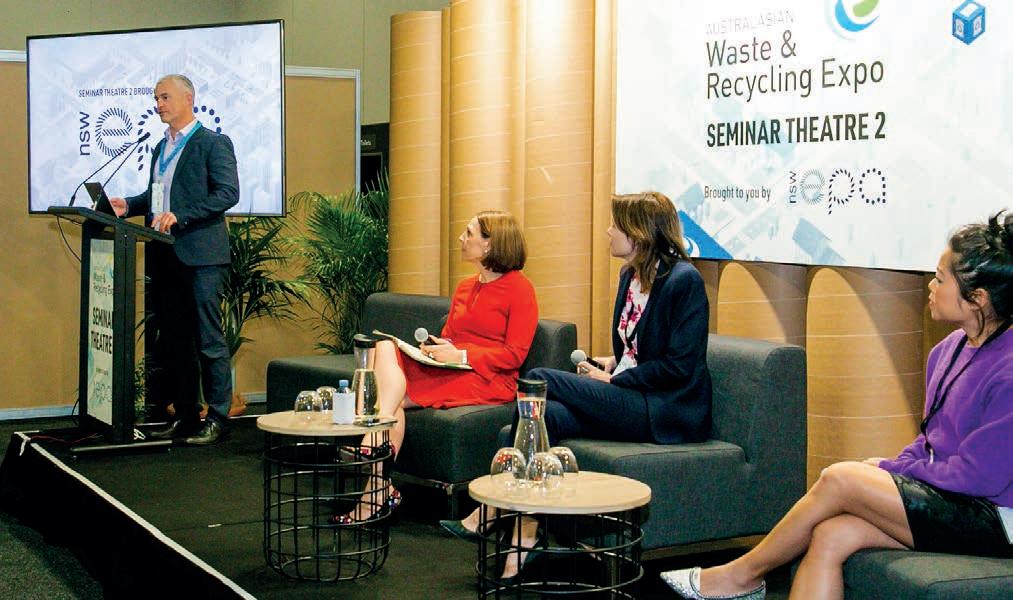
South Sydney Regional Organisation of Council’s strategic lead for resource recovery, Justin Bonsey, hosted the event. He was joined by panellists Gayle Sloan CEO of Waste Management and Resource Recovery Association of Australia (WMRR), Claire Smith, environmental lawyer from Clayton Utz, and Nancy Chang, the NSW EPA’s executive director regulatory policy, initiatives and advice.
One of the starting points was defining the term circular economy.
circular economy
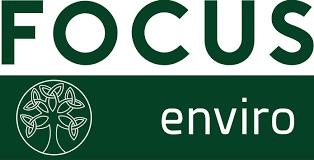
Was it the same as resource recovery?

Not necessarily. For Sloan, it’s not just about what happens at end of use, she said that if you want a truly circular economy it needs to be thought about differently and start at the beginning, what material we select, how we can re-use, repair and refurbish and how we set up systems to do this.
“It’s not about waste. It is changing that paradigm away from waste, which is almost too late to start in the chain,” she said. “We’re not doing anything around consumption or design. If I hear one more time how well we’re doing on that – consumption/sales etc – I’ll cry.
“We need to look at the start of the supply chain, putting obligations on people to design out waste and pollution – having to think differently. We need to start having a national Circular Economy strategy, as opposed to a national waste
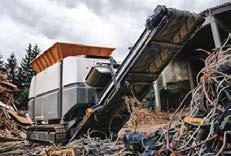
strategy. If we can start thinking about how we drive change and circularity we would go gangbusters over the next 84 months when we need to have 80 per cent diversion in waste and hit our 43 per cent emissions reduction target.”
Is there any legislation in place that currently addresses what a circular economy is, what its parameters are, and how it needs to be implemented to get the best outcome for everybody? The short answer is no.
“We do have a federal piece of legislation called the Recycling and Waste Reduction Act 2020,” said Smith. “And that does have an objective in it, which requires the development of a circular economy that maximises the continued use of products and waste material over their life cycle and accounts for their environmental impacts.


(Continued on page 22)
Should wine and spirit bottles be added to
list?
WHEN the Victorian and Tasmanian governments get their respective container deposit schemes (CDS) in place in 2023, all states and territories will have a system in place whereby consumers can return their empty cans and bottles.
However, now is the time to take it one step further, according to some. Generally, most CDSs accept drink containers including plastic, canned and glass soft drink bottles, in some cases (the ACT being one) cardboard drink containers, and beer bottles.
Missing from the equation are wine/ spirit bottles, plastic milk bottles and cartons, as well as generic plastic and glass jars like those found housing preservatives such as sauces, jams and other spreads.
A who’s who of recycling recently signed an open letter asking the state and territorial environmental ministers, as well as their federal counterpart, to start including wine and spirit bottles in the CDSs around the country.
Signatories of the letter included the Boomerang Alliance’s Jeff Angel, Reloop Pacific’s Rob Kelman, the Australian Beverages Council’s Geoff Parker, the National Retailers Association’s David Stout, Australian Council of Recycling’s Suzanne Toumbourou, and WMRR’s Gayle Sloan. The letter stated:
“Our groups are writing to you to support government action to include wine and spirit bottles in the Container Refund Schemes.
(Continued on page 24)
ISSUE 110 | OCT/NOV 2022
the
INSIDE 28 New NSW EPA CEO 34 IPART and the DWMC 44 Waste Awards Finalists Meet the ZR - Low speed. High torque. Maximum performance. Visit a reference site | Book a trial | Request a free waste audit | info@focusenviro.com.au www.insidewaste.com.au
CDS
PP: 100024538 ISSN 1837-5618
3-Stage Grinding Process
Faster Reduction
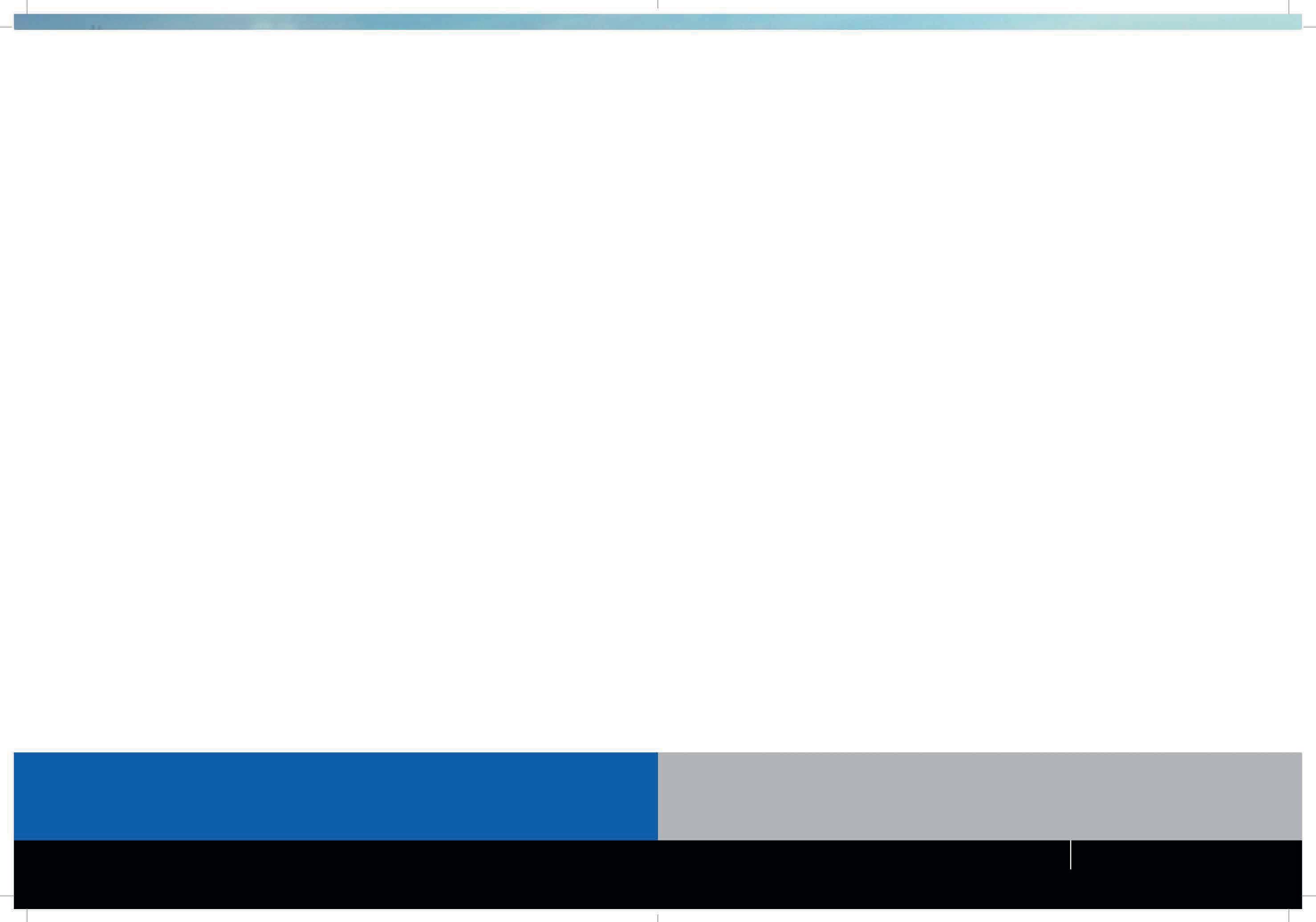
Astec Peterson's powerful up-turn 3-stage grinding process provides better fracturing of material and a more consistent product, giving you just the product your buyers are looking for.
clearing,
tiles, scrap wood,
The Impact Release System
Protects Your Investment
Astec Peterson's patented Impact Release System's air bags provides uniform grinding and protection from contaminated feedstock, a feature unique to Astec Peterson grinders.
The Impact Cushion System
The Second Line of Defence
Urethane cushions and shear pins help protect the mill from catastrophic damage in the event of a severe impact from contaminants in the feedstock.
Astec Peterson offers horizontal grinders from 433-839 kW, offering grinding solutions with output at the lowest cost per ton. Visit us at www.astecindustries.com and see why we have been leading the industry for over 35 years!

Provides
Land
mulch, compost,
asphalt
shingle
biomass,
green waste-we can handle it am
www.komatsuforest.com.au


2710D Horizontal Grinder Portable 6 Efficient Engine 433 kW or 570 kW Length 1612 cm Weight 30900 kg Feed Opening 153 x 81 cm 5710D Horizontal Grinder High Production with Consistent Sizing Engine 722 kW Length 1800 cm Weight 42184 kg Feed Opening 152 x 102 cm Astec - Peterson is represented by Komatsu Forest in Australia and New Zealand, providing industry-leading product support and expertise. 6710D Horizontal Grinder Largest Grinder with Highest Output Engine 839 kW Length 1860 cm Weight 48987 kg Feed Opening 168 x 127 cm Komatsu Forest Pty Ltd. 11/4 Avenue of Ame ricas Newington NSW 2127 Australia T: +61 2 9647 3600 E: info.au@komatsuforest.com Komatsu Forest Pty Ltd
New era for the NSW EPA?
THERE ARE fair few people in the waste industry who don’t look towards the NSW EPA as a friend. It is a government department generally loved by those outside the industry as it is seen as a guardian of keeping Australia clean and green, and coming down hard on those who transgress the laws surrounding the handling and disposal of waste.
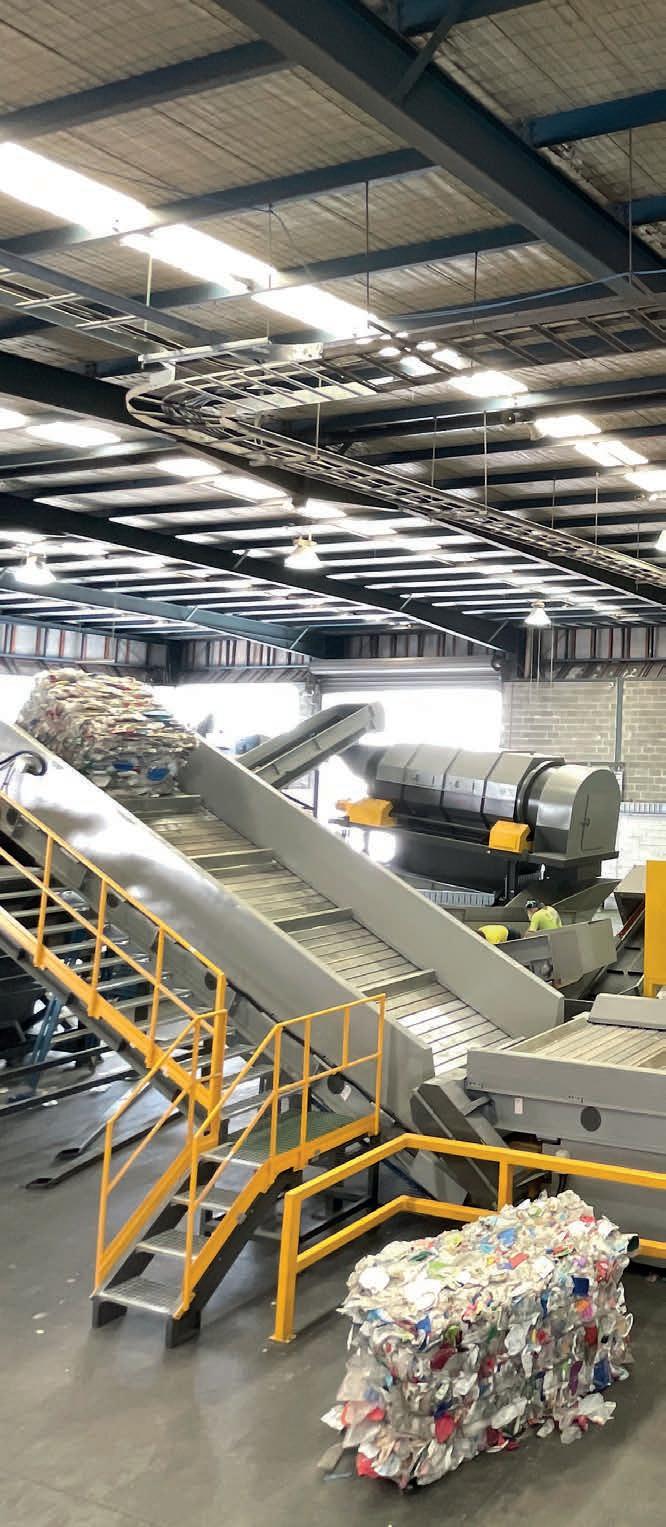
In this issue there are two articles that relate to the state government entity. One is that Tony Chappel has been appointed the new CEO of the entity after taking over from Tracey Mackey three months ago. In an address to attendees at the Australasian Waste and Recycling Expo (AWRE) Chappel said he believed a new era of co-operation is needed if industry is to meet the recovery and reuse deadlines. He also acknowledged that the government can be a roadblock when it comes to building new infrastructure, especially when it comes to regulations. He also talked about transparency, something that he thinks both the EPA and the industry could do better.
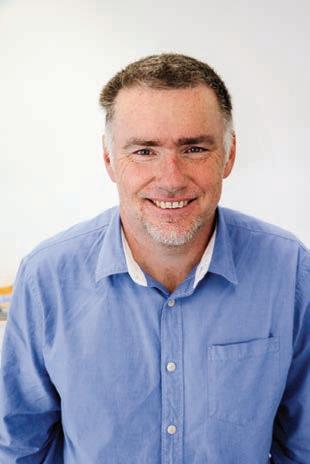
Also, there is a piece on page 26 from regular columnist Gavin Shapiro from Hones Lawyers about some of the
regulatory issues that arise when it comes to who is responsible for what in terms of processing/disposing of waste. He cites a couple of instances where even with the best intentions, some waste operators are caught between a rock and hard place when it comes to being prosecuted by the EPA. In one case, he pointed out that the operator was held liable by the EPA for an incident that seemed to be the fault of a sub-contractor who ignored the Safe Work Method Statements of the operator. While it is intrinsically unfair that an operator is blamed for the actions of a third party, Shapiro points out how important it is that liabilities are spelled out to contractors when engaging them to carry out work on premises.
Finally, the finalists are in for the Waste Innovation and Recycling Awards. We had a record number of nominations, and I can tell you it was a very hard job reducing the number of nominations in each category to the five finalists. It’ll be even harder for the judges to pick a winner, so I don’t envy them that task.
Have a great month.
Creative
John Murphy.
material in Inside Waste
copyright
be reproduced or copied in any form or by any means (graphic, electronic or mechanical including information and retrieval systems) without written permission of the publisher. The Editor welcomes contributions but reserves the right to accept or reject any material. While every effort has been made to ensure the accuracy of information, Prime Creative Media will not accept responsibility for errors or omissions or for any consequences arising from reliance on information published. The opinions expressed in Inside Waste are not necessarily the opinions of, or endorsed by the publisher unless otherwise stated.
no part
Daily news updates at www.insidewaste.com.au Editor’s Note //
Chief Operating Officer Christine Clancy christine.clancy@primecreative.com.au General Manager (Sydney) Terry Wogan terry.wogan@primecreative.com.au Managing Editor Mike Wheeler mike.wheeler@primecreative.com.au Business Development Manager Chelsea Daniel-Young chelsea.daniel@primecreative.com.au Design Production Manager Michelle Weston michelle.weston@primecreative.com.au Design Blake Storey, Kerry Pert, Tom Anderson Client Success Manager Glenn Delaney glenn.delaney@primecreative.com.au Head Office Prime Creative Pty Ltd 11-15 Buckhurst Street South Melbourne VIC 3205 Australia p: +61 3 9690 8766 enquiries@primecreative.com.au www.insidewaste.com.au Subscriptions +61 3 9690 8766 subscriptions@primecreative.com.au Inside Waste is available by subscription from the publisher. The rights of refusal are reserved by the publisher Articles All articles submitted for publication become the property of the publisher. The Editor reserves the right to adjust any article to conform with the magazine format. Copyright Inside Waste is owned by Prime
Media and published by
All
is
and
may
GENOX WASHING PLANTS. INTELLIGENT, COST-EFFECTIVE PLASTIC RECYCLING SOLUTIONS. THAT’S APPLIED THINKING. Genox Washing Plants are high performance recycling systems for rigid or flexible plastics from various sources, including materials with high contamination levels. These modular systems are capable of processing general plastics including HDPE and PET bottles, PP woven bags and PE film (post-consumer or agricultural). Call: Email: Visit: 03 9706 8066 sales@appliedmachinery.com.au appliedmachinery.com.au genoxmachinery.com.au 4 INSIDEWASTE OCTOBER/NOVEMBER 2022
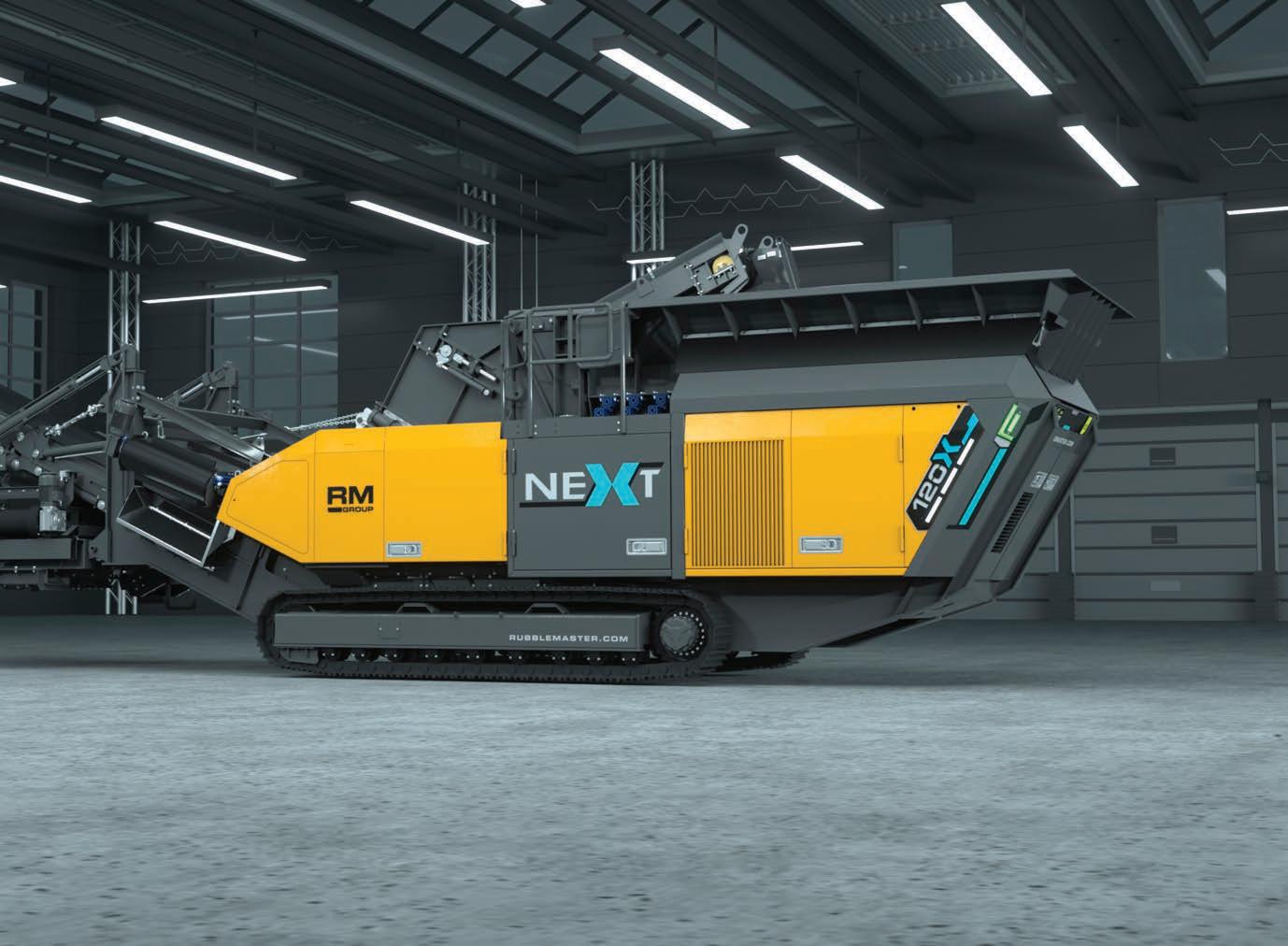

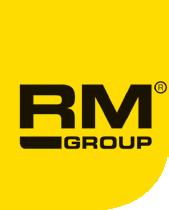


Michael | 0417 281 795 Paul | VIC, SA & TAS | 0488 012 384 Chris | NSW, QLD & NT | 0488 288 374 RUBBLE MASTER 120X triconequipment.com.au This impact crusher boasts the best ratio of weight to throughput capacity, combined with equipment perfectly matched to each application, promising maximum flexibility. The operator can also monitor the status of the machine without leaving the cab. SAFE, POWERFUL & FLEXIBLE Call 1300 859 885 for more information Michael | 0417 281 795 Paul | VIC, SA & TAS | 0488 012 384 Chris | NSW, QLD & NT | 0488 288 374 ARJES IMPAKTOR 250 EVO This double-shaft shredder is best-in-class for processing construction and demolition waste, wood, tyres and plastics. COMPACT, MOBILE & EFFICIENT triconequipment.com.au Call 1300 859 885 for more information
When you’re building a business, reliability is everything.
Since Isuzu Trucks launched in Australia half a century ago, generations of businesses have relied on our trucks to deliver, day-in and day-out. As they’ve grown, we’ve grown along with them to become Australia’s number one truck brand. And we’ll be right here helping build businesses for a long time to come, because we know that reputations are riding on us. To find out how Isuzu can help you grow, visit isuzu.com.au
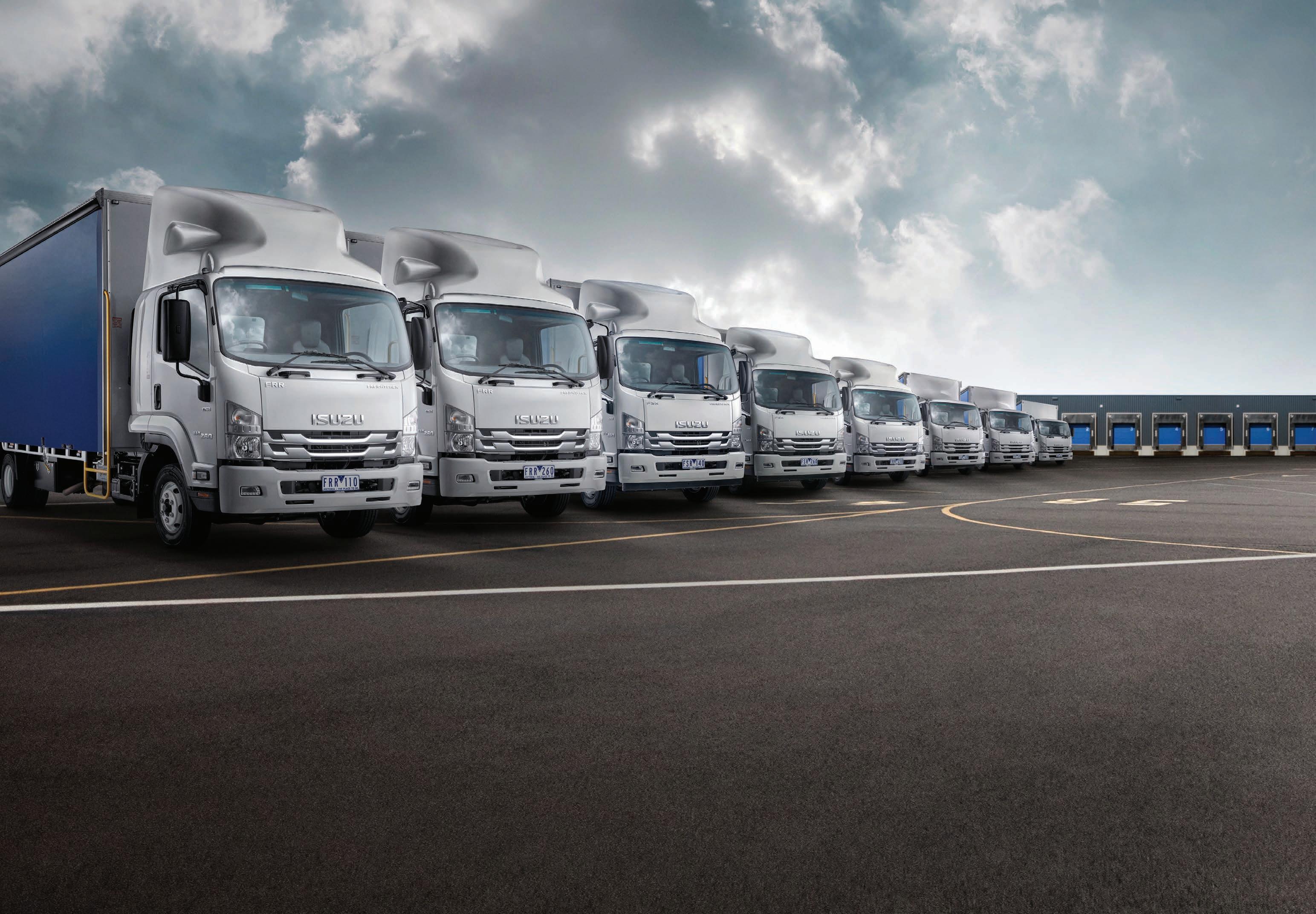
50 YEARS OF ISUZU TRUCKS
FSA/ISZS1160

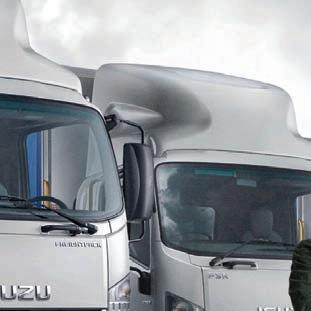


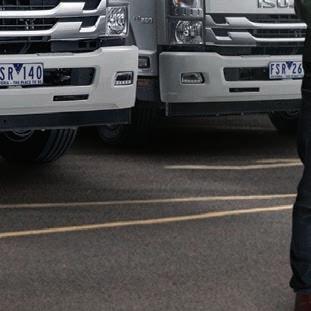





Veolia-Opal-Masdar Tribe bottom ash recycling facility approved
VEOLIA-Opal-Masdar Tribe’s $8 million bottom ash recycling facility has been approved by EPA Victoria. The first facility of its kind to be approved for construction in the state, it will be located with the Maryvale Energy from Waste (EfW) facility.
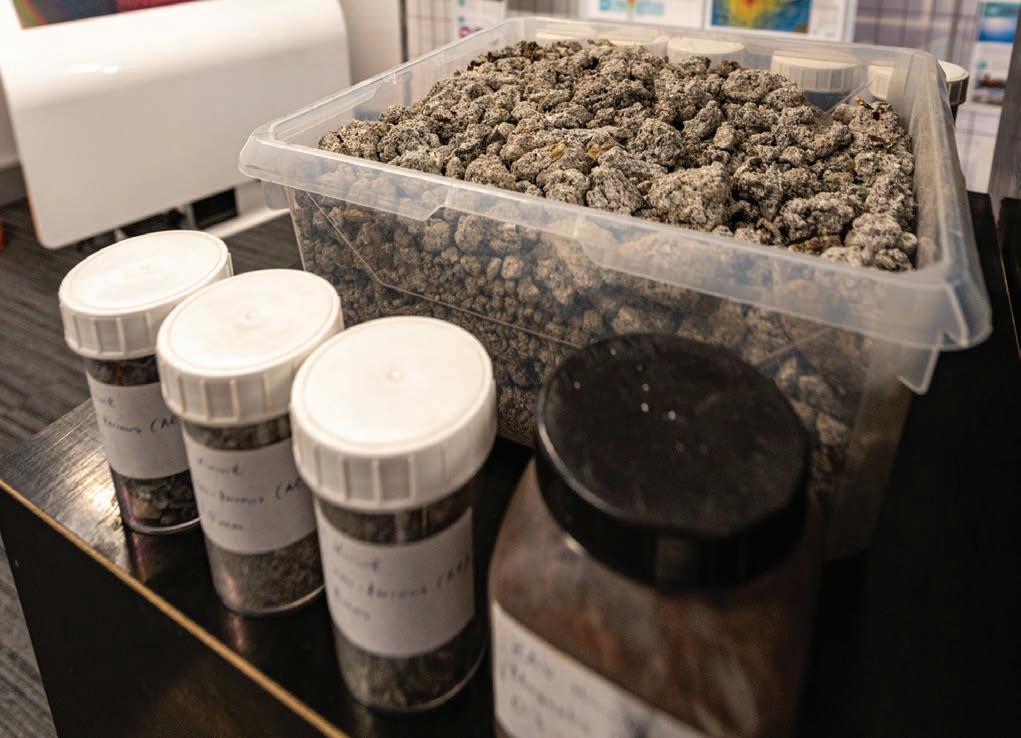
It will process bottom ash, recovering a range of metals before transferring them for recycling. The remaining inert materials will be suitable for processing in the manufacture of Maryvale Recycled Aggregate (MRA), a product that can be used in road construction. MRA is a lightweight recycled aggregate, unique to the Maryvale EfW facility.
The recycled aggregate will be aligned with VicRoads Class 3 and Class 4 aggregate performance standards, which are used in Victorian road construction.
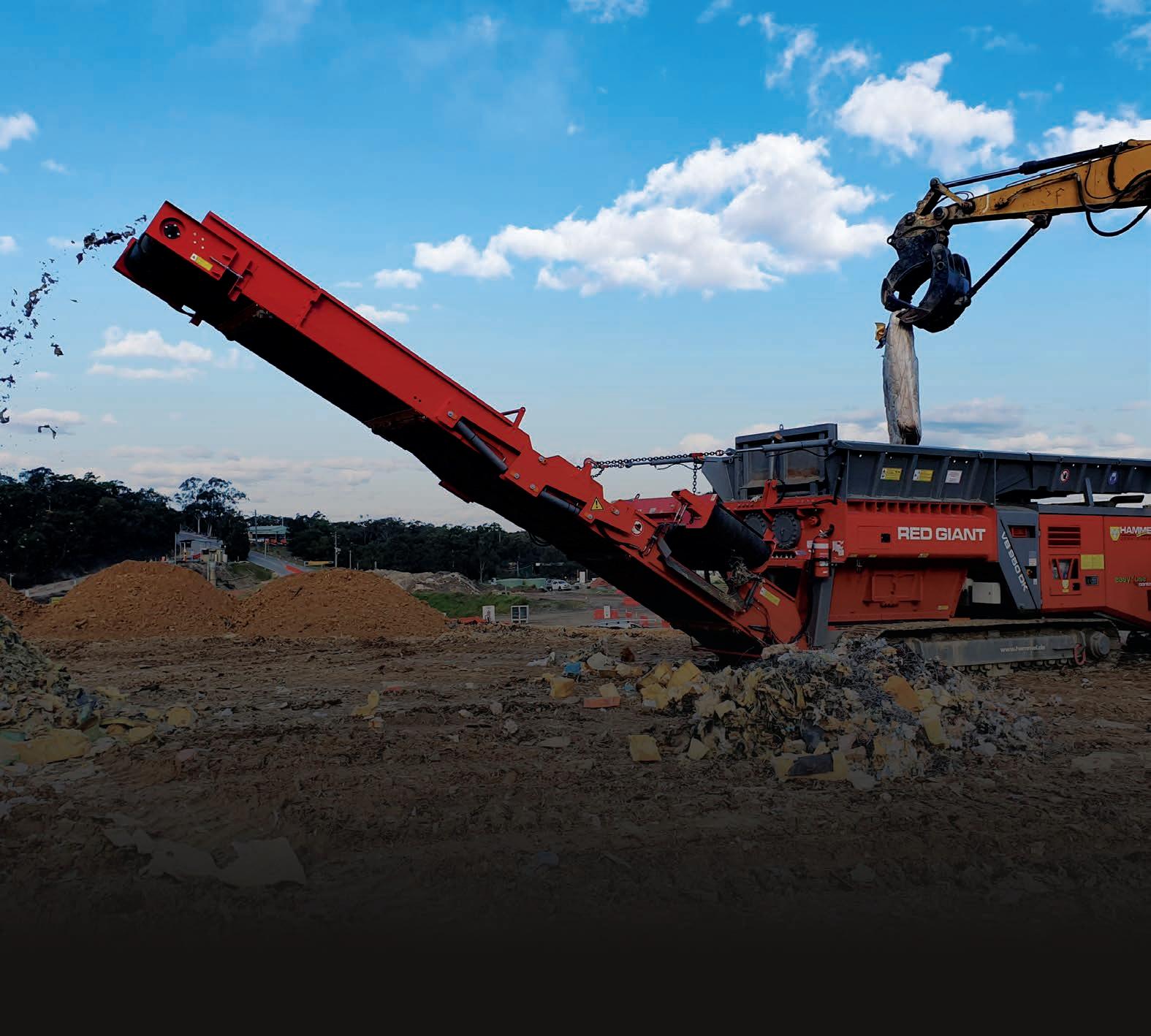
During construction, the facility is expected to create 25 jobs. Once operational, the facility is expected to support 10 direct ongoing roles.
These would be in addition to the hundreds of direct and flowon Victorian jobs supported by the waste,” said Mayberry.
“Of the 325,000 tonnes of waste
David Jettner, Opal’s General Manager Corporate Development
innovative and emerging industries to the region,” said Jettner. iw
Reusable plastic bags being phased out by Woolworths
SOUTH Australia will be one of the first states to voluntarily phase out 15-cent reusable plastic shopping bags across Woolworths stores and online orders, following the retailer’s commitment to phase out the bags nationwide – a first for a major national supermarket. The change will also simultaneously take place in the Northern Territory.
Over the coming weeks, the supermarket will gradually run down stock of the reusable plastic shopping bags across South Australia and the Northern Territory, in a move that will see more than 916 tonnes of plastic removed from circulation annually.
Eight in every ten Woolworths customers already bring their own bags when they shop, and the retailer is continuing to encourage customers to bring their own bags to boost sustainability, rather than buying them in store. Woolworths’ paper bags made from at least 70 percent recycled paper will remain available to those who need them.
“Bringing your own bags is the very best outcome for the environment, and we encourage our customers to keep up the great work,” said Woolworths’ Assistant State General Manager for SA, Elisha Moore. “Paper bags will continue to be available for
those who forget to bring their own – but ultimately we want to sell less bags altogether.”
Woolworths will provide advanced notice and reminders via email, advertising and signs in store. Woolworths already offers customers reminders to bring their own bags, including signs in supermarket car parks and the option to turn on a reminder message in the Woolworths app.
Following the gradual phase out of the bags, Woolworths will continue its transition away from reusable plastic shopping bags state-by-state, committing to removing the bags from
its network nationwide by end of June 2023.
Stores in Western Australia have already removed these bags from sale in response to state legislation earlier this year.
The paper shopping bag that will remain available to customers is designed to be reused, can carry up to 6kg of groceries and can be easily recycled at home through kerbside recycling.
All paper used is sourced responsibly and is certified by PEFC or FSC, to give shoppers confidence their purchase supports sustainable forest management. iw
Daily news updates at www.insidewaste.com.au8 INSIDEWASTE OCTOBER/NOVEMBER 2022 News //
The new facility will produce aggregate for road projects in Victoria.


Waste Expo Australia set to return late October

Get clarity with Cooee



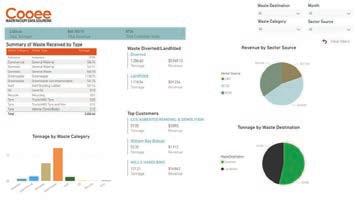
WHEN it comes to waste production, Australia is amongst the top developed countries in the world to contribute – responsible for more than 76 million tonnes of waste on a yearly basis – a figure that continues to rise.
As Australia’s waste issues continues to escalate, legislation, better funding and implementation of thorough policies will help to shift the dial and provide a much-needed framework that outlines ways to improve infrastructure, increase recycling rates, tackle food and organic waste, and support better waste management reduction, recycling, and re-use initiatives.
At a crucial turning point for the industry, Waste Expo Australia returns to Melbourne on October 26th and 27th, delivering insight into the latest developments in managing waste and recycling, and covering the pertinent issues impacting the waste and recycling sector.
“Waste Expo is all about collaboration, and this year, the event will provide an opportunity to bring the industry back together in person. The Expo is designed to enable attendees to hear about innovative solutions, and how they can transform
their operations, and gain practical information and insights at the highcalibre conference. There is no other event in Australia that gives you the opportunity to hear from some of the biggest names in the industry and do business with leading suppliers for free,” said Robby Clark, Portfolio Director for the Energy & Waste Portfolio for Reed Exhibitions, who is putting on the Expo.
The free-to-attend conference and exhibition is the country’s largest gathering of waste management and resource recovery professionals. The show floor features over 100 exhibitors showcasing their solutions, with a conference featuring over 70 industry speakers who will deliver key insights on industry innovation, updates on policy and regulation, and case studies with practical and tangible solutions from industry experts who are shaping the future direction of waste and recycling in Australia.
Waste Expo Australia will once again be held in partnership with the Waste Innovation & Recycling Awards. Recognising excellence across waste and resource recovery, the awards will take place on Wednesday 26 October. iw
Daily news updates at www.insidewaste.com.au10 INSIDEWASTE OCTOBER/NOVEMBER 2022 News // Is your Cooee intuitively captures real-time data, saving time and money with easy reporting via customisable dashboards. Accurate data drives good decisions, so you can check waste quantities and revenues at a glance, seamlessly manage tip passes and even work in off-line environments. Call us on 0447 393 363 or visit us at cooeedata.comWe can help for small to medium landfills and transfer stations
The Waste Expo is a great time to see the latest innovations in the waste industry.

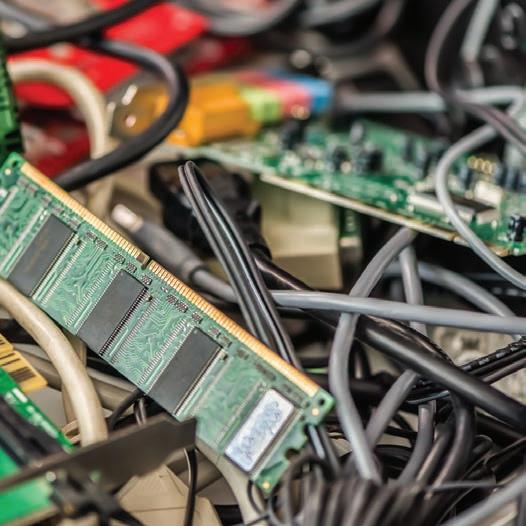


Woolies and Pact looking to partner on packaging
WOOLWORTHS Group and Pact are working to establish a new partnership to boost circular packaging, which could see up to 18,000 tonnes of recycled plastic used in Woolworths’ own brand packaging each year.
Woolworths Group is committed to removing plastic from packaging wherever it can, already removing more than 5,800 tonnes of virgin single-use plastic and packaging from its own brand range in FY22.
Where there is currently no viable alternative to plastic for food safety or quality, the company is working to use recycled plastic to reduce the environmental impact. The partnership being developed between Woolworths Group and Pact is expected to represent a multimillion-dollar investment in local recycling and manufacturing capacity. Projections that the partnership could see 18,000 tonnes of newly made plastic replaced with locally produced recycled plastic each year would relate to an estimated decrease in carbon emissions of almost 25,000 tonnes (equivalent to planting more than 37,000 trees) and a saving of almost 500 Olympic swimming pools-worth of water annually.
The intent of the proposed partnership is to establish Pact as Woolworths Group’s key strategic partner by volume in its efforts to deliver more sustainable packaging across its own brand range and deliver a boost to date towards Woolworths
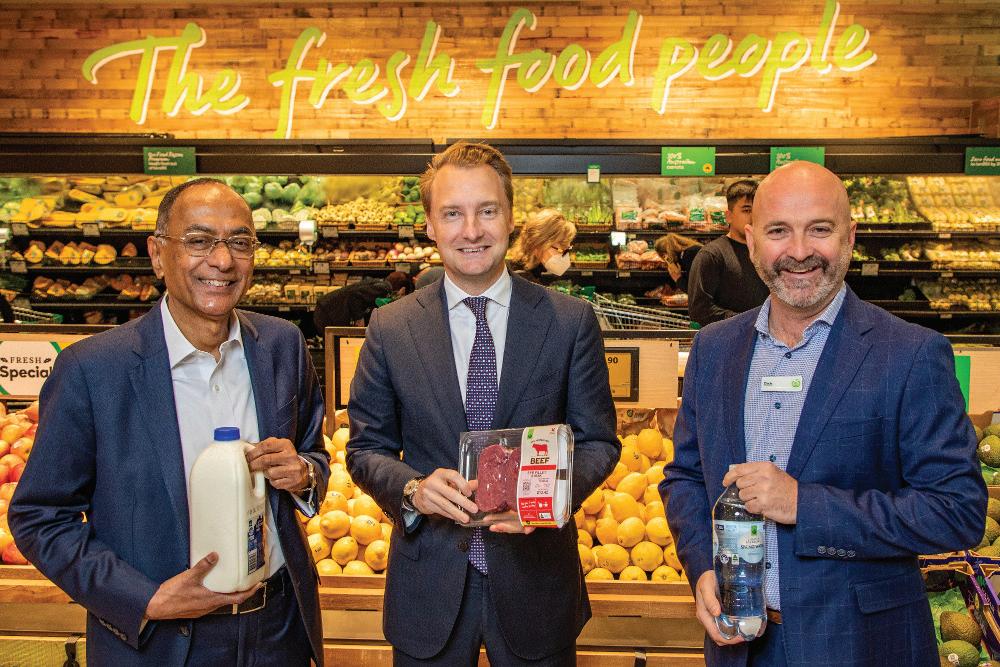
Group’s goal to halve the use of virgin (new) plastic across its own brand packaging by 2024.
Under the proposed partnership, Pact will use recycled plastic to make more sustainable packaging for products across Woolworths’ product range, including in milk bottles, meat trays and beverage bottles, drawing on plastic collected from household recycling and container deposit schemes. Pact currently operates five plastic recycling facilities in Australia, including the recently opened PET recycling plant in Albury-Wodonga, which can recycle up to 1 billion PET beverage bottles a year. Another four facilities are planned for construction by 2025.
Woolworths Group managing director of Format & Network Development, Rob McCartney, oversees Woolworths 360 – the business’ sustainability innovation engine responsible for the development of the partnership.
“As Australia’s largest retailer we have a responsibility to make the products our customers put in their shopping baskets better for the environment,” he said. “We’re working hard to remove plastic from packaging like our bakery trays, however it can be necessary to protect quality and food safety in some products – which is why replacing it with recycled plastic is the next best thing.
“Across the scale of our range, the real challenge is sourcing quality
recycled material in the volumes we need and ensuring it’s coming from within Australia to support the development of our local circular economy and avoid shipping emissions.
“We’re working with Pact on a partnership that would propel us closer towards our sustainable packaging goal than we’ve ever been before, while also helping to grow the Australian recycling industry to meet demand in the years to come.”
“We know that consumers and businesses are increasingly demanding recycled and recyclable plastic packaging and Pact is working with committed partners like Woolworths Group to drive that change,” said Pact
Coffee cups and lids
“must be banned”
PLASTIC, single-use coffee cups and lids are a litter and waste problem in Australia, and have been for the past 30 years so must be banned, according to a spokesperson from the Boomerang Alliance of 55 environment NGOs. With over 1.8 billion coffee cups and lids littered or landfilled every year, it’s urgent to make the switch to reusables.
‘’We are proposing a national policy to Environment Ministers, based upon actions already being taken overseas making reusable coffee
cups and lids commonplace. We want to see plastic coffee cups phased out in Australia by 2024, every cafe offering or selling reusable cups and lids, and a levy imposed on all disposable coffee cups and lids,’’ said Toby Hutcheon, National Campaign Manager.
‘’Already, some states are moving with Western Australia banning plastic coffee cups in 2023 and Queensland also promising action. Our plan is practical with a transitional pathway and takes the move national.”

In the next two years plastic coffee cups and lids will be subjected to new rules around being banned across the European Union and the UK. They are recognised as a waste and litter problem across Europe. Some countries, such as Germany, are introducing laws that require all cafes to offer or sell reusable cups and lids. Other countries are planning a levy on all disposable cups and lids. Fast food chains such as Starbucks are introducing reusable coffee cups in all their European restaurants (and
Group CEO and managing director, Sanjay Dayal. “Plastic packaging that is designed effectively, that is recyclable and recycled properly in Australia can be used again and again, creating a truly local circular economy for plastics.”
In addition to its recycling facilities, Pact is also investing $76 million to install new technology and equipment across its packaging manufacturing facilities as it continues to grow local capacity to support increased use of recycled plastic in Australian packaging.
The investment is supported by a $20 million grant from the Australian Government through the Modern Manufacturing Initiative. iw
in other parts of the world, but not Australia).
‘’There have been false claims made against the use of BYO coffee cups under COVID restrictions. However, making the switch to reusable coffee cups and lids is one of the most obvious, safe options anyone concerned with plastic pollution and litter prevention can make. What we need is for all our governments not just to support reusables as they all do, but to actively intervene to get action,’’ Hutcheon said. iw
Daily news updates at www.insidewaste.com.au12 INSIDEWASTE OCTOBER/NOVEMBER 2022 News //
Left to right: Pact Group’s Sanjay Dayal, NSW Environment Minister James Griffin, and Woolworth’s Rob McCartney.
London, Oslo and Dublin Rely on Our Energy-from-Waste Technology.
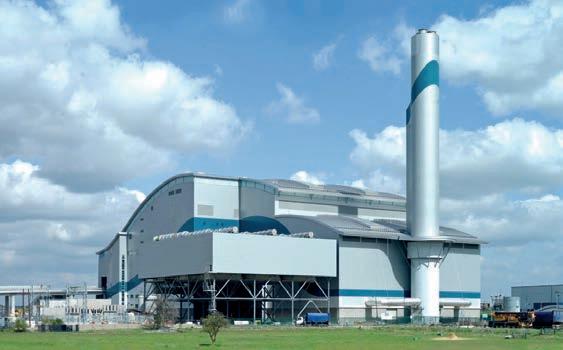
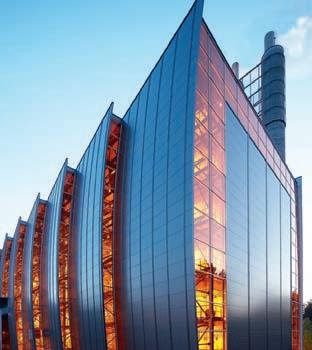

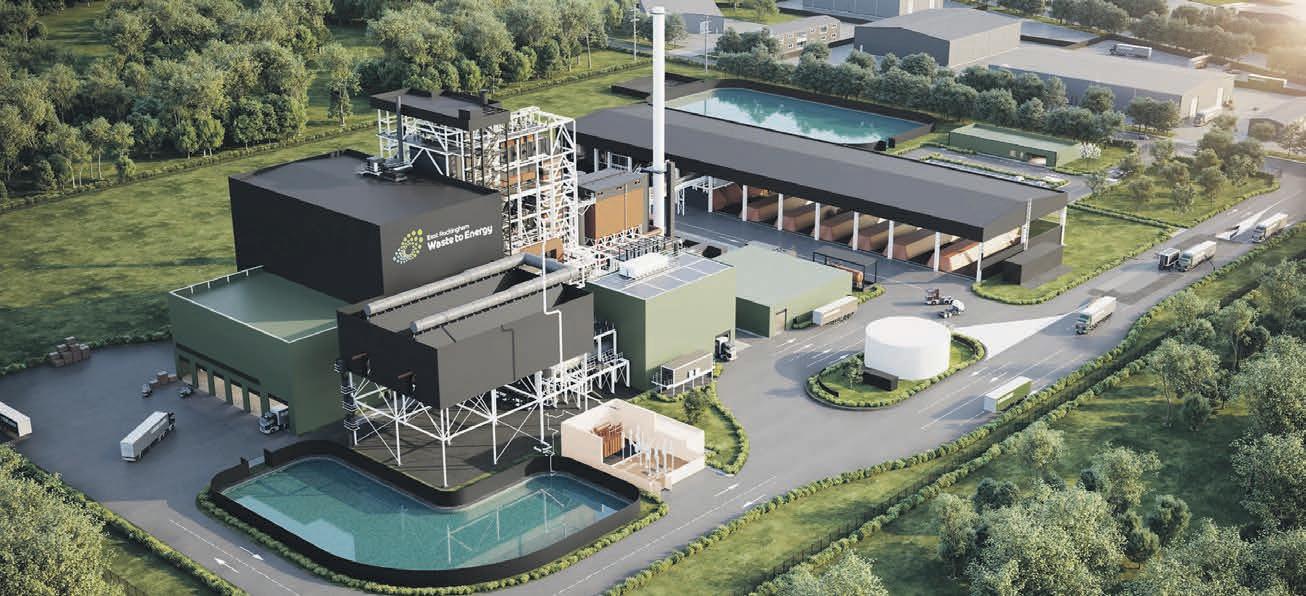
So Does Perth.
to be able to

Our solutions are based on efficient and environmentally sound in-house technology, and cover the entire life cycle of an Energy-from-Waste facility. Our proven technologies have been part of more than 700 plants worldwide. As a global leader in energy from waste we are proud
say: We deliver. Check our references. Waste is our Energy www.hz-inova.com
Oslo, Norway Dublin, IrelandLondon, United Kingdom Rockingham, Australia
The trend today is to build lighter waste collection trucks that save fuel and have higher load capacities. This puts special demands on the steel, which must resist corrosion from acidic waste. Hardox® HiAce is developed specifically for these types of aggressive loads. At lower pH levels, Hardox® HiAce can extend service life by up to 3 times in comparison with a conventional AR400 steel. Test has also showed that Hardox® HiAce can outperform ordinary stainless steel, such as SS304 by almost 20%.
Don’t be surprised by unexpected corrosion. Secure your equipment’s service life with Hardox® HiAce for acidic environments. Learn more at hardox.com.

Contact SSAB Brisbane. Melbourne. Perth G1, 28 Balacalva Street Woolloongabba, QLD 4102 australia@ssab.com hardox.com
Wetherill Park waste



A stockpile of unprocessed waste that posed a fire risk has seen the Cleanaway Resource Co Resource Recovery Facility Pty Ltd in Wetherill Park fined $15,000 by the NSW EPA for allegedly failing to store waste in a competent manner.
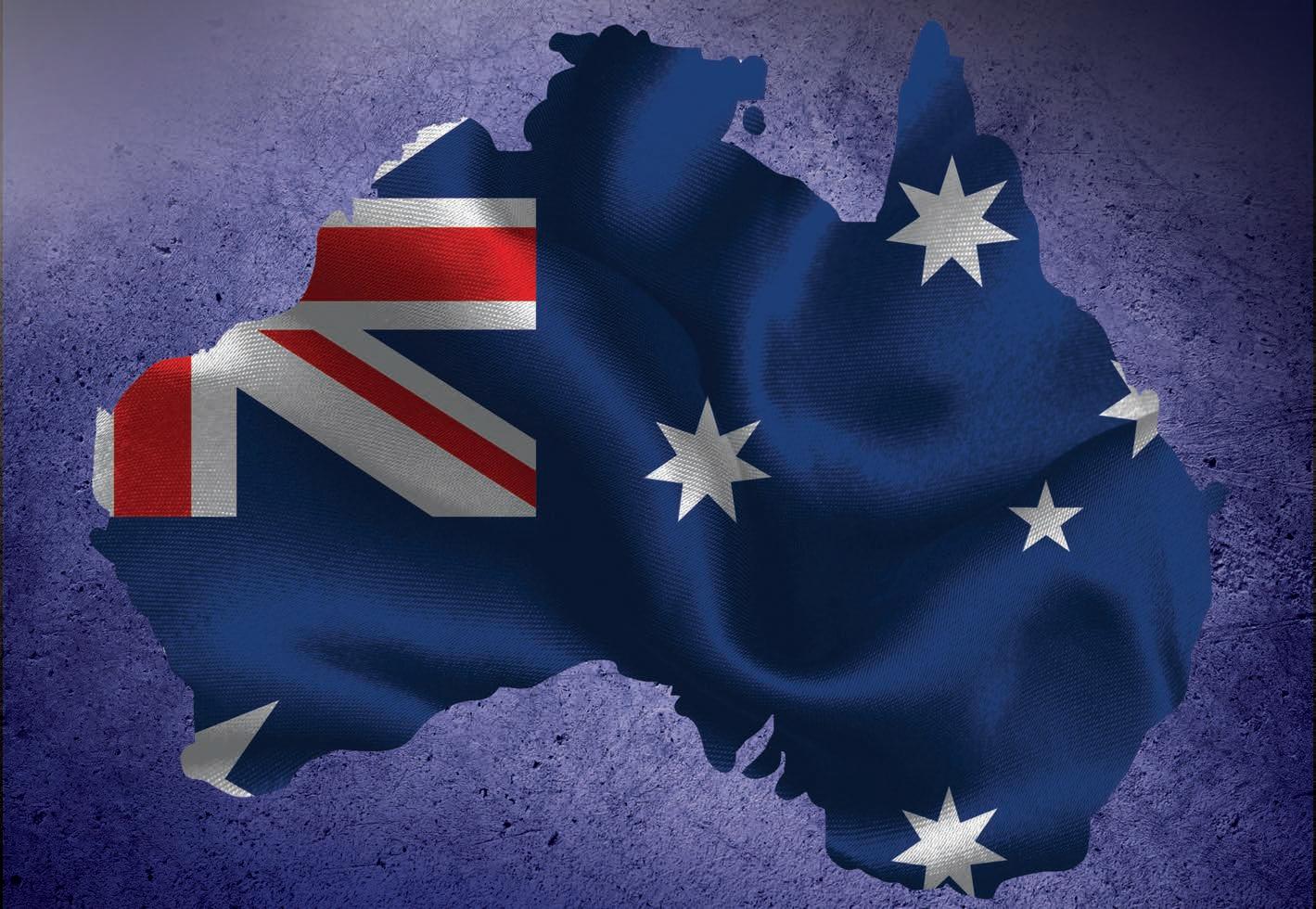
The facility accepts general solid waste (non-putrescible), which includes such items as timber, plastics, plaster, paper and cardboard which is then processed into a combustible waste material to be used as a fuel.


EPA officers inspected the facility on 4 November 2021 following a complaint about dust emissions coming from the plant.
The EPA offers found a stockpile of unprocessed waste that was in excess of 2400m3 inside a building at Wetherill Park, which was allegedly
blocking fire escapes and firefighting equipment, which was said to increase the risk of a fire within the facility.
On 10 November, the EPA issued a Prevention Notice to the company to stop it from accepting waste until the stockpile of unprocessed waste was made compliant with industry guidelines designed to minimise fire risks in indoor waste facilities.


A $15,000 Penalty Infringement Notice is the largest fine the EPA can issue under its legislation.


Prosecutions is just one of a number of tools the EPA can use to achieve environmental compliance and includes things such as formal warnings, official cautions, licence conditions, notices and directions. iw















The company was fined $15,000 for not storing waste in a competent manner.



































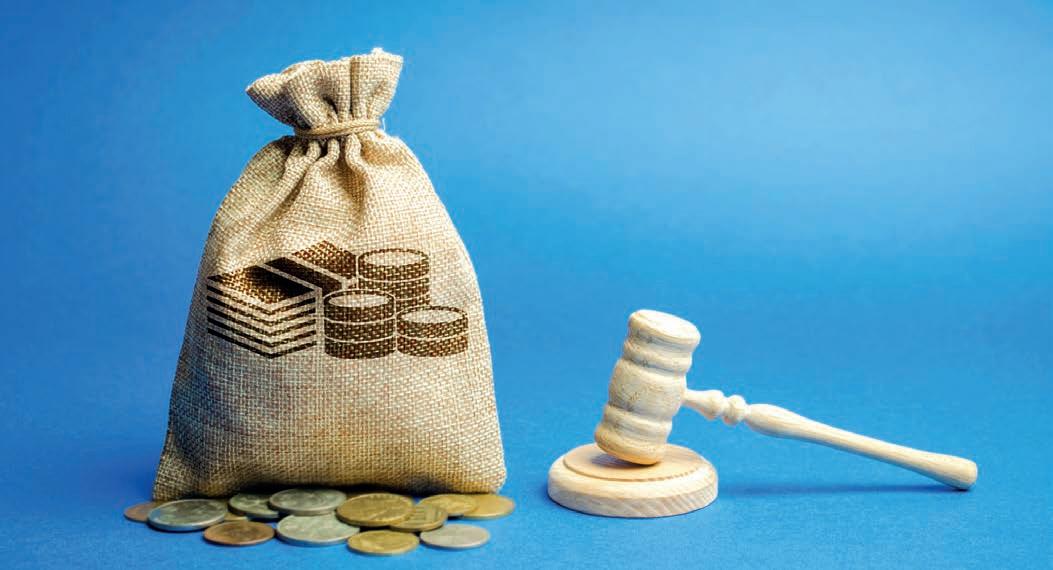
Daily news updates at www.insidewaste.com.au OCTOBER/NOVEMBER 2022 INSIDEWASTE 15
facility fined $15,000 // News NSW, ACT & WA Tony Miller 0429 444 451 tony@garwoodinternational.com.au VIC, TAS & SA Ian Pinney 0409 905 451 ian@garwoodinternational.com.au QLD & NT Daniel McHugh 0407 789 370 daniel@garwoodinternational.com.au NEW ZEALAND Andrew Schoer 0413 751 292 andrew@garwoodinternational.com.au A proud Australian-owned family business, Garwood International has been at the forefront of specialised waste collection & compaction equipment design and manufacture for over 45 years, providing high quality, innovation equipment solutions to meet the needs of even the most challenging operating environments. • Rear, Side & Front Loading compaction units • Single and split-body collection vehicles from 4m2 to 33.5m2 • VWS Enviroweigh bin weighing equipment for refuse vehicles AVAILABLE EXCLUSIVELY FROM: www.garwoodinternational.com.au AUSSIE! AUSSIE! AUSSIE! DESIGNED & BUILT OWNED TOUGH
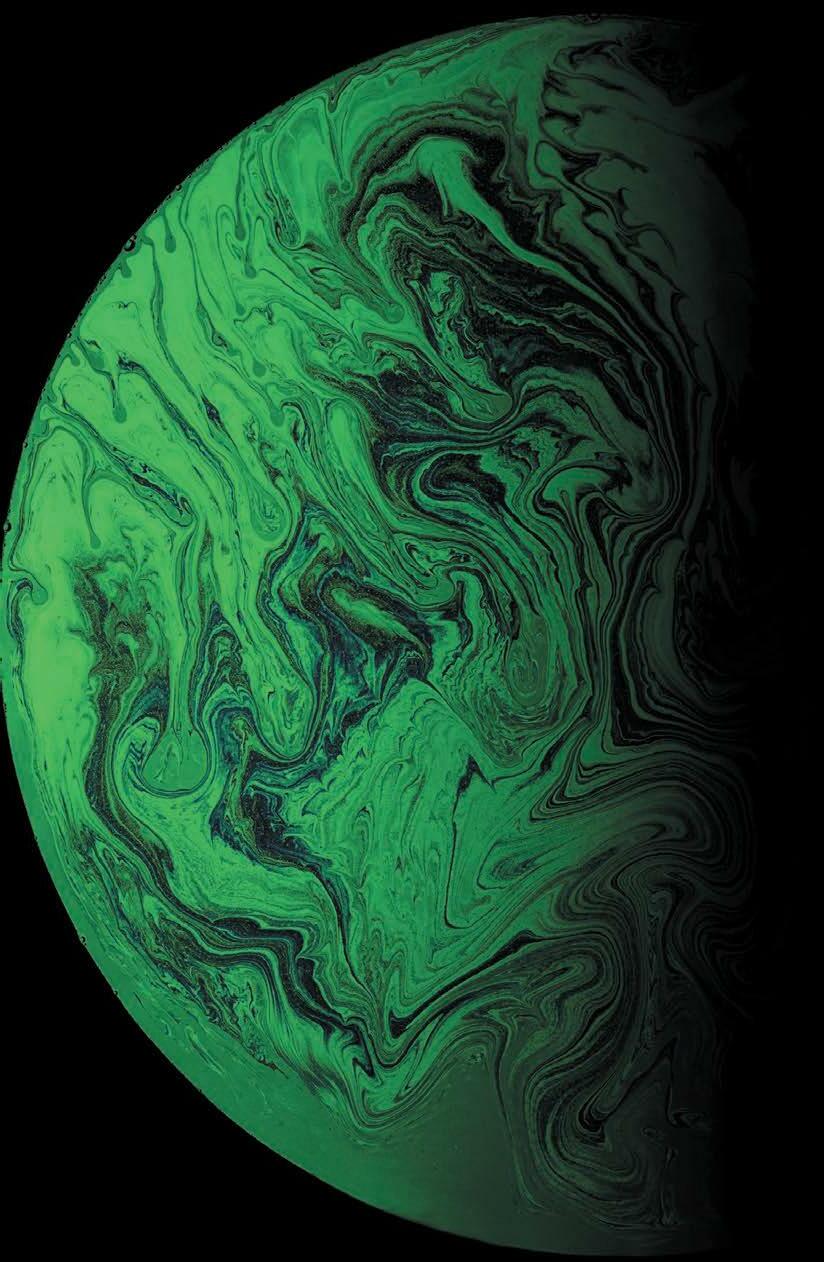
resourceco.com.au TOMORROW’S SOLUTIONS. TODAY • Construction and Demolition Waste • Commercial and Industrial Waste • Tyre Recycling • Energy from Waste • Complete Material Solutions • Circular Economy Carbon Abatement Since 1992, we have repurposed over 60 million tonnes of waste. We are in the business of resource recovery –transforming waste into usable products. Find out what we can do for you.
Huge fine for man after providing false information to EPA

FORMER Royal Demolition and Excavation Pty Ltd director Maher El Masri has been given a fine of $30,000 and ordered to pay $10,000 in legal costs by Parramatta Local Court. El Masri pleaded guilty to providing false and misleading information to the Environment Protection Authority (EPA) as part of its investigation into waste offences.
The fine follows an investigation by the EPA after it was alerted in August 2019 to alleged illegal dumping at a Rossmore property.
When EPA officers inspected the property, which was not permitted to receive waste, they found stockpiles of material.
EPA officers, supported by NSW Police, then observed a truck dump waste at the property, which included bricks, timber, concrete, metal, plastic, terracotta pipes and asbestos.
The truck was registered to Royal Lion Transport Limited, a company owned by El Masri’s former business partner, Eman Masri.
On 4 September 2020, the EPA issued a statutory notice to El Masri for information and records regarding the truck attending the property.
On 20 September, the EPA received a response to the Notice from El Masri who made three false statements, namely: that he personally drove the
truck, the truck was at the premises to remove timber, and that no material was delivered to the property.
On 5 August 2022, El Masri pleaded guilty to the provision of false and misleading information to the EPA.
The EPA was alerted to the alleged waste dumping at a property in Rossmore.
He was fined $30,000, ordered to pay the EPA $10,000 in legal costs, as well as having to publicise the offence in the Liverpool City Champion local newspaper within 28 days. iw

Maximise Recovery... Reduce Landfill Costs
Superior Equipment
ServiceInnovation Support Testing
Eriez equipment enables the recycling industry to maximise the recovery of mixed metals from comingled waste, in turn increasing product purity to achieve the highest value.

Daily news updates at // News




WA govt gives carrot to councils to use recycled C&D
WA councils will receive a financial incentive to use recycled C&D waste in civil projects.


The WA $350,000 Roads to Reuse: Local Government Incentives Program provides a payment of $5 per tonne of product used by local governments and sourced from accredited suppliers.
Payments are capped at $35,000 per local government, equating to 7000 tonnes of product, and issued on a ‘first come first served’ basis.
The initiative was announced by Reece Whitby, Environment Minister, at the recent Waste & Recycle Conference 2022.
“Recycling construction and demolition waste is a priority for the Government and can play an important role in achieving the state’s material recovery targets and a more



circular economy,” Whitby said. “The use of recycled products can be very cost effective, while delivering time, labour and water savings during construction on top of significant environmental benefits.”
The incentive scheme is a State Government initiative developed by the Waste Authority and the Department of Water and Environmental Regulation, in partnership with Main Roads WA, the Department of Health and the Waste and Recycling Industry WA.
Main Roads has used more than 100,000 tonnes of ‘Roads to Reuse’ recycled products in the Kwinana Freeway widening project, as well as the Leach Highway and Tonkin Gap projects, and plans to increase use even more. iw
Daily news updates at www.insidewaste.com.au OCTOBER/NOVEMBER 2022 INSIDEWASTE 19 // News
Heavy duty floor topping & repair system for waste handling sites Call us for more information NO DOWNTIME FLOORING 02 8840 8888 enquiries@ascoatings.com.au | www.ascoatings.com.au > Leachate Resistant > Industrial Strength > High Impact Rating > Rapid Cure Times > Joint Repairs The program provide $5 per tonne of recycled product used by local governments.
news
On Australia’s WARR-path to a circular economy
IT’S been four years since WMRR launched its circular economy conference, and this year, ENVIRO returned, in Canberra, home to a federal government that has made significant climaterelated commitments in just over 100 days office.
Environment Ministers will meet for the second time this year on 7 December, following the first 2018 Meeting of Environment Ministers (MEM) in April, which was in part a response to the import restrictions driven by China’s National Sword Policy and the effects this policy has had across the Australian waste and resource recovery (WARR) industry. Key decisions derived from the April MEM include:
•Reducing waste generation, endorsing a target of 100% of Australian packaging being recyclable, compostable or reusable by 2025, and developing targets for recycled content in packaging.
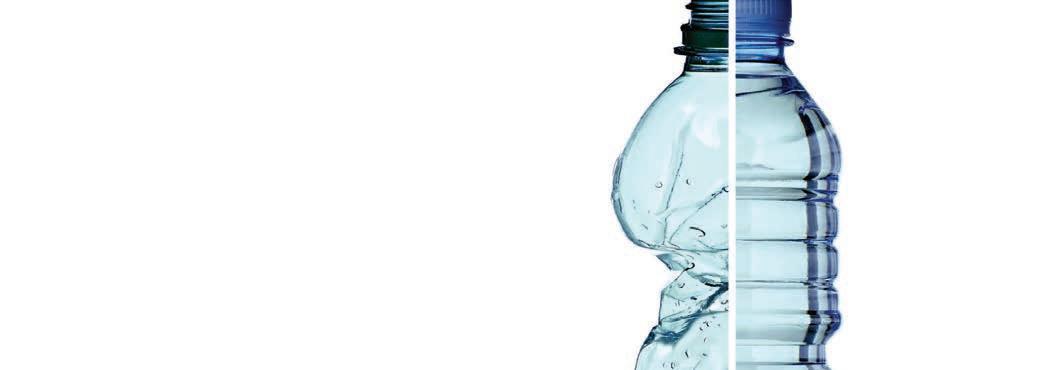
• Increasing Australia’s domestic recycling capacity.
• Increasing the demand for recycled products.
When we reflect on the conversations that we are having today, we have come a long way. Sustainability no longer simply equates to recycling. Increasingly, we are seeing greater understanding that sustainability starts with material and how we manage it – moving rapidly up the waste management hierarchy and including the entire supply chain, with greater (though arguably, far from enough) consideration of issues such as consumption, product design and the direct impact these have on carbon emissions.
• Exploring opportunities to advance waste-to-energy and waste-to-biofuels.

emerging that five key material streams must be focused on globally if we are serious about tackling climate change, being – food, construction, transport, textiles, and fossil fuel extraction (plastics). Other than food, Australia does not have a national strategies for these materials. It’s time Australia rethought this, and moved from traditional thinking, to develop robust regulatory and national policy frameworks for these specific materials streams.
industry however the Queensland Government has embarked on the development of a waste management strategy underpinned by a waste disposal levy to increase recycling and recovery and create new jobs. The State will re-introduce a $70/ tonne landfill levy in March 2019. There are also strong attempts to use policy levers (levy discounts and exemptions) to incentivise the use of recycled material and make it cost competitive with virgin material. However, little has been done to establish new markets and Government has not taken the lead in the procurement of recycled material. There are grants available for resource recovery operations in Queensland although no monies have been allocated to assist in 2018. This is troubling as Queensland rolled out its Container Refund Scheme on 1 November, which will likely impact the cost and revenue models of the State’s MRFs – as we have seen most recently in NSW.
We saw that better research and data continues to be developed and published on the net benefits of moving to a circular economy, and there are several circularity metrics that should be measured. One that all countries, including Australia, remains fixated on, is carbon emissions. This is an exciting area of development because in quantifying accurately the direct and indirect benefits – jobs, environment, economy – of emissions abatement, we will be able to drive greater policy certainty and circular business model disruption. It really is time that we did our own Circularity Gap report for Australia.
WESTERN AUSTRALIA
•Updating the 2009 Waste Strategy by year end, which will include circular economy principles.

It is time to take stock and examine what has been achieved since these decisions were announced. Now, seven (7) months may not seem like a long time, however in that time we have seen further markets close (Malaysia, Indonesia, Vietnam) and if you are an operator under continued financial stress, seven (7) months could make or break you.
The new federal government has moved quickly on carbon, announcing a review of the ACCUs led by Professor Ian Chubb, consulting on options to reform the Safeguard Mechanism to tackle emissions in line with climate targets. It feels great to be talking openly about carbon and climate change. I believe that this government has its eye on the right thing – finding ways to enable emitters to take ownership of, and reduce their emissions, be it through baselines or incentives. However, these initiatives need to be aligned and integrated. A one-size-fits-all approach to earning ACCUs through the Emissions Reduction Fund (ERF) is unviable given not all emissions nor emitters are the same (e.g., carbon dioxide vs. methane; emissions produced during the manufacturing process vs. emissions produced through the receipt of disposed materials). There must be acknowledgement too that the ERF can capture many more opportunities through our sector with fresh thinking.
The Western Australian Government set up a Waste Taskforce in direct response to the China National Sword. As part of this announcement, the State Government urged all local councils to begin the utilisation of a three (3)-bin system - red for general waste, yellow for recyclables and green for organic waste - over the coming years to reduce contamination. While this taskforce is a step in the right direction, we are yet to see any tangible results from it or any funding for industry. In October, the WA Waste Authority released its draft Waste Strategy to 2030, which comprises a comprehensive and detailed roadmap towards the State’s shared vision of becoming a sustainable, low-waste, circular economy.
COMMONWEALTH
Following the April MEM, we have had three (3) states step in with varying degrees of financial assistance for industry (councils and operators). This should be expected considering almost all states (except Queensland and Tasmania) have access to significant waste levy income each year. On the eastern seaboard, Victoria has approximately $600 million in waste levy reserves in the Sustainability Fund and NSW raises more than $700 million per annum from the waste levy. There is certainly no lack of funds that can be reinvested into our essential industry.
I think that we are on the cusp of real change both in policy and behaviour. ENVIRO provided a forum for presenters and delegates to explore the roles and responsibilities we need based on where we are at, and where we want to be.
The fascinating presentation by Taku Ide’s of Cleanaway was a highlight, exploring the work being done by Cleanaway to define its emissions reduction targets to align with a 1.5˚C world. There was a real ‘a-ha’ moment as Taku explained the two main greenhouse gases that we should take into account – carbon dioxide and methane – and how they heat or cool the Earth. We need to aim for net zero carbon dioxide equivalent (CO2-e) emissions and de-production of methane. In Australia, methane emissions from landfill contribute about 10 per cent of Australia’s total methane emissions; the remainder come from fugitive emissions from agriculture, oil and gas sectors. Our sector only contributes 2.5-3.5 per cent of Australia’s total emissions of CO2-e. These are tiny volumes compared to other sectors and we already have in place initiatives to maximise mitigation. But we know that our sector is a heavy hitter, often punching above its weight and we can also do that here in three ways – if we displace virgin material with secondary raw material; return carbon-derived products back to soil; and use residual waste to produce low carbon energy.
It is no secret that Australia is behind in the circular economy ‘race’ but there was a definite feeling in Canberra that we are working to close the gap. However, we are missing a clear, agreed vision as to how we get there. The task is not insurmountable as we are not the first to do this. We can get there quicker by drawing on international experience.
Funding helps but as we know, the money goes a much longer way with Government support and leadership, as well as appropriate policy levers.
VICTORIA
Following the MEM in April, Australia now has a new Federal Environment Minister, Melissa Price, who in October reiterated to media MEM’s commitment to explore waste to energy as part of the solution to the impacts of China’s National Sword, which is troubling (EfW is not a solution to recycling). The Commonwealth has also backed the Australian Recycling Label and endorsed the National Packaging Targets developed by the Australian Packaging Covenant Organisation (APCO), which has to date, failed to incorporate industry feedback in the development of these targets. To the Commonwealth’s credit, there has been significant coordination in reviewing the National Waste Policy, with the Department of Environment bringing together industry players and States during the review process.
Victoria has arguably been the most active and earnest in supporting the industry post-China, with two (2) relief packages announced to support the recycling industry, valued at a total of $37 million. The Victorian Government has also gone above and beyond all others states by announcing it would take a leadership role in creating market demand for recycled products.
SOUTH AUSTRALIA
WRAP UK CEO, Dr Marcus Gover and EU advisor, Scott Wyatt presented on the progress made in the region thanks to their various directives, actions on material streams, and the EU’s Green Deal. I have, and will continue, to advocate for our own Green Deal because we need a growth strategy to transform Australia into a modern, competitive economy that is decoupled from resource use and sets out a pathway to net zero. However, that is not all. We also urgently need a national circular economy, or at least a material management strategy that links priority materials and action to carbon mitigation, particularly if we are serious about cutting emissions by 43 per cent by 2030.
There are many reasons why we need to urgently move to a circular economy, which was brilliantly captured in mikebarryeco director, Mike Barry’s presentation. For one, pollution is increasingly visible. Geopolitical factors are having a major impact on our resources – which are quickly depleting as well – and we are seeing greater strategic control of key raw materials. For instance, the global ongoing supply chain challenges that we are facing as a result of the Russia-Ukraine war.
The updated Policy will now go before Environment Ministers on 7 December. The Commonwealth can play a key role – one that goes beyond the development of the National Waste Policy. WMAA is supportive of the Federal Government maximising the levers it has, including taxation and importation powers, to maintain a strong, sustainable waste and resource recovery industry.
I know our sector will continue to do the heavy lifting, we will continue to invest and innovate, continue to make secondary raw materials. And while we are only one part of the circular economy equation, we will play a major part in Australia’s transition to a circular economy.
AHEAD OF MEM 2
We now need the entire supply chain and our governments to work with us to break the linear dynamic of our economy. We are this close to moving from cradle to grave, to cradle to cradle, and I am optimistic that we will get there as efforts ramp up over the next 12 to 18 months.
It was obvious as the ENVIRO program continued, with a clear picture
Government announced a $12.4 million support package comprising $2 million of additional expenditure, $5 million additional funding for a loan scheme, together with targeted funding from the Green Industries SA budget. The Government has also offered grants for recycling infrastructure.
NEW SOUTH WALES
At first glance, New South Wales’ eye-watering $47 million recycling support package was heralded as the spark of hope industry needed. However, on closer inspection, the bulk of this package that was funded via the Waste Less, Recycle More initiative and therefore the waste levy, was not new, making it very difficult for stakeholders, including local government, to utilise the funds as they were already committed to other activities. Some of the criteria proposed by the NSW EPA also made it challenging for industry to apply to these grants. On the plus side, efforts are being made by the NSW Government to stimulate demand for recycled content through the intergovernmental agency working groups that have been established, though no tangible increase in demand or facilities have developed… Yet.
QUEENSLAND
Unlike its neighbours, Queensland did not provide any financial support to
Gayle Sloan, Chief Executive Officer, WMRR
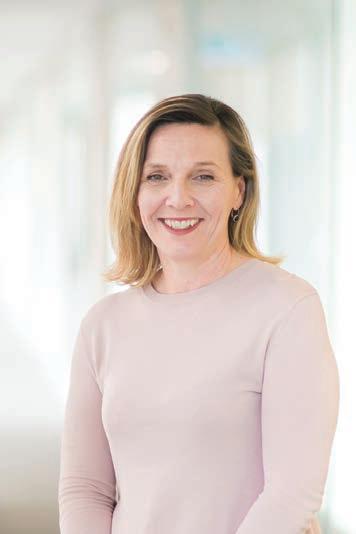
There may be movement across Australia, with some states doing better than others, but the consensus is, progress is still taking way too long. It is evident that there are funds available in almost all States to assist with developing secondary manufacturing infrastructure, however the only way that this will really happen is if there is government leadership around mandating recycled content in Australia now, not later.
Voluntary schemes like the Used Packaging NEPM, under which APCO is auspiced, are not working. We have 1.6million tonnes of packaging waste in Australia, which needs to be used as an input back into packaging. Barriers to using recycled content in civil infrastructure must be identified and removed, and Government must lead in this field and prefer and purchase recycled material. A tax on virgin material should also be imposed as it is overseas. MEM must show strong leadership on this issue. Ministers have, since April, dealt directly with operators and councils that are under stress and we have a chance to create jobs and investment in Australia at a time when manufacturing is declining. Ministers have the opportunity to be leaders of today, not procrastinators – leaders of tomorrow and we are urging
Chief Executive Officer WMRR: Suite 4.08 | 10 Century Circuit | Baulkham Hills NSW 2135 | t: 02 8746 5000 | e: info@wmrr.asn.au | w: www.wmrr.asn.au From the CEO’s desk WMRR: Suite 4.08 | 57 St Johns Road | Glebe NSW 2037 | t: 02 8746 5000 | e: info@wmrr.asn.au | w: www.wmrr.asn.au Daily news updates at www.insidewaste.com.au20 INSIDEWASTE OCTOBER/NOVEMBER 2022
ENGINEERED FOR RESULTS
Our expert engineers design customised solutions that recover maximum value from challenging waste streams and give you the power to divert tons of waste from landfill.

Our solutions help recover 80 – 100% of valuable materials, creating new revenue streams with an exceptional return on investment.
An integrated water management system recycles up to 90% of process water for immediate re-use in the system, significantly reducing footprint and maintenance of settling ponds.
Visit cdegroup.com ENGINEERED FOR YOU.
Defining a circular economy will help reach industry targets
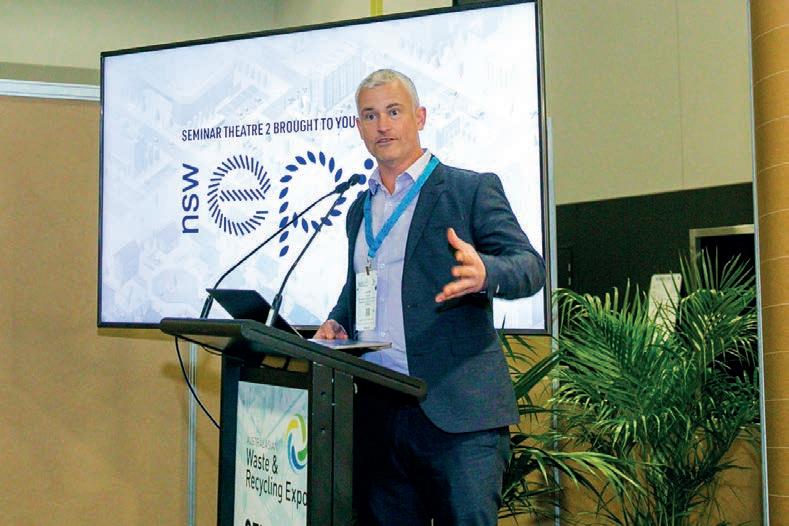
(Continued from Cover)
“BUT it’s just an objective. There’s an awful lot of work to do. We’ve got targets, but we haven’t yet got national standards and a regulatory framework to get us there.”
Sloan thinks we can look to an overseas example to at least get a start on sorting out what a circular economy is and getting a start on it, although she is not confident we are even close to it. Yet.
“If we’re doing this properly, we’re looking at some sort of Green Deal that is similar to what the EU is doing,” she said. “It’s a proper framework that goes from design, finance, carbon, product stewardship, extended producer responsibility, and pulls it together properly. But we are daylight from that.”
Smith agrees and goes one step further.
“What we’re not touching on are those elements around design standards, repairability, reuse and remanufacturing,” said Smith. “You could try and put more stuff in the waste regulation, or you could try and bring it into a broader discussion on sustainability and reducing carbon. I think there will be an enormous amount of progress in the next few years because of those emission reductions targets. If you look at embodied carbon, you look at what’s happening in the development space now, that’s being driven by those net zero commitments, but the indirect effect of that is a circular economy.”
While Chang wouldn’t be drawn on specifics when asked about the types of legislation that might be needed, she does see a role for government(s) to introduce strategies and policies around the circular economy. She said NSW is also being proactive in terms of sustainability, which is part of the circular economy.
“New South Wales introduced the Waste and Sustainable Materials Strategy, which is a 20-year strategy,” she said. “Last year, it was backed by $356 million over four years, which is to be put into both the waste and sustainable materials sector. There is a big shift in the way that the New South Wales Government is thinking about waste and recycling as well as the circular economy.
“If we compare the current strategy,
and the funding that we have in place, to the last strategy, you can see a very different paradigm. The last strategy focused on end of life, and how to deal with normal waste and residual waste. This strategy, as well as the funding that it targets, is much further up the stream. There is a $10 million circular materials fund. There is also $37 million for a carbon abatement project, which is all about industrial and construction materials that can be replaced by lower carbon footprint materials.”
Another issue is product stewardship, which has become intrinsic to any definition of circular economy. There is contention surrounding some of these programs, whether it be the various states’ container deposit schemes (CDS); why certain industries are recalcitrant to move forward with such programs; who should run them; and whether they should be voluntary or not. Some feel that if you hit producers hard – after all they are the ones that are generally paying for any remit that is paid out to the public – it might encourage them to design better packaging that will be easier to reuse.
“When I first became a lawyer in the early 2000s, one of the first things I advised our clients on was producer responsibility under the WEEE Directive, which is the Waste from Electronic and Electrical Equipment Directive. Product stewardship has been around for a while,” said Smith. “I read a piece recently about how the WEEE Directive could have been more successful if it had rewarded companies who designed their equipment in such a way as to make reuse and recycling easier. Australia has a real advantage in that it can cherry pick all the best bits of producer responsibility schemes in the EU and make them better.
“When we’re talking about product stewardship, we’re talking about take back – we’re talking about Apple taking it back, we’re talking about Samsung taking it back, we’re talking about those producers taking their products back and recycling the component parts and then producing the new equipment that stays in the economy. Distributors and retailers can also have a very important roll in that take back.”
“I can assure you that we are having a lot of discussions about product stewardship with other ministries,” said Chang. “We base that in terms of which
industry we touch on. It’s based on the evidence that we see. For example, we have a lot of data on what are the most littered environments – both terrestrial and marine. And that’s where we target those product stewardship conversations.
“We are targeting the [pollutants] that are having the most harmful impact on the environment. And in terms of PFAS issues, we have banned PFAS in terms of firefighting PFAS. We banned that last year. We made it very clear to all our firefighting agencies that unless it’s a catastrophic fire, PFAS cannot be used.”
Chang believes a collaborative approach is possible and cited Coles and Woolworths getting rid of lightweight plastic bags before legislation was introduced. She also mentioned that some major cosmetic manufacturers around the world have voluntarily started banning microbeads that are used for exfoliating.
“I’m not saying that government doesn’t have a role in intervention and stepping in,” she said. “I’m saying that ideally, what will happen in the space is government will signal to industry, or to another sector, in terms of where we would like to go. Usually, it will be through financial things like ‘here’s a grant, this is what we would like you to focus on in the energy space’.”
She also pointed out that the role of the EPA has changed over time. Her appointment as the executive director of policy being an example of where the government department has changed its sails.
“Traditionally, we didn’t have a policy area. We were regulators; we were the boots on the ground. We had technical experts to test the soil and test different products, which made sure that our mission is being delivered,” she said. “But now we go to the heads of EPA meetings, we attend environment ministers’ meetings with our federal colleagues, and we have a seat at the table. We’re not here to police. We’re here to assist. We’re here to work with industry. And we’re here to engage.”
Chang’s comment on having a seat at the table where there is access to the various governments brought up another issue by Bonsey – how complicated would it be to bring in design mandates and others covering reuse and repair, considering there are various forms of government who would have to take in the varying expectations of their various constituents. Sloan, for one, doesn’t think it would take much.
“I don’t think it would be complicated at all,” she said. “We forget that the majority of the goods, and the standards around them, are driven by what is happening in Europe, which are already bound by high standards. While we can say that with microplastics people were ahead of the ban, they were ahead of the ban because of the EU Plastic Pact, which says companies must do this and if you don’t, we’ll legislate. If you look at the 2015 New Plastic Economy document brought out by the Ellen MacArthur Foundation, everything’s basically
Daily news updates at www.insidewaste.com.au22 INSIDEWASTE OCTOBER/NOVEMBER 2022 Circular economy //
SSROC’s Justin Bonsey MC’ed the debate.
designed in Europe, manufactured in Asia, and imported to those standards.”
Sloan also believes that if Australia doesn’t adhere to similar standards, it runs the risk of becoming a dumping ground for all those products that can’t go into other countries that have the aforementioned strict protocols.
“It’s not difficult to do,” she said. “We need to reflect what’s happening in Europe and enforce it here. That’s the bit that I don’t quite get. We don’t do it. And the other thing that’s kind of missing – and is essential – it’s got to be done at a national level for so many reasons. While I understand that we have state-based regulations, we have to have a national vision for the economy that we’re trying to build, because we are one common market. The idea that people in somewhere like Albury think about what they’re buying in New South Wales compared to Victoria is a nonsense. Companies work on a national scale. We actually need to see what sort of economy we want to build nationally.
“It’s non-negotiable. We need to start having genuine sustainable design, material selection and we need to stop allowing our consumers to unknowingly purchase problematic materials that include chemicals such as PFAS and other materials that are not allowed in other nations.”
Sloan does not believe that it might be put in the ‘too hard’ basket in terms of getting all the states and authorities onside and having the time to get all the standards and legislation in place. After all, she pointed out, something similar has been done before.
“When we bought in the national disability standards, we had a 10year timeframe that we had to get all buildings, streets and roads up to code,” she said. “This is the standard we expected for our community, and we did it. And as for the government stating they don’t want to interfere with market forces, what do you think an export ban is? We are very good at sending signals to the market and setting standards.”
Bonsey also asked about carbon abatement due to one of the key targets over the next 20 years being zero net emissions by 2050. He pointed out that a circular economy revolves a lot around materials of efficiency, which he believes opens the opportunity for carbon abatements associated with using less materials, those that are more locally sourced and are durable, which in turn will mean they require less carbon to produce. Chang believes the country will meet those targets.
“The EPA just released its State of the Environment report, which shows that we are well on track to meeting 2050 net zero targets,” she said. “The

EPA will also shortly have something to say around stance on climate change, and there will be an action plan in that regard that will shortly come out for consultation. In terms of carbon credits, there are a number of things that we are looking at. There is the $37 million carbon abatement cost curve program. It hasn’t come out publicly yet, but we’ve been doing targeted consultation, which is all about [carbon abatement]. And if you look at the strategy, that’s one of the biggest funding commitments behind food organics.”
Another subject touched on was ESG, which is a system for how to measure the sustainability of a company or investment in three specific categories: environmental, social and governance.
“ESG as a term has been around since 2004 and was developed to drive sustainable finance,” said Smith. “The sustainable finance industry that’s predicated on ESG metrics, has grown from around $5 billion in 2018, to over $120 billion so far this year. If you’re looking for investment money, if you’re looking for finance, you increasingly need to apply an ESG lens to your business and supply chains e.g. through reducing your carbon emissions, biodiversity conservation, waste minimisation etc. Because companies (particularly, ASX listed companies) are increasingly reporting against their ESG metrics in their sustainability reports; a company’s impact is becoming more transparent. There’s been a big focus over the last few years on reporting against your carbon emissions. But, if you are using one of the UN’s Sustainable Development Goals (SGDs), which is one of the favoured ESG metrics, part of that is actually around the circular economy and resource recovery and waste reduction.

for a long time. When I first started I was largely dealing with the EHS manager at the company. Now, I’m being asked to go and present to the boards – you’ve got the CFO interested, you’ve got the CEO interested. It’s mainstream now and a core focus for businesses in assessing both their risks and opportunities.
Smith said there has been some pushback against the use of ESG metrics because some metrics (particularly social ones) are difficult to measure and there is currently variability and a lack of correlation or standardisation between different ESG metric tools (for example, the same company could get scores varying by up to 50 per cent or more depending on which tool is used). Some critics say that only “E” should be measured and that “E” should stand for “Emissions” as climate change is the most pressing global problem. But in terms of driving a conversation, ESG has been good in driving change and improvements in measuring and standardising metrics will come.
Finally, Bonsey asked the panellists what they thought the priorities would be moving forward. If they could be Prime Minister, Environmental Minister or any similar role that could have a say in effecting change, what would they do? While Chang took a raincheck on the hypothesis, both Smith and Sloan had some solid ideas on what they would like to see happen.
“I would start to have a conversation nationally on material management and how we consume,” said Sloan. “It’s just got to move away from this conversation at the end of the chain, where we build this community, this society, this environment, that values all that we have is in circulation. We need to have a behavioural change
consume and what we do with it. And we need to set up systems and processes that we can start thinking about. Airbnb is a precursor to the sharing economy. We’ve got to move away from owning everything. We can share, we can rent, we have to change our paradigm.”
“Mine is a mix of regulation and the use of ‘radical collaboration’ to build high-trust relationships between all layers of government, business and the technical innovators and entrepreneurs,” said Smith. “And in order to achieve everything that Gayle wants, my view is you need an independent national circular economy authority to drive that radical collaboration. That authority needs to have its own ring fenced funding, and they need to have a board with industry leaders and technical specialists on it so it has credibility. There needs to be a conduit or bridge between government (federal, state and local), major industry players and the up-and-coming entrepreneurs and innovators.
“There also needs to be a few regulatory drivers in there around the producer stewardship schemes or they won’t happen fast enough. There is also a need for more money to be pumped into circular economy initiatives. I would encourage the States and Territories to consider standardising the waste levy amount and ensure that at least 50 per cent of it was ring fenced and rolled back into the circular economy.
“Lastly, that Circular Economy Authority needs public targets in a strategy or business plan that it must publicly report against each year. There needs to be somebody who’s got overall responsibility, because what happens is, if you split the responsibility,
Daily news updates at www.insidewaste.com.au 23 // Circular Economy
Carbon abatement was just one of the subjects that caused interest among the audience.
Should wine and spirit bottles be added to the CDS list?
(Continued from Cover)
“WE believe this can be achieved within 12 months with appropriate arrangements for transition to required labelling and will have an insignificant impact on the price of the products. It will also increase the supply of clean glass for recycling including back into bottles and reduce contamination of the kerbside recyclate bin.”
Reasons for not including them in the current schemes are varied –from the reverse vending machines not set up to take them through to the wine industry itself not keen to be parting with monies, especially as the industry has a lot of smaller, boutique vineyards scattered throughout the country.
Angel is leading the charge and believes that the time is ripe to push forward with the next stage. What is interesting is that the signatories to the letter haven’t always seen eye to eye.
“The significance of the joint letter is there are two groups that were once enemies are now on the same side,” he said. “I think the wine industry is the main issue now with its transition processes, like getting integrated into the collection of various CDSs, pricing, and those sorts of arrangements.
“Some may have an issue with paying for the refunds because they are small producers, but all of that can be accounted for. I think the issue really is the length of the transition period. They were strenuously opposed to it before. They were claiming ‘most of our glass is already recycled, don’t need to regulate, there’s the China issue not wanting to take our wine so we’re already under stress’ etc etc. A $0.10 cent refund has such a tiny impact on pricing that the argument about price impact is irrelevant.”
Lee McLean is the General Manager, Government Relations and External Affairs for Australian Grape and Wine (AGW). The role of the AGW is to ‘provide leadership, strategy, advocacy and support that serves Australian grape and wine businesses now and into the future’. He disagrees with Angel. He points out that the South Australian government is reviewing its CDS and that AGW put in a submission that touched on why the wine industry didn’t need to be included in the scheme.
“Essentially we were frustrated by a couple of points in that process and what was being put forward,” he said. “Firstly, it’s important to note that in the wine industry we want to see the recycling rates increase for
wine bottles. We really do. We have a strong sustainability agenda.
“It’s constantly raised among the industry on how we can improve recycling rates. One of the issues that we’re finding is that a CDS arrangement for wine bottles, is in our opinion, a fairly suboptimal way of achieving better recycling rates and all the costs is to the industry.”
McLean noted that the South Australian EPA has gone down this route of intimating that although the CDS was designed for litter reduction – and it has been successful at doing that – it should now be retrofitted to become a product stewardship scheme.
“Just because they call it a product stewardship scheme doesn’t mean that it is, because true product stewardship shares costs right along the supply chain from the producer to the filler – in our case, we’re filling the bottles – to the glass manufacturers to retailers and everyone else,” said McLean. “But under a CDS model, the cost entirely sits with us, and we have no real meaningful ability to pass that cost on to consumers.”
The reason for not being able to pass on costs, according to McLean, is because Australia has a duopoly in terms of Coles (Liquorland) and
Woolworths (Dan Murphy’s/BWS), which covers about 75 per cent of all retail liquor outlets. He said that there are thousands of different wine brands competing for shelf space at those outlets, which means margins are already stressed.

Angel points out that all small enterprises in the beverage industry had the same issue when CDSs were first introduced.
“We had the same issue with small business impacts when the CDSs came in first,” he said. “Not all the bottlers are big. There are lots of boutique producers and the government’s made various arrangements to cushion the initial transitional issues.”
However, McLean says that it’s just not the $0.10 cent refund that is the issue. And he won’t even get into reports out of Europe – and being mooted in Australia too – that the amount of the refund should go up. There are other costs that need to be considered. AGW sent a report to the South Australian Industry Association of what the true cost to the industry will be if it becomes part of such a scheme.
“The cost to wine businesses will be upwards of $0.50 to $0.55 cents per item in the first year and a bit more than $0.40 cents per unit
Daily news updates at www.insidewaste.com.au24 INSIDEWASTE OCTOBER/NOVEMBER 2022 Container deposit schemes //
AGW would like to see the costs of including wine bottles in a CDS shared by everyone.
every year after that,” he said. “That incorporates things in the first year like labelling changes, registration fees, compliance costs, the actual refund itself, and the record keeping.”
Waste Management and Resource Recovery CEO Gayle Sloan believes it’s about time the wine industry came on board.
“I think there’s a definite acknowledgment that more [categories of containers] should be in the schemes,” she said. “It was a historical throwback that things like wine and fruit juice and milk were out. It makes absolute sense and is less confusing for the consumer to have all those materials in. The more in, the better.”
Another aspect is how much of a problem do wine and spirit bottles cause in terms of litter. Is it disproportionate compared to other beverages, and if so, is that because CDSs don’t cover off on those items?

“There are two answers to that,” said Angel. “Some of the product is going into smaller and smaller containers and that is starting to show up in litter. But the main intent of a CDS is to increase recycling. And we need to get glass out of the yellow kerbside bin. That has the follow through beneficial impacts on improving the quality of the product that’s still left in the yellow bin. What do recyclers hate? Glass-impregnated paper and cardboard out of the yellow bin. It’s not just a litter issue. Anecdotally I’m being told that the smaller containers of wine and spirits are
used in Victoria for glass only?
Unsurprisingly, McLean is a fan, but his objection to the way a CDS would affect the wine industry is not just down to other options being available, but how much of a difference will it actually make.
“What I struggle with is that when you read the South Australian EPA’s discussion paper on the subject, is that, despite this hefty cost and industry – and it is supposed to be about improving the collection/ recovery rates etc – the paper said that this will improve recovery rates of wine, spirits, cordials and those other potentially eligible containers
really significant cost increase with not much in the way of improvement in collection rates.”
And while the wine industry would prefer alternatives, Angel thinks that it might be out of their hands, with legislation likely in the future. How far into the future, he is unsure, but it will happen.
“I think it’s inevitable,” he said. “The question really is how fast we do it.”
Another sticking point when it comes to one of the more popular pieces of infrastructure – the reverse vending machine – is that they currently don’t accept wine or spirit

might think it will take a whole refiguration of the plant, it is a lot simpler than that, said Angel.
“All the machine has to do is read the barcode on the bottle,” he said. “That’s the main change the wine industry – who don’t have barcodes – will have to go through. When you put the glass bottle – assuming it fits – into the RVM it reads the barcode and once it knows that barcode is in the system, it accepts it. There are new products coming on all the time with nationally registered barcode. That barcode goes into the container deposit scheme system and then it becomes an accepted container.”
McLean understands the manufacturers will get social license from supporting such a scheme, but doesn’t get any less irritated that other options go by the wayside.
“I get a little bit frustrated when governments look at the CDSs as being the only way of doing things when there seems to be all sorts of different options; one’s happening in Victoria; one’s happening around the world in terms of other product stewardship schemes, as well as other bottle return mechanisms, which seem to have at least a similar rate of return,” he said.
McLean puts no doubt where he would like to see the debate end up.
“What we want to see is maintaining the status quo, in terms of the scope of containers that go into a CDS,” he said. “We would also like more thought and research go into alternative schemes to help drive improvements in recycling rates in an equitable way that shares cost across the industry.” iw
Daily news updates at www.insidewaste.com.au OCTOBER/NOVEMBER 2022 INSIDEWASTE 25 // Container deposit schemes
According to Angel, reverse vending machines can be easily configured to take new container shapes and size.
McLean said that the true cost to wine makers will be more than $0.10 cents a bottle.
EPA prosecutions put operators between a rock and a hard place
Facilities need to check their contracts thoroughly when outsourcing to third parties.
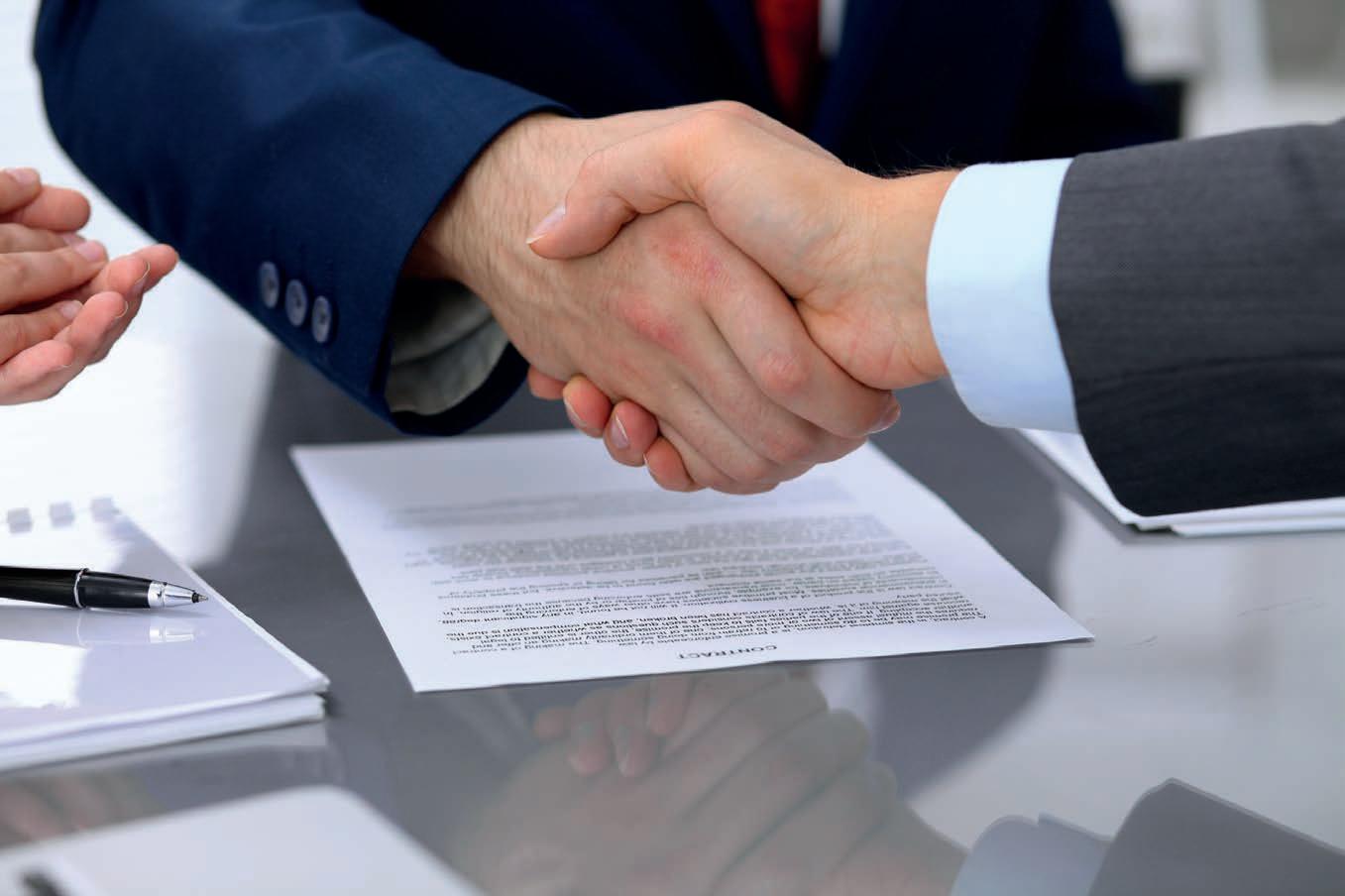
environment protection licences are fraught with risks. One case shows that even with best-practice systems, procedures, and pro-active maintenance in place, the EPA may still prosecute you when something goes wrong. More concerning still is that the EPA is increasingly prosecuting directors and managers directly, using powers that allow them to hold directors and managers responsible for offences by the company.
Quarrying to the max
In the case of Environment Protection Authority v Crush and Haul Pty Ltd; Environment Protection Authority v Cauchi [2022] NSWLEC 113, the EPA prosecuted a company (Crush and Haul), and the sole director of the company, Luke Cauchi. During 2018, Crush and Haul sold over 90,000 tonnes of quarried material from
extracted material in any year – and Crush and Haul didn’t hold a licence.
Part of the justification for this was that under its lease and management agreement, Crush and Haul agreed to sell a minimum of 30,000 tonnes per annum. But, on the other hand, the lease also required it to hold all required licences and approvals. Crush and Haul, and Cauchi, were aware of the need for a licence – and engaged a consultant during 2018 to apply for a licence. The licence was not forthcoming (including because a previous occupant of the site had a licence suspended a few years prior, and the application was lodged for the wrong party), but Crush and Haul continued selling material, well exceeding the lawful threshold.
Crush and Haul and Luke Cauchi both pleaded guilty. Crush and Haul was fined $225,000, and Cauchi was personally fined $22,500. In addition,
can be thresholds above which you require a licence, annual or yearly throughput, processing, or storage thresholds, or limits related to size and quantities of stockpiles. It is understandable that sometimes, if volume of deliveries or orders exceed expectations, or receival facilities stop accepting deliveries, facilities can unexpectedly approach or exceed thresholds. But this case is a reminder that you cannot assume a licence can be quickly obtained to tweak thresholds – it can take many months, and in some cases, be refused – so it is important to plan ahead. Otherwise, the results for companies, and directors personally, can be crushing.
Best practice still not good enough
After the Crush and Haul case, you may think – great, I have a licence (or have applied for one), now I should be
the EPA.
As part of a pro-active maintenance and upgrade program, a large poultry processing facility engaged specialist refrigeration contractors to conduct a multi-million dollar upgrade of various items of refrigeration plant around its facility. The facility had ISO 14001 audited environmental systems, stretching into hundreds of pages, dealing with all sorts of potential environmental issues –including contractor management, and risk management. It also had regular maintenance programs for plant and equipment, regular internal and external audits of equipment including refrigeration equipment, and ISO 45001 audited WH&S systems.
This included an entire system for managing contractors. As part of that best-practice system, the facility filled out risk assessments for the proposed work and required the contractors
Daily news updates at www.insidewaste.com.au26 INSIDEWASTE OCTOBER/NOVEMBER 2022 Legislation and regulations //
to provide and sign documentation with measures to manage those risks – in this case, Safe Work Method Statements (SWMS), which are commonly used across many industries.
One Friday afternoon, a contractor was working on the roof, having just finished installing some new aircooling equipment. The contractor decided to skip multiple steps in the SWMS (it was a Friday afternoon, after all) which meant he failed to tell the facility he was moving to commissioning (which was required under the SWMS). He did not carry out proper pressure testing using a gauge (required under the SWMS), and instead of carrying out required testing for leaks with an inert gas (required under the SWMS), the contractor skipped ahead, opened the valve to reintroduce ammonia (even though it was tagged ‘out of service’), and lo and behold, there was an ammonia leak for around 5-10 seconds before the contractor closed the valve.
Now, you can be forgiven for thinking that the EPA would not pursue the facility, since, clearly, the contractor was at fault having committed multiple breaches, not the facility. Think again.
The Protection of the Environment Operations Act 1997 makes licence holders guilty for the actions of anyone at a licensed facility unless they were not known to the licence holder – e.g. a burglar that breaks in during the middle of the night. Even though the Court ultimately found on sentencing that the facility had appropriate systems in place, did not in any way fail to appropriately manage contractors, and because of its systems and management essentially had no control over the causes of the incident – i.e. it was entirely the contractor’s fault – the facility was still found guilty of breaching a condition of its licence.
This leads to the other element of the case that should concern all licence holders. The condition the facility was alleged to breach requires it to ensure that it maintains plant and equipment in a ‘proper and efficient manner’. The facility argued that it did, since the plant in question was de-commissioned (and part of it newly installed), isolated and offline – and it was the contractor who erroneously re-introduced ammonia multiple steps before he should have, and before the equipment was ready. The Court agreed that so long as the plant was offline, it was in an appropriate state to be offline. But, it found that by the contractor opening the valve (early), the mere fact that ammonia was released, meant that it was no longer maintained in a ‘proper and
efficient manner’. I.e. by the very act of opening the valve, the contractor put the plant in an unfit state to hold ammonia.
In short – it is not good enough to say that the plant and equipment is well maintained – if there is an accident, or someone follows an incorrect procedure, that in and of itself can constitute a breach.
At the hearing, the Court was asked, essentially, what else could the facility do? The answer, is, essentially, not much. Any licence holder needs to be aware that anything contractors do – even if they deliberately disobey instructions or legal requirements –can lead to the licence holder being prosecuted. You just better be sure you have a well drafted contract that shifts liability to the contractor, as well as check your insurance policies very carefully.
[Editorial note: If the author sounds somewhat biased, full disclosure – he defended this case against the EPA. The author has also left out party names as there are still unresolved liability issues with the contractor].
Dotting your i’s and crossing your t’s
The biggest spate of EPA prosecutions in the past few years relates to the relatively new offences of providing false and misleading information in relation to waste. The EPA has gone after waste transporters particularly, for providing false or misleading dockets and waste classification certificates. These may misstate the source of the material, its end destination, tonnages, or
the nature of the material – e.g. classifying it as ENM when it does not meet the thresholds. There are currently numerous prosecutions and investigations ongoing.
Some examples include:
• Environment Protection Authority v Afram [2022] NSWLEC 38: Afram himself, was convicted, and ordered to personally pay $240,000, plus EPA costs of over $200,00 – totalling almost $450,000, for falsely representing that building and demolition waste (including asbestos) was taken to a licenced facility, when it was instead taken to an unlicensed rural property.
• Environment Protection Authority v Al-Sarray [2022] NSWLEC 31: Al-Sarray himself, was convicted, fined $270,000, plus EPA costs – again likely to total around $400,000-$500,000, for providing false weighbridge disposal dockets that misrepresented the source of the waste.
• Environment Protection Authority v Mouawad (No 3) [2021] NSWLEC 16: Mouawad was sentenced to 12 months imprisonment, which was then reduced to an ‘intensive correction order’ (essentially an imprisonment sentence to be served in the community under supervision), and ordered to pay the EPA’s costs, for providing false disposal dockets and spreadsheets to a builder, purporting to show building waste (including asbestos) was delivered to a Suez/SITA
facility, when in fact Suez/SITA had no such records of the material being received.
Clearly, the above are some of the most egregious examples of false or misleading information in relation to waste. But, they serve as a reminder that the EPA is very serious about prosecuting these matters. And so, while the waste industry operated for many decades on handshakes and personal relationships, those days are over – every waste service provider needs to dot their i’s and cross their t’s in terms of documentation, to avoid staring down the barrel of an EPA prosecution.
Takeaways
Whether you don’t yet have a licence or consent, may need one, or do have a licence and are trying to comply with it – environmental laws and licence conditions can be extremely complex, and onerous to comply with. Waste service providers have to become more professional in terms of legal compliance, systems, and documentation to comply, and to avoid directors and managers being personally prosecuted. Those who still operate on a “she’ll be right” attitude are increasingly being prosecuted, fined, and ultimately shut down by the EPA. iw
Gavin Shapiro is a partner at Hones Lawyers, specialising in waste, including EPA investigations and prosecutions, licences and development consents for waste facilities, waste contracts, and environmental laws.
There are still many companies that are being heavily fined over the incorrect disposal of asbestos.

Daily news updates at www.insidewaste.com.au // Legislation and regulations
Chappel sends out olive branch to the waste industry
By Inside Waste
TONY Chappel knows all about hard work and challenging work environments. The new CEO of the NSW EPA cut his teeth with executive positions in the tumultuous energy sector working for AEMO (Australian Energy Market Operator) and AGL Energy.

As well as receiving a Bachelor of Laws and Economics from Sydney University, Chappel has a Masters In Environmental Change and Management from the University of Oxford and another Masters Degree in Environmental Engineering Technology/ Environmental Technology from the Imperial College London. He knows a thing or two about the environment space and what he is in for in tackling one of the most contentious jobs in the waste industry.
At an address at the Australian Waste and Recycling Expo (AWRE), Chappel acknowledged the previous industry he worked in was ‘tempestuous’ and that he was hoping for a more collaborative environment in his new role. The EPA will have a big say in new infrastructure projects, and the regulations around them being built and run, as the state heads toward meeting its sustainability requirements set out by government policy. He believes lessons learned from working in the energy market will help
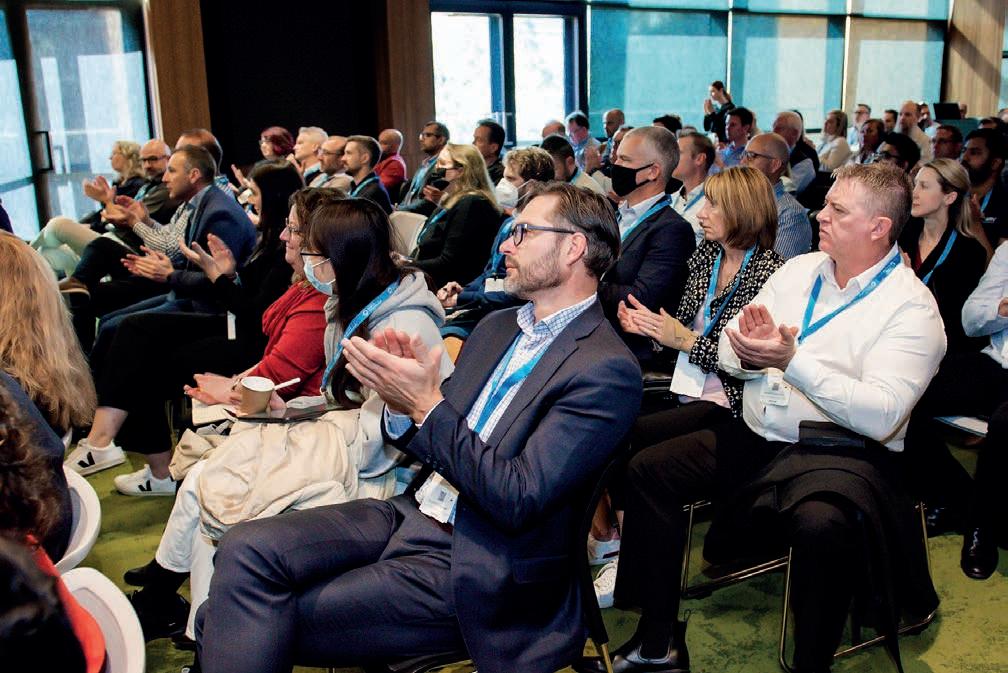
with his new role.
“My commitment, at least from an EPA perspective, is to work with my other government colleagues to try to help build that collective collaboratively,” he said. “I’ve seen how challenging costings can be in the gas and electricity infrastructure and sometimes government doesn’t always make it as easy as we might. But the 80 per cent [diversion from landfill] challenge is a huge endeavour. And I guess when I step back and think about that, it occurs to me that we can only achieve those goals if we do it in a deeply collaborative fashion. We are on a journey that will take us most of the decade to optimise and transform our economy. We can only do that if we work together.”
He also shared with the audience some of the latest figures in diversion. For 2020-21 the overall waste diversion has improved by two per cent. In New South Wales it is up to 66 per cent. In construction demolition, it has gone from 76 per cent to 79 per cent, for municipal solid waste it has gone from 43 per cent to 44 per cent, and commercial and industrial waste is up one per cent to 53 per cent.
“It’s going in the right direction, but it’s fair to say it’s not where we need to be,” he said.
Chappel makes no apologies for the current bans on single-use plastics,
nor the upcoming bans starting in November with regards to straws, single-use cutlery and other items. He said reports state that up to three billion waste items a year will be taken out of the environment over the next 20 years.”
“We’re really talking about the tip of the iceberg here about the scale of behaviour change, new processes and design standards that need to operate to really take plastic out of the environment,” he said. “It’s really a signal to the industry to say we need to look at more sustainable alternatives because these regulatory processes will continue to roll forward. And when it is going to roll forward, it needs to be inspired and informed by science and economics and creating investable solutions. I hope we can work on those challenges together.”
One of the bugbears of industry has been the lack of infrastructure. And while both federal and state governments are offering grants and monies towards such endeavours, other government departments, such as the EPA, are seen by some as a blockage. For example, the various waste to energy facilities that have been mooted in the state. Moving forward, Chappel struck a conciliatory tone for how the EPA interacts with the industry.
“One of the key challenges that I’m very conscious of is around waste
to share that the NSW government has now started a process focusing on strategic planning of all that critical waste infrastructure needs,” he said. “It’s supported with funding under the Waste and Sustainable Materials Strategy. And there’s a series of valuable components in that strategy. Obviously, one major focus is reducing carbon emissions and how we manage materials. Another critical focus is on removing barriers that the regulatory architecture might have in place that impede circular economy. Developing markets, building infrastructure and removing those barriers to circular economy, I hope are three key focus areas where we can work together this year and the years going forward.”
Chappel seemed to be offering an apology of sorts in terms of how the industry has found working with government departments, especially the EPA. The aforementioned energy from waste frustrations being but one issue.
“While many in the industry might have found the last few years frustrating – it might have felt like the goalposts were changing on you from time to time – if I think about the changes in a policy like energy from waste in terms of that policy architecture, or even the delays in the finalisation of the government’s Waste and Sustainable Materials strategy, I absolutely acknowledge that that must have been frustrating for many,” he said. “I guess my expectation is now that the licence sustainability strategies are set, and these government positions are clear, we can shift our focus to collaborate on how we deliver infrastructure in the most
Daily news updates at www.insidewaste.com.au28 INSIDEWASTE OCTOBER/NOVEMBER 2022 People on the move //
New NSW EPA CEO Tony Chappel.
Overall, Chappel’s speech was well received by waste industry insiders.
effective and efficient way and create the markets we need.”
One of the main critiques of any government is the amount of red tape companies have to go through in order for projects to come to fruition. Chappel didn’t address any specific issues, but he did acknowledge that this can be a roadblock moving forward. While there is no quick fix to getting through meeting the various legislation requirements, he believes the government can do a better job and there is progress being made.
“I’m conscious the EPA can play a role, perhaps more in the background, in simplifying the journey through government processes,” he said. “I know it’s complicated and frustrating dealing with planning and regulatory processes that don’t seem joined up. The government is making some good progress in this space. There is a lot of work underway trying to build a sort of concierge-type service, both from the EPA side and with our planning environmental department colleagues.”
Another topic touched on was harmonisation across the states. Chappel will head the country’s biggest EPA in the most populous state, and he realises that harmonisation will help create more streamlined waste strategies throughout the Commonwealth.

“Being a Federation, Australia has different governments with different
rules, but there is a shared agenda in some things,” he said. “Some of these ideas and targets are now ahead nationally. In New South Wales, I think there’s a lot of good progress we can make to try to harmonise how the different waste streams are collected and dealt with.”

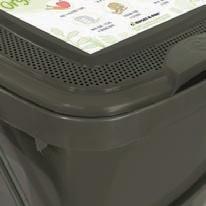


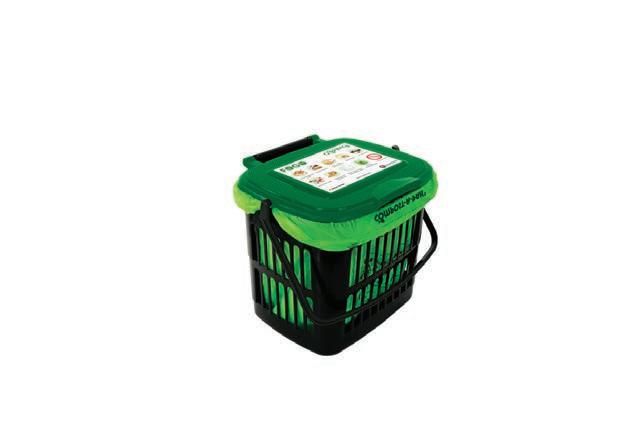
Finally, Chappel extended an olive branch to the industry in terms of how the EPA will be run under his watch. Regulatory must-dos aside, he thinks that the EPA and industry are not as far apart on lot of things as perceived.
“It’s about transparency. It’s about collaboration. And it’s about honesty –that means from both sides,” he said. “I hope when industry sees an emerging health issue, or if the EPA sees it, we’ll bring that to the table early and work on a responsible solution so that the goalposts don’t shift from underneath us, but rather, we can keep that goal set ahead of us and move us forward. There’s a tremendously exciting opportunity and the scale of this decade of transformation of our economic structure can be huge, especially as we move towards a reusable material mindset and move away from the disposable culture.
“I hope that if we gather again in six or eight years, we can look back at our progress and be proud that we’ve built some really solid foundations for sustainable prosperity, not just for today but for generations to come.” iw
Daily news updates at www.insidewaste.com.au OCTOBER/NOVEMBER 2022 INSIDEWASTE 29 // People on the move
Chappel struck a conciliatory note towards the waste industry during his speech.
Moving beyond off-the-shelf options to community specific solutions
Vented
Lid,
SolidBase Vented Base, SolidLid
Kitchen Caddy
SOLID Kitchen
Caddy
VENTED www.sourceseparationsystems.com.au Kitchen Caddies
Innovations abound at AWRE
AS well as a place to meet up with old friends and make new ones, the Australasian Waste and Recycling Expo (AWRE) provided a platform for companies to showcase new innovations and ideas designed to help streamline various aspects of the waste industry. The AWRE put aside an Innovation Hub within the Expo where these products were showcased.
Inside Waste takes a look at some of the products that have recently come to market or will be making their debut in the near future. On Day Two of the Expo, those that were part of the Innovation Hub were given five minutes to pitch their product or service to a packed audience.

Zero Pac
Zero Pac is a New South Wales company based in Blacktown whose motto is to deliver zero waste solutions. Founded by David Beaver, the company believes sustainable packaging is one of the key ingredients to a circular economy. Training manager Rachel Beaver said there is an estimated 15 to 51 trillion pieces of plastic in landfills, waterways and oceans.
“Imagine if we had an alternative that gave us the functionality of plastic without the negative impacts on our environment,” she said.
With that in mind, Zero Pac is producing a range of items that use polyvinyl alcohol (PVOH), which in layman’s terms, is a water-soluble plastic. This plastic is already used in medication and dishwashing tablets.
“You may be asking why we’ve
Aquapak has patented a technology called Hydropol that can be blown into a film and used for a wide range of products.
“PVOH is a virgin polymer with no starch added.”
Beaver said the technology gives a
It was standing room only at the AWRE Innovation Hub.
dissolve at different temperatures.
To dissolve the PVOH, you place the material in hot water. All that is left is water, biomass and carbon dioxide.
“The shelf life of the material is five to 10 years, so stronger than traditional combustible bags,” said

TrueGrid Pavers are designed to be a replacement for traditional concrete pavers.

30 INSIDEWASTE OCTOBER/NOVEMBER 2022
Innovations //



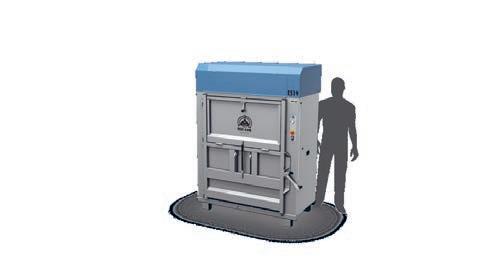
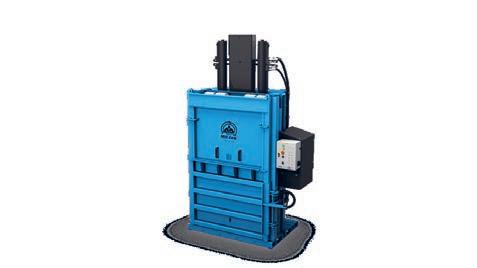
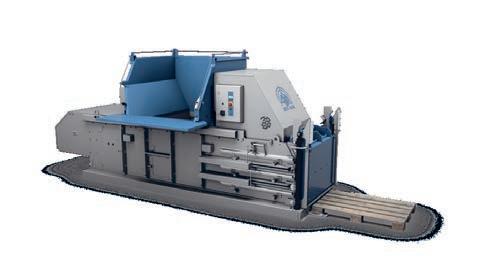

Queensland, TrueGrid Permeable Pavers was founded in 2018 by Philip Goodman. Goodman said the purpose of the Truegrid product is to reduce the amount of concrete and asphalt being used in carparks and other roading arenas. It is made of recycled plastic and as the name suggests, is set out in a grid pattern with holes in it. The holes can be filled with gravel or dirt.
“It can take the place of any parking solution or any roadway that has speeds up to 50 kilometres an hour,” said Goodman. “It manages and delivers stormwater outcomes and mimics the natural ground to reduce the pollutants in stormwater.”
Goodman said the product was developed to help reduce the amount of CO2 caused by concrete production. He also believes that managing stormwater run-off is an important issue as flooding becomes more prevalent in parts the country.
Finally, he pointed out that not only can these pavers help reduce the use of concrete and therefore CO2 emissions, but because they’re made from recycled plastics, there is a double savings in terms of CO2 emissions because those products would otherwise be destined for landfill.
Subpod
Peter Critch founded Subpod in Tasmania in early 2018. He saw a need for a product that would assist with home composting because, as it currently stands, only five per cent of Australians compost.
Critch pointed out that there are some cost benefits for composting, not just for households but the community, too.
“There was an audit with the Victorian Government, which showed that 70 per cent of waste handling funds were going towards kerbside collection,” he said. “Forty per cent of the rubbish in our household bins is food waste. It’s 100 per cent compostable, yet we are spending money to transport it, process it and sending it to landfills. It’s costing taxpayers money.”
He asked the question as to why more people were not composting. As he pointed out, traditional composting is usually smelly and messy. This is
because most composting is done near the surface of the ground where it is hot. Most people have one bad experience, and they don’t want to do it again. And this, he said, is where Subpod is different. He said it takes the mess, hard work, smell and stress out of composting.
“Essentially, it’s an underground worm farm. Working with nature, feeding your plants while making compost is really simple, so anybody can do it,” he said. “Subpod isn’t just for backyards, it can be set up on your balcony, or even a patch of grass. It’s scalable and we have Subpods in prisons, restaurants, cafes and even have them in Unilever’s headquarters in the Netherlands.”

The main targets outside the domestic target are councils, schools and community gardens. It is scalable as users can add pods to each part of the garden they want and therefor set up a composting system. Critch said there is currently a system at a Tweed
Heads school in northern NSW that has 42 Subpods.
Binny
Founded four years ago in Western Australia by Len Luxford, Matter. is a company that specialises in smart sensor technology and apps designed to help councils, businesses and other enterprises manage their waste in the most cost-effective way possible.
It’s all about collecting data and individual responsibility according to Luxford. With that in mind, the company has invented Binny – a blue-tooth connected fridge magnet that informs consumers of what is happening with their weekly collections, among other things.
“It tells you the volume being collected in real time, collection day reminders, as well as safety warnings. It’ll tell you if your bin has been blown over or run over,” said Luxford. “It’s based on a sensor that fits into your everyday wheelie bin – whether it be 120 litre/240 litre – so it’s a well-tested system. The app will track waste emission levels, weather reports and notifications.
“All of our utilities are measured – power, water and gas – except for waste. And this one’s been just too
Daily news updates at www.insidewaste.com.au32 INSIDEWASTE OCTOBER/NOVEMBER 2022
Innovations //
“Forty per cent of the rubbish in our household bins is food waste. It’s 100 per cent compostable, yet we are spending money to transport it, process it and sending it to landfills. It’s costing taxpayers money.”
A Subpod can be set up in your backyard or on a balcony if you live in an apartment.
tricky. We can now do it. It’s the one utility over which each of us can have a daily impact on it being measured.”
for the past two years in WA and now Victoria. There’s no moving parts and the battery life is good – it’s 10 to 13 years depending on the usage.
“The durability is well proven,” he said. “You can throw anything at it and it works well in heat and cold. It’s been caked in food waste and all sorts
Finn Biogas

Finn Biogas’s Firefly micro modular anaerobic digestion is a small-scale, modular, on-site waste management system that has been designed for commercial waste producers.


It has been designed for such places
With a waste throughput of 200–500 tonnes a year, the system uses dry anaerobic digestion/aerobic composting technology to produce biogas, biogas and compost, and compost.
The modular plug-and-play solution can be expanded by two to eight
modules. The unit is configurable in multiple ways to meet users’ requirements.



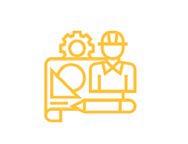
“Anaerobic digestion is a natural process that occurs in nature. Waste goes in it gets broken down by bacteria,” said managing director Jason Hawley.
“Biogas is produced and digestate, and nutrient-rich fertiliser soil product is recovered.”
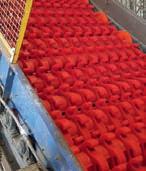
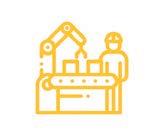
According to Hawley, a reason the system was developed was due to Australia being one of the biggest greenhouse gas emitters per capita in the world. He said that 7.3 million tonnes of food waste is produced a year, and that up to 20 per cent of the food we produce – 21 tonnes of CO2 equivalent per person per year – goes into the atmosphere. He said that food waste is sometimes comingled and can be found in large industrial volumes where people work, as well as in small, decentralised locations.
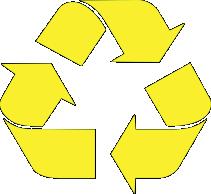

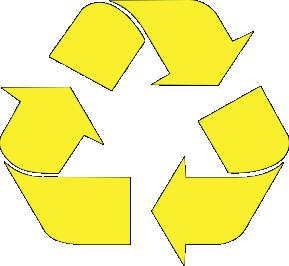
“It’s very easy to install and is fabricated off site. It generates energy; we can recover that as electricity and/or heat,” said Hawley. “It produces a fertiliser-type product, and it avoids food going to landfill.” iw
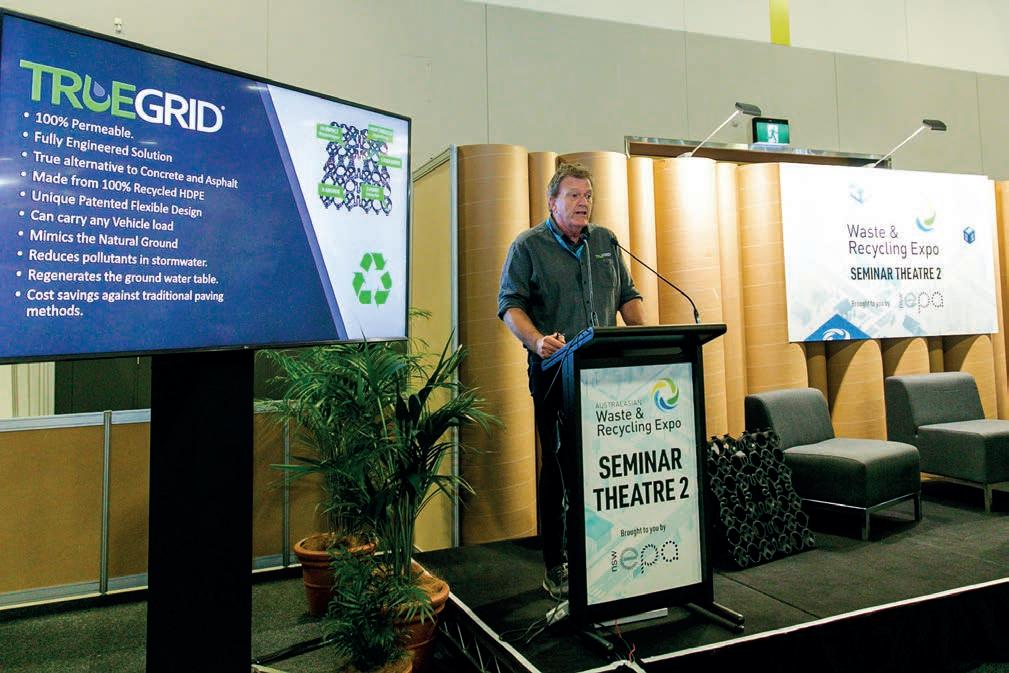
Daily news updates at www.insidewaste.com.au OCTOBER/NOVEMBER 2022 INSIDEWASTE 33 // Innovation
TrueGrid’s Phillip Goodman is on a mission to reduce carbon emissions caused by concrete.
26 Blue Rock Drive, Luscombe, QLD 4207 (07) 5629 0092
IPART’s review of the DWMC is a missed opportunity
the top down approach, IPART, in many cases, ended up at the wrong conclusion.
He also said that the politicisation of the bureaucracy, along with the nature of Australia’s democracy in political representation, has created a revolving door of local politicians, and a tribe of equally revolving ‘lap-dog spin doctors’ in executive management who lack any real understanding of the waste industry and are incentivised to only ever say ‘yes’ to the politicians who are unqualified to be making the billion dollar decisions put before them.
A number of the issues were identified by IPART in its review, said the veteran.
By Mike Wheeler
RECENTLY, I caught up with a 30-year veteran of the waste industry. A person whose passion was clear to see, with the conversation jumping all over the place like a kid on a jumping castle. Yet like the castle, there was a boundary, and while the conversation bounced off the walls, there was a common theme underlying it all.
He had an intricate understanding of the waste industry and some of the key underlying causes of the structural issues that will be facing it in the near future. He also focused on how it could be better, and the opportunity in front of the industry if it can stop ‘reinventing the wheel’, avoid copying bad habits, and gain an industry focus outside the current governance umbrella.
IPART review of Domestic Waste Management Charges
One of the key areas of discussion related to the recent IPART review of Domestic Waste Management Charges (DWMC) in NSW, and how this was a lost opportunity for NSW to have bought about meaningful reform.
The key driver to the review was that the Office of Local Government (OLG) had allegedly not been conducting audits, and that IPART had received concerns related to
the variations in the DWMC between similar Councils in NSW. There were also concerns over some Council’s allegedly ‘loading up’ costs as a result of the rate peg on general rates, into the DWMC.
This last point was not lost on the industry veteran, who had worked with nearly 100 councils in various capacities and pointed out this is occurring in various forms in Australia. However, he was more concerned about Council’s stripping revenue away from waste activities. And while waste did have a dedicated legislated revenue stream, it was being chronically underresourced and competing for capital against footpaths and other nonrevenue generating items.
“IPART appeared to be attuned to this issue in the first instance,” the veteran said. “Given Councils across Australia have been operating under the principles of National Competition Policy since the mid 1990s, it was worrying that many of the issues raised by IPART are in fact enshrined in these 30-year-old principles and yet still seem so difficult for some Council administrations to understand.”
It is worth noting that he also said that there are many excellent and hard-working people in local government.
However, the governance model that exists in local government,
Waste sometimes plays second fiddle to other local government initiatives.
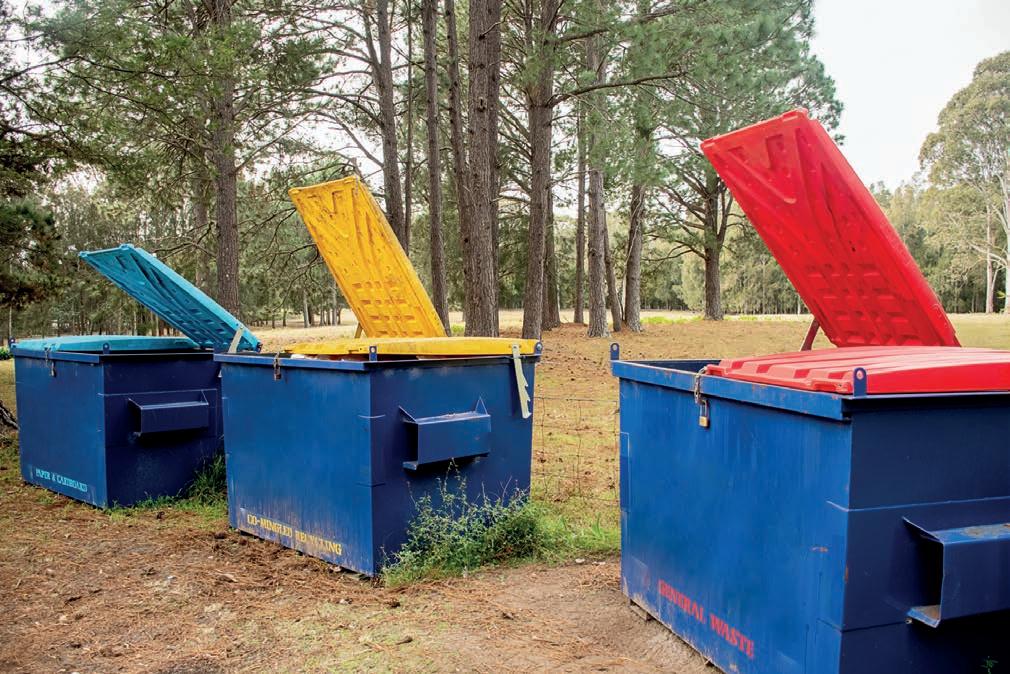
particularly where there is a rate peg on general rates, creates a competitive environment inside local government. Waste, while it is meant to be ring fenced, typically comes off second best when it comes to the crunch.
Having also worked in the private sector for some of our largest waste management contractors and companies, our industry veteran indicated there was definitely a place for government in the management of waste services, waste itself being a real example of a ‘market failure’, not to mention being born out of the protection of public health in its early stages as an industry.
“The ability to coordinate services and contracts for collection is a prime example of where a singular service results in cost benefits, albeit taking away some consumer choice,” he said. “The private sector is far better placed to deliver many of these services on the ground, but the pooled and ‘house-to-house’ nature of all in service delivery cannot be replicated for efficiency on a like-for-like basis for a given collection system.”
IPART, it was argued, while coming from a place not necessarily focused on structural inefficiencies in the waste sector, came closer than any government body to flushing out some of the underlying structural issues. However, it was argued that due to
“IPART raised a number of issues with regard to prices increasing, and in particular the lack of competition in the disposal/processing sector. It has in large part been the actions of the Government through the creation and operation of WSN NSW which created a government monopoly on waste infrastructure in Sydney,” he said. “The government then sold off all those assets to one industry player, creating a private sector monopoly.”
IPART identified in its review the typical costs of various services Councils provide, along with a breakdown of those typical costs. Figure 1 shows this breakdown of costs by service type, and then as a total combined service in a graphical format.
“A few key things jump out about this graph which would (and did) trip up any novice looking at cost in the industry,” he said. “First, and correctly, transport is a cost driver in the provision of kerbside services to residents. This cost of collection is around 70 per cent of cost for organics, and recycling, and about 50 per cent of costs overall. This is collection only and excludes transfer and secondary transport.
“Second, the cost of the levy is over 40 per cent of the cost of garbage services. The total disposal cost of levy and disposal combined of garbage services is around 65 per cent, and the levy alone constitutes around 20 per cent of the total cost to deliver services to residents.”
IPART correctly identified the cost of collection as a cost driver, and subsequently posed questions

Daily news updates at www.insidewaste.com.au34 INSIDEWASTE OCTOBER/NOVEMBER 2022 IPART //

CALL 1800 800 878 OR VISIT CAPS.COM.AU CAPS AUSTRALIA, YOUR COMPLETE POWER GENERATION SOLUTION HIGH SPEED DIESEL GENERATORS UP TO 4,600KVA (50 HZ) PACKAGED EITHER IN A PURPOSE-BUILT ACOUSTIC ENCLOSURE OR PLANT ROOM INSTALL. CAPS IS YOUR COMPLETE SOLUTION FROM DESIGN THROUGH TO COMMISSIONING.
debate, the focus come from the wrong place, and the end was a fizzle, according to the veteran.
“Almost all the levers that have driven cost in the waste sector are more influenced by the current and past actions of the State Government itself,” he said. “We have the Treasury, hooked on the revenue from the levy, and hell bent on ensuring we all still continue to put items to landfill, various planning departments who have done nothing to allow for appropriate planning mechanisms to allow for waste infrastructure, IPART as the independent regulator of pricing, seemingly focused on cost down, all the while the EPA is wanting to increase diversion and local government chronically underresourced and fighting for capital against footpaths.”
around the level of competition, and then contracting versus in-house Council services.
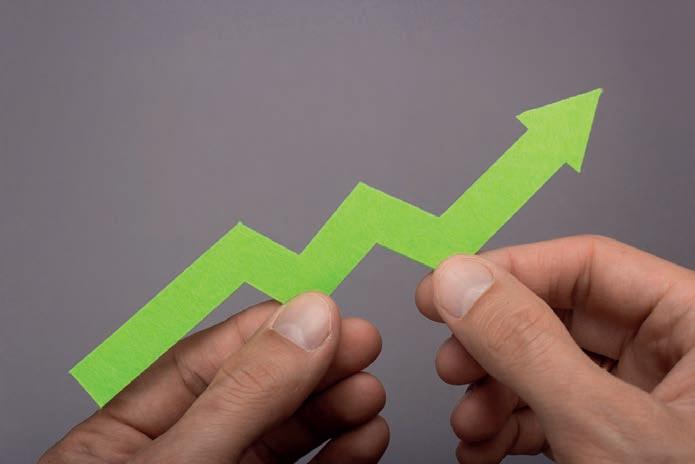
It is typical that a contractor will deliver waste collection services cheaper than a local government. This is almost irrelevant when the structural savings of appropriate logistics design are taken into consideration.
Factors outside the control of a contractor or a Council often drive collection costs way before this issue has to be considered.
For example, density and street parking effect productivity. Depot location and disposal location are two of the key drivers of cost. This means that the time taken to drive to a collection area, and the time taken to drive to a disposal point are items that drive a significant amount of the cost to serve, for which the contract versus day labour question is almost irrelevant.
“IPART identified around 3.5 million tonnes of waste material for collection by Councils annually,” the veteran said. “Now let’s take some top-down analysis to provide a high level view of the impact of depot and disposal location. If, on average payload of each side lift vehicle loaded was about 6 tonnes, that 3.6M tonnes would generate over 597,000 loads of waste, recycling and organics per annum.
“Over a 25-year period (the short end life of some key waste infrastructure), after the material is picked up, that 597,000 loads would cost around $2.17B to transport to a disposal location, which is 20 minutes from the point of collection. We hear a lot about 20-minute neighbourhoods these days, and a significant amount of work has been done on this concept with
transfer stations in the waste sector. Most Councils in metropolitan Sydney would only dream of having a facility within 20 minutes.”
If the one-way transportation was increased to 10-minute increments, the additional cost to transport is about $1.08B over the same period, same tonnes.
“In NSW, this cost of transporting waste every extra 10 minutes is due to the failure of our local and State politicians to understand the industry’s costings. Then add Queensland, Victoria and other States, and the cost of unnecessary transport is high,” he said.
Figure 2 shows the difference in cost between a 20-minute disposal drive versus a 60-minute disposal drive. This will cost the NSW community more than $4B.
The veteran believes that if Australia is serious about reducing the cost to serve, an exercise in optimisation of the number and location of disposal or transfer stations will be a more fruitful place to start than pitting local government against contractor.
Another beneficial approach would be for local transport depots owned by local government – of those that are left – or some other entity, which remain in the hands of the Council and then each contractor can use them as a base to have trucks closer to the point of collection.
The Levy
Then there is the levy. By IPART’s figures the levy represents 45 per cent of the cost of waste services, and about 20 per cent of the overall cost of local government collection

services.
In its response to the IPART review, the City of Newcastle prepared an interesting graph (repeated here) that shows the growth in the Metropolitan and the Regional Levy Area amount ($/t), as a percentage against growth in CPI over the same period. See Figure 3.
A statement that waste service costs had outstripped CPI over the same period, can be easily explained by this single graph, and IPART’s own numbers in Figure 1. As already mentioned, the monopoly in disposal in particular was created by the Government with Waste Service NSW and then the sale of those assets to a single private sector player.
IPART’s ultimate fizzle
While IPART raised a number of relevant issues, including the life of assets, lack of planning, poor procurement and other items, which kick started a potentially beneficial

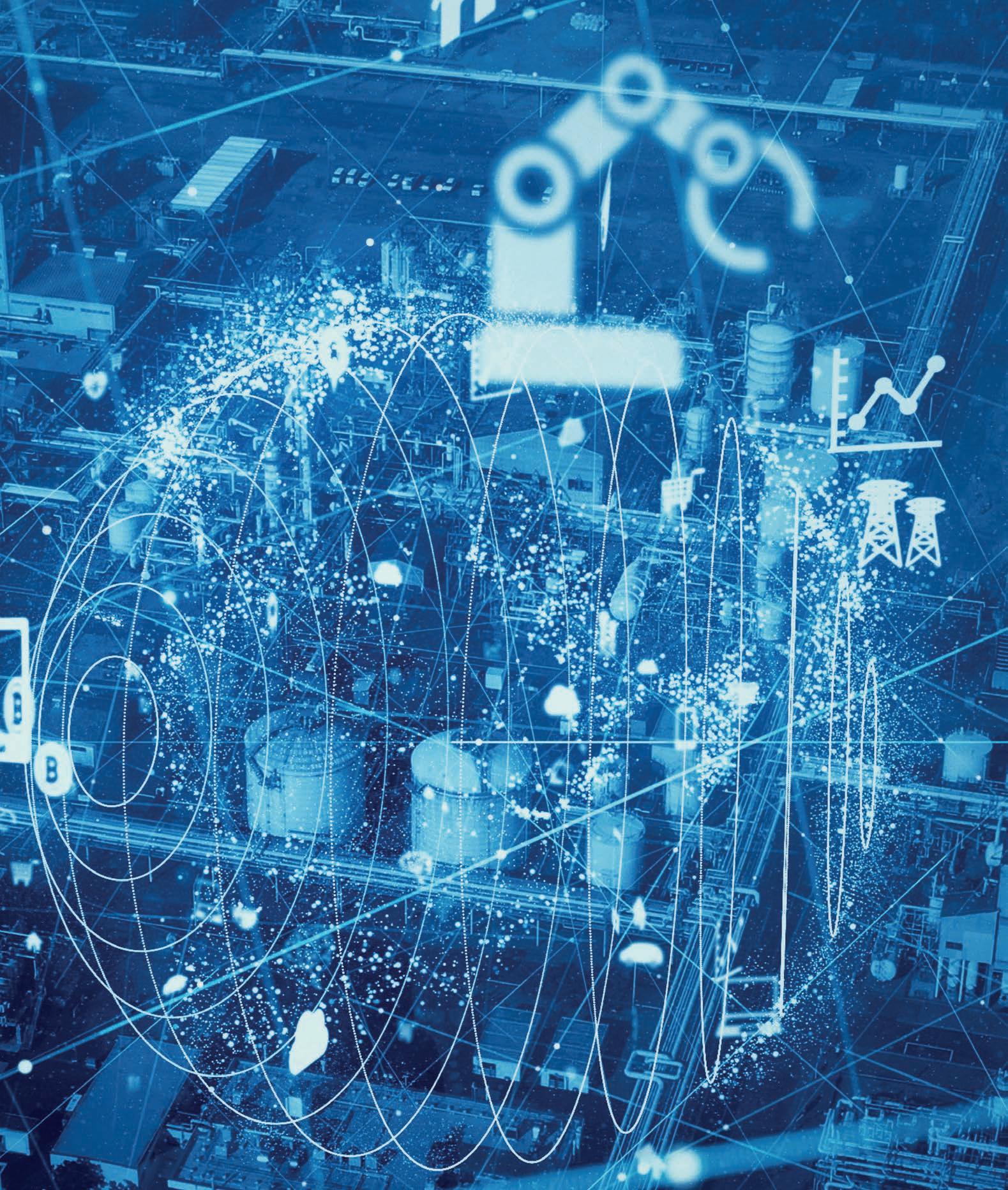
levies have gone
going
not
He said that the fact that a number of excellent debates and discussions seemed to have commenced as a result of the IPART review promised the potential to bring the parties to a common goal. However, it was not to be.
“As we raised the politicisation of the bureaucracy and the proliferation of content free spin doctors above, the waste sector can be hard to understand for those who are content light,” he said.
“Like so many who favour form over function, collective heads of the spin doctors within IPART burst in their efforts to understand the matter. As a result, they threw their hands in the air and, perhaps not in the absence of good internal advice, but in spite of it, IPART – from left field – proposed solutions off the table all the way through and proposed a ‘voluntary rate peg’.”
The veteran asserted that local government finance heavyweights were mobilised by this own goal and quickly created a furore to protect the delivery of their footpaths. As a result, the public was informed the
the
waste
Daily news updates at www.insidewaste.com.au36 INSIDEWASTE OCTOBER/NOVEMBER 2022
IPART //
Figure
1 – Breakdown
of services costs based on IPART August 2020 Discussion Paper on DWMC
Although
landfill
up,
all
monies collected are
to
initiatives.



‘voluntary rate peg’ is off the table, and IPART would flick the matter back to the people it argued had failed to continue the completion of audits in the first place i.e. the Office of Local Government.
“To say that a rate peg in the waste sector would be a disaster is an understatement,” he said.
“Waste is a highly changing and regulated environment, which requires a long-term view and long-term

infrastructure, and brings together a number of disciplines.
“IPART’s efforts have failed to understand, that part of the issue for local government, is not only the conflicting priorities of the various agencies who are its master as raised above (OLG, EPA, IPART etc), but also the internal conflicts and pressure inside local government.
“This is like the IPART spin doctors, who couldn’t fathom the
detail of the industry they regulate, local government finance, project management, communications and other executives, also struggle with the same inability to understand our industry.”
The opportunity right in front of our faces
Perhaps the most disappointing part, he said, is that the agency charged with the review (IPART) does have
potential models that could address some of the structural issues raised. The power and water industries are regulated. It was not recommended these models be copied exactly, yet facets of these could resolve some of the issues. The waste industry, and its future are larger than local government. Nor can the private sector solve the issues itself.
“Let’s face it, everywhere there is a Coles, there is a Woolworths,” said the veteran. “Imagine if this duplication of infrastructure was adopted in a government setting.
“But the industry is complex, and with changes in recycling, circular economy and climate change, the waste industry will only become a little more complex and intertwined with other sectors as we move forward. The current governance model is not capable of managing this transition.”
There are many models available, and our industry veteran was most definitely not advocating bigger is better, or a repeat of the Waste Services NSW model. But one example was argued to be replicable and scaleable across the country in both metropolitan and regional areas.
“First, an overarching waste authority – however named – to provide oversight and a regulatory framework,” he said. “Second, regional bodies to deliver the framework at a regional level. Separate utility-type

Daily news updates at www.insidewaste.com.au38 INSIDEWASTE OCTOBER/NOVEMBER 2022 IPART //
IPART identified around 3.5 million tonnes of waste material for collection by Councils annually.
Figure 2 – Cumulative cost of transport once collected
regional authorities are an example of entities with their own legislation, which enshrines the essential nature of waste services, and requires the delivery of services to certain standards, and with diversion levels that required to be met.


“Now before those of you in local government get upset, the argument was put – to the ‘wasties’ out there – how much time do you spend educating, and re-educating people you should not need to educate? How much time is spent arguing about how
the capital required to meet legislated state targets can be afforded because we have to build another bike path to nowhere? Imagine if your finance department actually understood waste. And for the private sector parties tearing their hair out, how many
times have you whinged about local government not getting it?”
The model would not necessarily be focused on those regional bodies delivering any of the specific services, rather on the planning, coordination and enabling of regional waste management precincts or ‘hubs’.

These regional bodies could be responsible for ensuring the acquisition and appropriate planning is in place for these hubs. The regional body would take a longterm view and approach to the hubs, including funding removing some of the barriers to entry and risks to the private sector, he said.
The private sector would be both a needed partner in contracting and delivery of some of the services required, but also able to take part in the hubs in services or opportunities that are not necessarily core business to the regional body, but still part of the waste ecosystem.
The objective of the discussion with our industry veteran was not to provide all the answers, just to contemplate the opportunity lost to solve some of the structural issues that the IPART conversation had raised. iw

Daily news updates at www.insidewaste.com.au OCTOBER/NOVEMBER 2022 INSIDEWASTE 39
Figure 3 – Metro and Regional Levy amount and % growth versus CPI growth same period – source City of Newcastle submission to IPART review of DWMC, sourced from IPART website // IPART Did you know that MRA also works in Tasmania? Infrastructure reviews and best practice planning Auditing Compliance management Strategic planning Organics Education Carbon BESTSMALL CONSULTANCY Call 02 8541 6169 or email info@mraconsulting.com.au mraconsulting.com.au Our new Launceston office provides the same range of specialist services we offer nationwide.
“Monster” facility to recycle most waste streams under one roof
growth forecast for infrastructure and development over the next 10 to 15 years in Brisbane was high.
By Inside Waste
RINO Recycling is a Queensland-based company that has been established by Queensland Recycling Technologies (QRT), a joint venture between Alceon Qld and Brisbane Recycling Consortium (BRC). In 2021, the conglomerate bought Byrne Resources, which is based in the Pinkenba suburb south of Brisbane International Airport, with the intent of building a multi-purpose recycling facility that would service the greater Brisbane area.
The company has been given the go-ahead to build the facility, which will be one of the biggest – if not the biggest – of its type under one roof in the world.
CDE is a Northern Ireland-based company that specialises in wet processing equipment for recycling solutions. Due to the experience that CDE has they tendered to supply a wash plant to the new Rino Recycling facility. They were successful in winning this tender. Jason Hartmann is the Business Development Manager for CDE’s Eastern Australia operation.
“We worked with Rino to develop a fully integrated world-class wash facility,” he said. “There’s another Irish company involved in this project called Turmec and they’ll supply the dry recycling part of the plant.”

CDE has been responsible for providing wash facilities for more than 2000 projects during the past 30 years. How does this build compare to others it has helped build?
“It’s an absolute monster,” said.
per year of material once it’s been commissioned. That’s across several different feedstocks – there is concrete wash out, soil feed, crushed concrete feed and NDD, hydro tip waste feed and a skip bin feed. All these feeds can basically come into the plant simultaneously; they go through the various processes, strip out the useful material, are washed and moved along conveyors through to the end products. It’s diverting what was once destined for landfill.”
Daniel Blaser, the General Manager of Rino Recycling, was brought in to grow and professionalise the business, as well as design, build and manage the facility once it’s up and running. He said that once they bought Byrne Resources, there was always a plan to upgrade the facility, for many reasons.
“We took over the business in March 2021, which basically had a mobile plant fleet. This meant a lot of the day-to-day part of the business required manual handling of waste multiple times,” said Blaser. “And when I say manual, not just manual handling, but material is processed many times to get the recovery and end products. This is costly, doesn’t optimise the recovered materials and has a potential for mistakes or issues.”
Blaser said Rino Recycling looked at the current business and said, “what can we do better and what should it look like?” The other part he had to take into consideration was that the
“There’s probably two key pillars –one is the 25-year State Development Plan, which calls for significant infrastructure and development in and around the Brisbane CBD and surrounding suburbs,” he said. “The other part is the successful announcement of the 2032 Olympic Games and the infrastructure and building works, as well as construction works, that go with the plan over the next 10 years. When you put the two together, the construction pipeline and development pipeline will be significant and probably at record levels for the next 10 to 15 years.”
As Blaser points out, there are two sides to the facility – the waste side – as in removing the construction and demolition waste, and then there’s the ability to produce products to resell once all the materials have been processed. The company is aiming for a 99 per cent recovery rate, with only one per cent going to landfill.
“I’m calling the 2032 Olympics the recycled Olympics, this is what we should be doing with the construction and demolition material that comes from the development of infrastructure such as the Olympic village, the Gabba redevelopment and the other infrastructure projects,” he said. “We should be trying to do this in the most sustainable manner showing the world that this is how a truly circular economy works.”
Why did Rino Recycling decide on CDE to supply the washing plant for the build?
“With the design philosophy we put together we wanted something that was fully automated and fully integrated, so when you take waste from wherever it is initially processed and move it to the next part where it can be processed automatically,” Blaser said. “Currently, we have four main waste streams, and they’re all processed separately and then moved around. The latest, proven technologies were important for us. We didn’t want to be the guinea pig for new equipment.
“We wanted a fully recycled water treatment facility to maximise our
recovery rate as it minimises material previously destined for landfill. What led us to CDE was that it was a reputable global company, well renowned for its wet processing systems and producing efficient and high-quality outputs with maximum return on investment.”
Blaser said that with the new facility, they will increase capacity and be able to keep up demand for their reprocessed materials, because as it stands, they are having issues meeting customer demand.
“As the infrastructure pipeline grows the demand is increasing. The current demand is huge and we can’t keep up with our road bases, our aggregates and our sands,” said Blaser. “We’re currently turning away skip bin waste, because we just can’t keep up. Another reason that demand is going to increase within that space, is because we’re running out of landfill capacity.
“By 2024, there’s no airspace left in southeast Queensland for landfill. The government’s not going to have any choice but to open another cell of landfill, but as everyone’s aware, this simply isn’t sustainable. There really must be ongoing discussions and encouragement to recycle and contribute to the circular economy. It is a growing industry. All those millions of tonnes that were once going into landfill will reduce because of the drive for positive change and ultimately determining the future of waste recycling. At Rino, we are determined to lead the way.” iw
CDE is a specialist in wash plants designed for waste processing facilities.

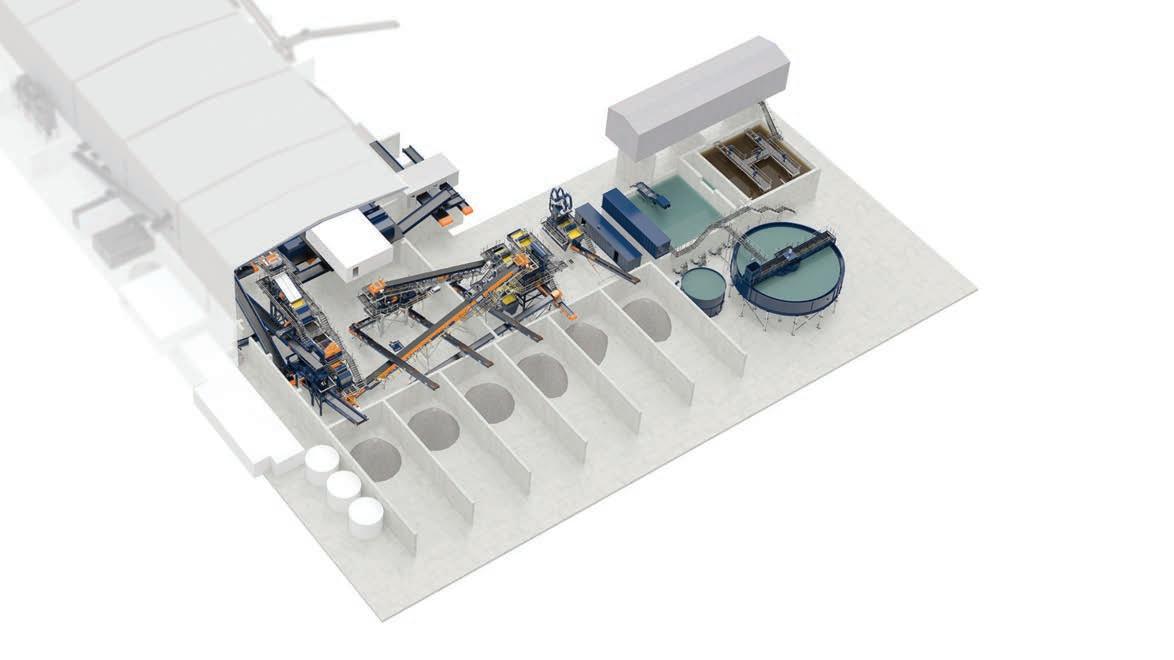
Daily news updates at www.insidewaste.com.au40 INSIDEWASTE OCTOBER/NOVEMBER 2022 Plant and machinery //
An artist’s impression shows the scope of the new facility.
Daniel Blaser (right) at the new site.
GOT A GREAT IDEA TO FIX AUSTRALIA’S USED TYRE PROBLEM?



WE’VE GOT YOUR BACK!
Funding is now available for Australian designed, developed and built solutions that will increase tyre resource recovery and decrease the burden of waste for future generations.
WE HAVE THREE FUNDING STREAMS TO ACCELERATE YOUR INGENUITY AND INNOVATION:
1. FOR PhD STUDENTS investigating new technologies and applications.
We have already provided $8million for over 50 projects that increase consumption of Australian Tyre Derived Product (TDP) made by Australian recyclers from locallygenerated end-of-life tyres. Your project could be next!
2. FOR RESEARCHERS seeking to develop new products, processes and markets.

3. FOR ENTERPRISES undertaking larger scale trialling and real-world demonstrations.





Use QR Code to see the innovative projects we have funded. Contact us about funding: funding@tyrestewardship.org.au

Helping us find solutions
future
for the
The “Science” is misguided
IN recent issues of Inside Waste Sam Bateman and Mike Ritchie have gone head-to-head on landfill emissions with the former stating that landfills can be net carbon sinks and can be a better alternative than the likes of Energy from Waste (EfT) facilities, while the latter vehemently disagrees. Here, both consultants have their final say on the debate.
Why I think the science is misguided
By Sam Bateman
MIKE Ritchie’s piece in Issue 109 of Inside Waste refers to “the science” to criticise my previous articles on the greenhouse impact of landfills. He confuses the regulations produced by the regulators that deal with landfill emissions as the science i.e.CER, NGERS, EPA etc. The “science” of
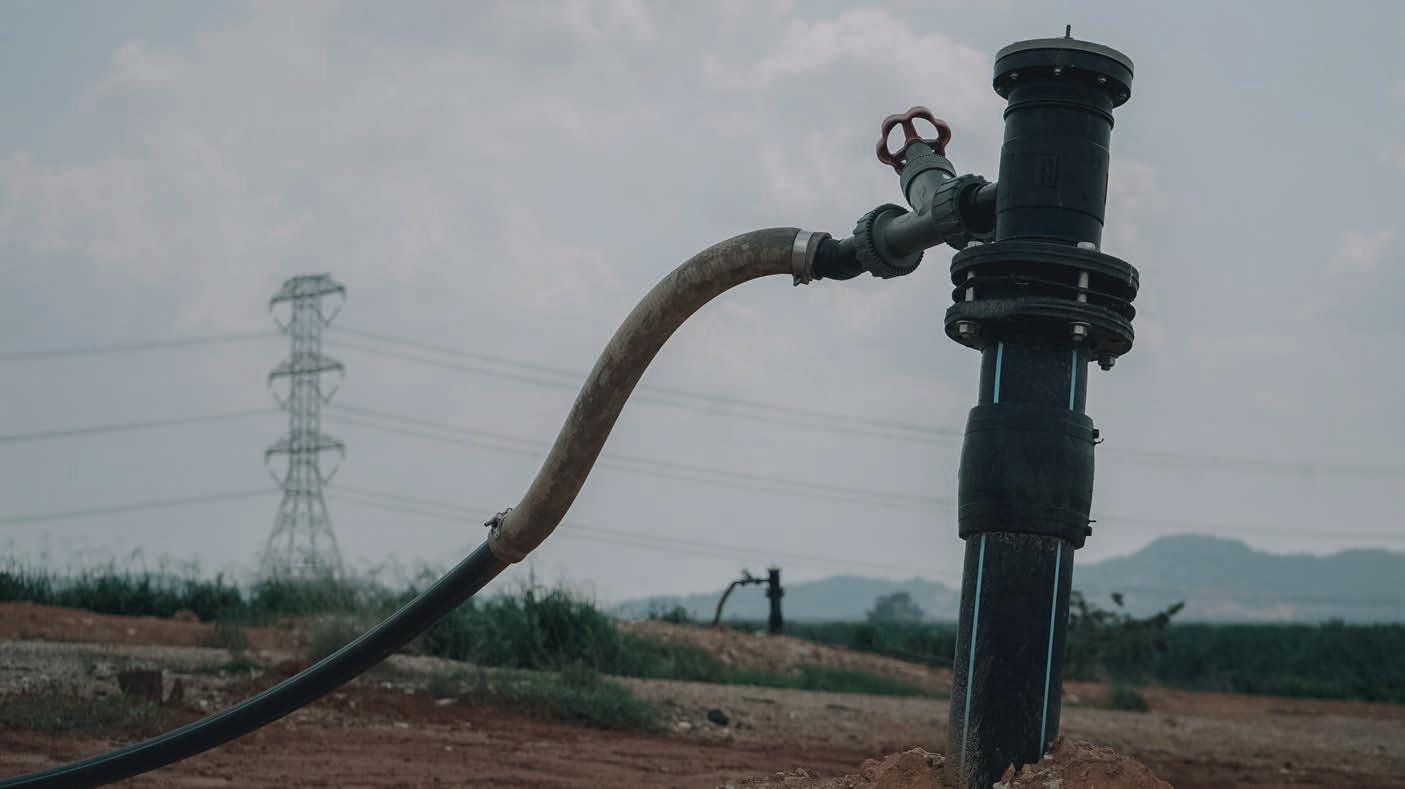
landfill emissions is embodied in Life Cycle Analysis (LCA), which uses the results of many years of experimental work and analysis of actual emissions from landfills. The regulators are all heavily influenced by the politics of Climate Change and their guidelines and estimation methods, while based on science, are inevitably compromised by other policy positions and their political masters.
In 2009, Hyder was commissioned by Hanson Landfill Services and the City of Whittlesea to conduct a comparative Greenhouse Gas LCA of the Wollert Landfill and aerobic and anaerobic MBT. The table below shows the summary of its findings. All the different waste treatments had negative greenhouse gas emissions, but Wollert performed the best in the base case.
Options 3a and 3b looked at the currently fashionable FOGO system for
dealing with food waste. There was no improvement compared to the base case.
Hyder used site-specific data from Wollert and the best available information from “the Science” to come to this conclusion, which surprised many people. The MBT options took account of the benefits of compost and soil carbon as can be seen in the light blue bar on the graphs. The landfill option produced more carbon storage for the waste inputs at Wollert than the MBT options. The black bar is the process inputs, mainly electricity and fuel. The MBT options had much greater process inputs than landfill, mainly electricity. The landfill option used diesel fuel as the main process input and records at Wollert showed that 1.4L of diesel/ tonne was used to both construct and operate the landfill. The green
bar was the product offsets, which for landfill was renewable electricity, and for the MBT compost and renewable electricity. The landfill option had as good or better product offsets as the MBT options. Aerobic MBT was the poorest performer because it did not produce a renewable electricity offset.
The study also looked at the effect of variations of the performance of the landfill and MBT options and different time frames for greenhouse impact of different greenhouse gases. The comparative greenhouse gas emissions were changed but landfill always had negative greenhouse gas emissions.

Mike makes the point that Wollert was a well-run landfill and others would not be as good. That is the approach that seems to be taken in this space: use the average performance of landfills to set policy rather than use the best landfills as
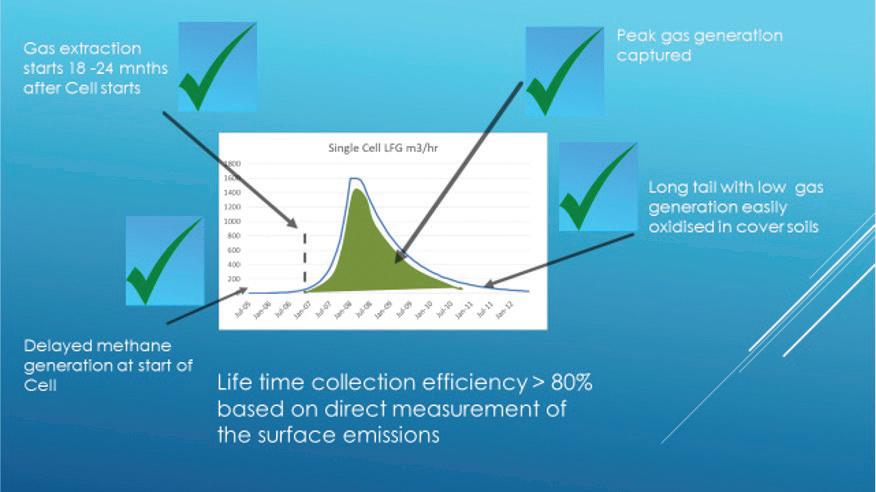
Daily news updates at www.insidewaste.com.au Thought Leadership //
Comparative Greenhouse Gas Life Cycle Assessment of Wollert Landfill: Hyder 2010
the standard others should meet. I know that I could go to any landfill in Australia (and I’ve been to quite a few) and establish a construction and operations regime that would replicate the performance we achieved at Wollert. The regulators do not seem to recognise this.
The other illustration in this article (previous page) from my presentation at the 2021 Landfill Conference illustrates what needs to be done.
Early emissions of methane are a myth. Methanogenesis in fresh MSW takes at least 12 months to establish and even when it does, methane oxidation in the fresh waste removes the methane before it is released. If collection wells are placed in the waste as soon after the waste cell is filled, then the methane is captured before it is emitted. The main route for methane emissions is through the large surface of cell batters. If sacrificial gas wells are placed on the batters as the cell fills up, these emissions are minimised. Emissions also commonly occur where the landfill meets the solid ground. These can be minimised by using a biofilter. Even the smallest landfill site could adopt these methods. Not being able to economically install generators would still leave the landfill with negative greenhouse gas emissions if it flared the methane. In the long term, as the methane flux dies away, methane oxidation in surface soils will mop up what is left.

Controlling greenhouse gas emissions control landfill odours as a side benefit. The offsite odour problems with putrescible landfills are nearly all due to fugitive methane emissions, not to odours from the tip face, as the EPA would have you believe. These emissions come from the batters and the edges of the waste cells where fissures often develop. There are solutions to capture these potential emissions that are not hard to achieve. If a landfill doesn’t cause off-site odours, it is also controlling greenhouse gas emissions.
Mike refers to the Waste Hierarchy. This is a quasi-scientific evaluation tool that was proposed to support State Government’s Landfill Levy policies. There was no research to back up the Hierarchy. The old Sustainability Victoria commissioned Hannes Partl to do an LCA into the greenhouse impact of different waste strategies. Partl did a thorough job and is no acolyte of landfills, but his analysis came to the same conclusions as Hyder if you used a more reasonable collection efficiency for landfill methane and included carbon storage. Sustainability Victoria specifically instructed Partl not to take carbon storage into account. Partl
reviewed the Hyder LCA and only had minor comments to make and supported the analysis.
My view is the current State Government policies to reduce landfilling are there to justify the enormous Landfill Levies that are charged, much to the benefit of the State treasuries. Getting rid of Landfill Levies, and instead using the funds to construct and operate landfills to a much higher standard, will save the community a lot of money and still provide greenhouse sinks. Recycling and re-use can also continue under this scenario. Maybe then the rentseeking alternative waste treatment industry can be put to bed. Of course, in some circumstances alternative waste treatment is preferable for specific environmental and land-use grounds, but that certainly is not the case in Victoria.
Mike disagreed with my comment on creation of public open space. The Wollert landfill has been successfully revegetated with native plants with the aim of regenerating the environment that existed before grazing started in the area. The native vegetation is supporting native animals and birds. The area around Wollert will be a large residential housing area. Developments are approaching from the south and east and more will be built to the west. The huge void created by the quarrying activity is being converted into a community asset for the future. The Waste Hierarchy doesn’t take this into account. The value of green spaces in our crowded urban environment is significant.
Pumping out methane is not the answer
By Mike Ritchie
CLIMATE change is one of the greatest risks that humankind has ever faced (with the possible exception of a nuclear holocaust). Everything we do and every policy we set should now be considered in that context.
It is simply incomprehensible that we would encourage landfill methane emissions (methane is 28 times more potent than carbon dioxide), when we have realistic and cost-effective alternatives.
The climate is warming and with that warming will come catastrophic flooding, cyclones, droughts, famine and the risk not only of economic disruption but of significant economic decline.
Landfill emissions are only 3 per cent of global emissions (and of Australia’s emissions) but they are readily abatable with current technologies and science. For that reason, reducing landfill greenhouse emissions is a “no regrets’ option.
Sam continues to argue that putting organics in landfill will not generate greenhouse gas emissions and that landfills are a net carbon sink. Both these claims are wrong.
They are wrong in science, and they are wrong in greenhouse accounting terms, as I set out in my previous paper. No credible regulatory agency allows for sequestration of carbon in landfills and that includes the US EPA, the Australian Clean Energy Regulator and the National Greenhouse and Emissions Reporting system.
If we put organics into landfill, we will increase greenhouse gas emissions. It is as simple as that. That is why State Governments are now mandating food and organic collection systems to recover these materials or composting and energy generation via anaerobic digestion.
Furthermore, the planet doesn’t care when emissions arise – any emissions will contribute to climate change. Even if Sam could prove that cardboard, for example, is still in the landfill after 60 years (this is the longest period anyone has excavated a landfill) he needs to prove that it will still be sequestered and stable after 1060 years or longer, for his claims to be considered valid.
He argues in his recent paper that a Hyder report prepared for him, shows carbon sequestration and that his landfill was acting as a carbon sink. That is wrong.
Hyder has simply assumed a sequestration rate in the landfill. They have no basis in evidence or carbon accounting to assume any sequestration rate. I recall that the paper was criticised at the time it was released on this point. And that included by some other Hyder staff.
It is important to acknowledge that most landfill owners now support diversion of organic waste from landfill and into composting and anaerobic digestion. They accept that gas capture systems are not perfect and never can be. They accept that organics can be put to better uses. There will always be a role for landfill, but a home for organics is not one of them. iw
Daily news updates at www.insidewaste.com.au OCTOBER/NOVEMBER 2022 INSIDEWASTE 43 // Thought Leadership
Ritchie argues that any methane emissions are bad for the atmosphere so why even entertain the idea of creating the noxious gas.
Finalists announced for waste
NOMINATIONS are in, finalists have been announced – the 2022 Waste Innovation and Recycling Awards (WIRA) will soon be upon us. Held in conjunction with the Waste Expo Australia Event, the awards highlight

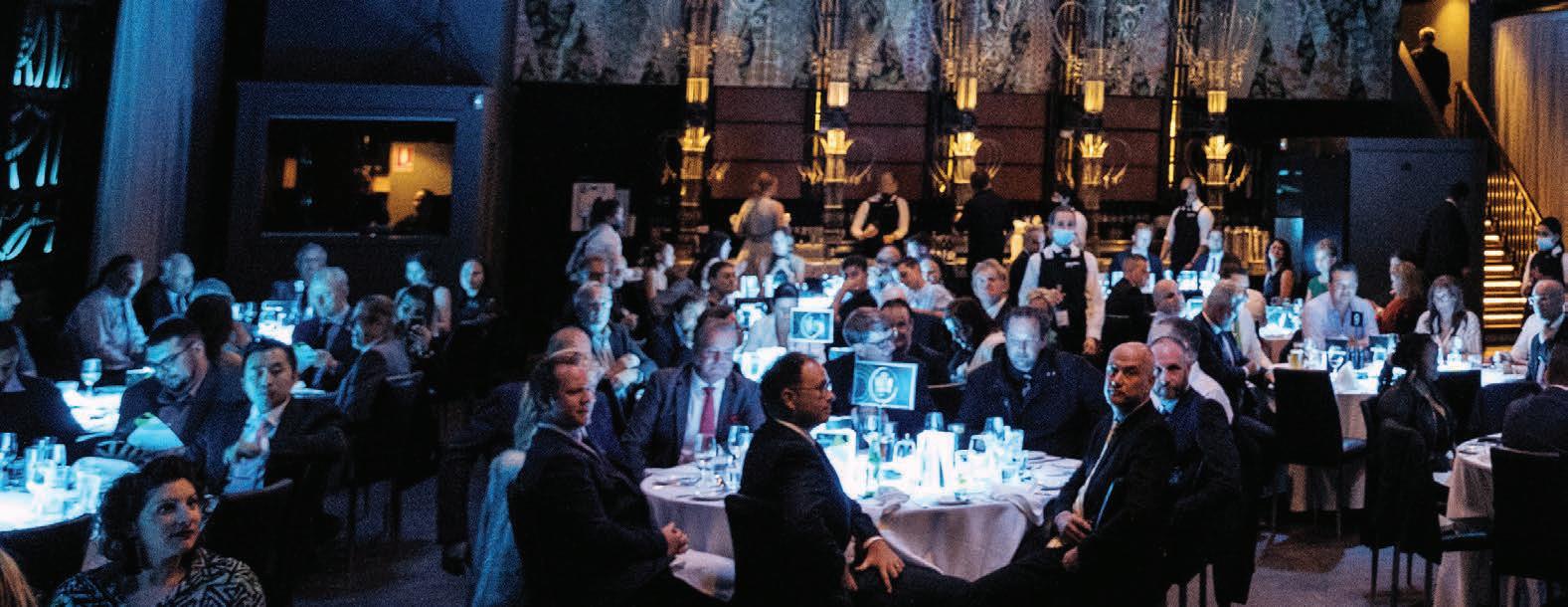
excellence in a variety of categories that cover the whole spectrum of the waste industry.

This year saw a record number of nominations in many categories, the vast majority of which were fantastic
and deserved consideration to make the final cut. As with any awards ceremony, there has to be a line drawn as to who makes the finalist list and the WIRA Awards are no different. On behalf of the team at
Inside Waste and sister publication Waste Management Review, we say well done to the finalists, and congratulations in advance to the winners on the night. And the finalists are:
Operational

Daily news updates at www.insidewaste.com.au44 INSIDEWASTE OCTOBER/NOVEMBER 2022
Awards Finalists // Bega Valley Shire Council won the Outstanding Facility Award in 2021. Outstanding WARR Project: Metro • The Great Bin Count – City of Stonningham – Stonnington • RecycleSmart Pilot – City of West Torrens • Extended E-Waste Drop-off Days – Town of Cambridge • Mordialloc Freeway Project – McConnell Dowell Outstanding WARR Project: Regional • Upcycling organic waste into protein – Goterra • Four Bin System - (Let’s get sorted) – Macedon Ranges Shire Council • SCC Integrated Recycling Operations – Shoalhaven City Council • BioAgri Biocompostable Mulch Film – Australian Bio-Plastics
Excellence • The City of Port Phillip – City of Port Phillip • Repurpose It Operations team – Repurpose It • Albury City Resource Recovery Team – Albury City Council • EMRC Operations Team – Eastern Metropolitan Regional Council Innovation Award • Packamama’s eco-flat bottlePackarama • Recycled glass construction products – Orca Civil • Magnesium wastewater recovery technology – EcoMag • TOMRA Tip n Go Bulk Container Recycling – Tomra Collection • Samsara fights plastic waste – Samsara Eco
Sponsored bySponsored bySponsored by Sponsored by
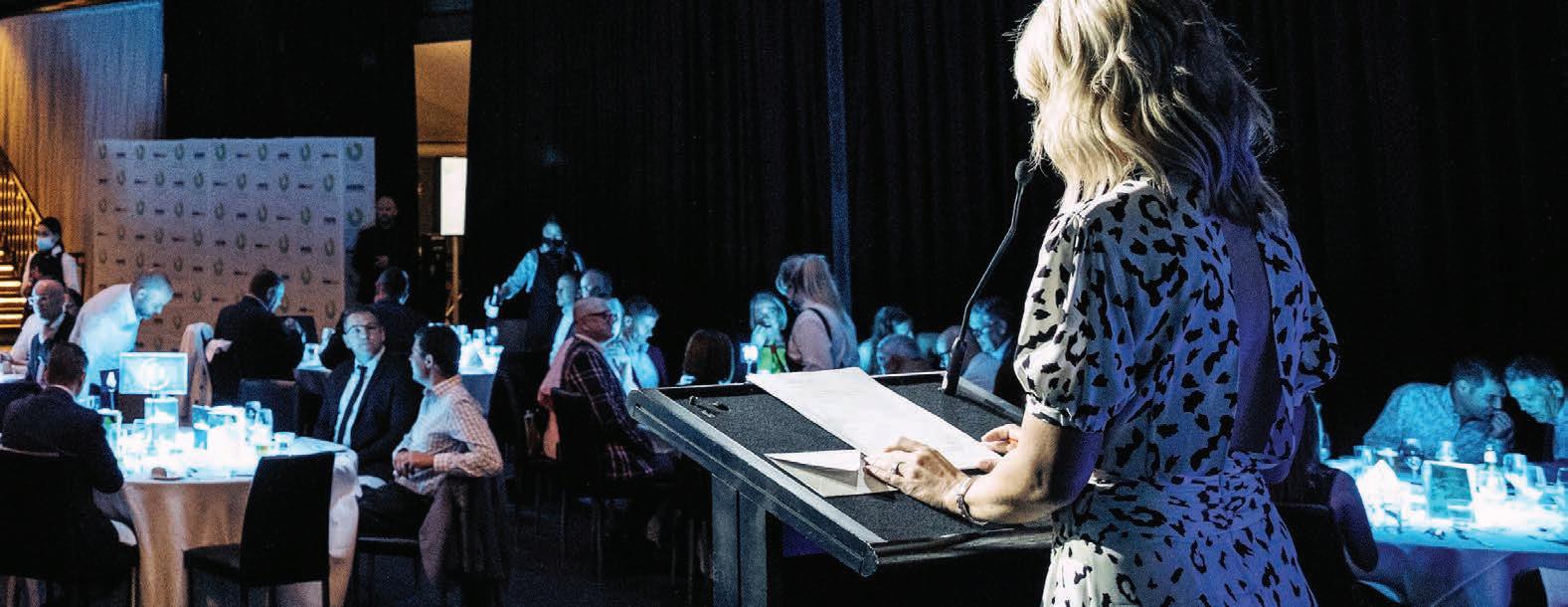
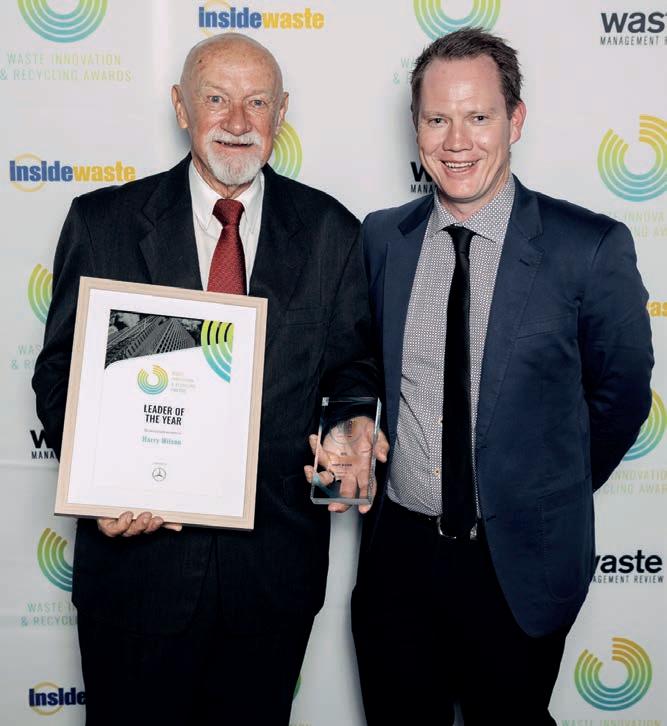



Daily news updates at www.insidewaste.com.au OCTOBER/NOVEMBER 2022 INSIDEWASTE 45 // Awards Finalists WARR Workplace of the Year • The City of West Torrens – The City of West Torrens • Green Industries South Australia – Green Industries South Australia • MRA Consulting Group – MRA Consulting Group • LGI – LGI Leader of the Year • George Hatzimanolis – Repurpose It • Lacey Webb – Resource Hub • Marcus Geisler – Eastern Metropolitan Regional Council • Chris Gusenzow – REMONDIS Australia Small Consultancy of the Year • A. Prince Consultants • Talis Consultants • ASK Waste Management • MRA Consulting • Resource Hub Large Consultancy of the Year • GHD • Arcadis Australia Pacific • KPMG • REMONDIS Integrated and Managed Services • Ricardo Outstanding Facility Award • SOLVE NDD Facility – Enviropacific Services • Repurpose It Organics Facility –Repurpose It • Southern Materials Recovery Facility – Re.Group • Goterra Stack - Albury Goterra • Shoalhaven High Quality Glass Recycling – Shoalhaven City Council Young Professional of the Year • Katherine Dodd – MRA Consulting • Patrick Lally – Veolia • Gordon Lo – HSR Southern Cross • Selena Ferguson – Resource Hub Woman of Waste • Melanie Sosnowski – Veolia • Alison Covington AM – Good360 Australia • Cindy Bird – Bendigo Health • Rebecca Healy – Boxhead Plastics • Josie Jones – Share the Word Design Studio Community Engagement of the Year • Confident Recyclers at Virtual MRF Tours – Mitchell Shire Council • Time to Switch – City of Monash • Multilingual community waste education – City of Wanneroo • The Little Green Bag – Shellhabour City Council 2021 Award winner Harry Wilson (left).
Susie
McBurney from Veolia (right) with her award from the 2021 event. awards Sponsored bySponsored bySponsored by
The outlook for Energy-fromWaste (EfW) in Australia
INSIDE WASTE talks to Amal Jugdeo (Senior Engineer) at global cleantech company Hitachi Zosen Inova (HZI) Australia. HZI specialises energy from waste (EfW) and renewable gas and has its headquarters in Zurich, Switzerland.
Tell us about the Energyfrom-Waste (EfW) landscape in Australia and what you think this means for the waste industry in general. Australia has only recently started embracing EfW technology and following the European residual waste disposal trend. Western Australia has taken the lead and has two large EfW plants under construction that will have a combined processing capacity of 700 kilotons of residual waste per year. In addition, Victoria granted three environmental permits for three more facilities, and there are numerous projects in the early stages
of development in the other states. To put this into perspective, the European Union has more than 500 facilities thermally treating more than 100 million tonnes of residual waste. The UK has commissioned more than 50 EfWs in the last decade.
Currently, Australia disposes approximately of 22 million tonnes of residual waste in landfills annually. Landfills are a significant contributor to greenhouse gas (GHG) emissions, which is one of the key reasons why many EU member states and the UK are phasing out the development of new landfills. EfW technology provides an alternative with a lower GHG footprint, allows waste material recovery, and contributes to our energy needs.
Tell us more about the GHG impact of an EfW plant.
Typically, one tonne of waste processed at an EfW plant results in one tonne of CO2 emitted to the
atmosphere. The CO2 emitted is either from fossil or biogenic sources. The biogenic component – typically 50-60 per cent of the waste feed – contains carbon derived from organic matter and is considered carbon neutral. The remaining 40-50 per cent of fossil carbon is the source of GHG emissions from an EfW plant. This fossil carbon is off-set by the fossil carbon cost of energy production or ‘energy substitution’; metal production - the recovery of ferrous and non-ferrous metals and quarrying – the recovery of aggregates from the bottom ash. Even without consideration for landfill diversion, EfW plants are essentially carbon neutral.
It is worth noting that plastic is the largest source of fossil carbon in waste. It follows then that better source separation of the plastics, replacement of plastic by other mostly biogenic material and greater re-use of plastic, is key to lowering the carbon
footprint of an EfW plant. However, not all plastics can be recycled due to its composition, multi-composites, and level of contamination. Furthermore, in the future, better recovery of biogenic waste (food and green organics) and non-fossil sources of electricity will change the GHG emissions profile of current EfW plants. One then must look at capturing the CO2 generated at the EfW plant directly from the flue gas –the post-combustion gas stream that leaves the plant through a stack.
The EU is investing in integrated EfW and carbon capture and storage technologies (CCS), and there are several smaller-scale commercial and pilot plants in operation across Europe. Quite a few years will pass before the technology matures and is commercially viable at a large scale.
The biogenic portion of EfW emissions presents an opportunity as they will turn EfW facilities into carbon sinks.
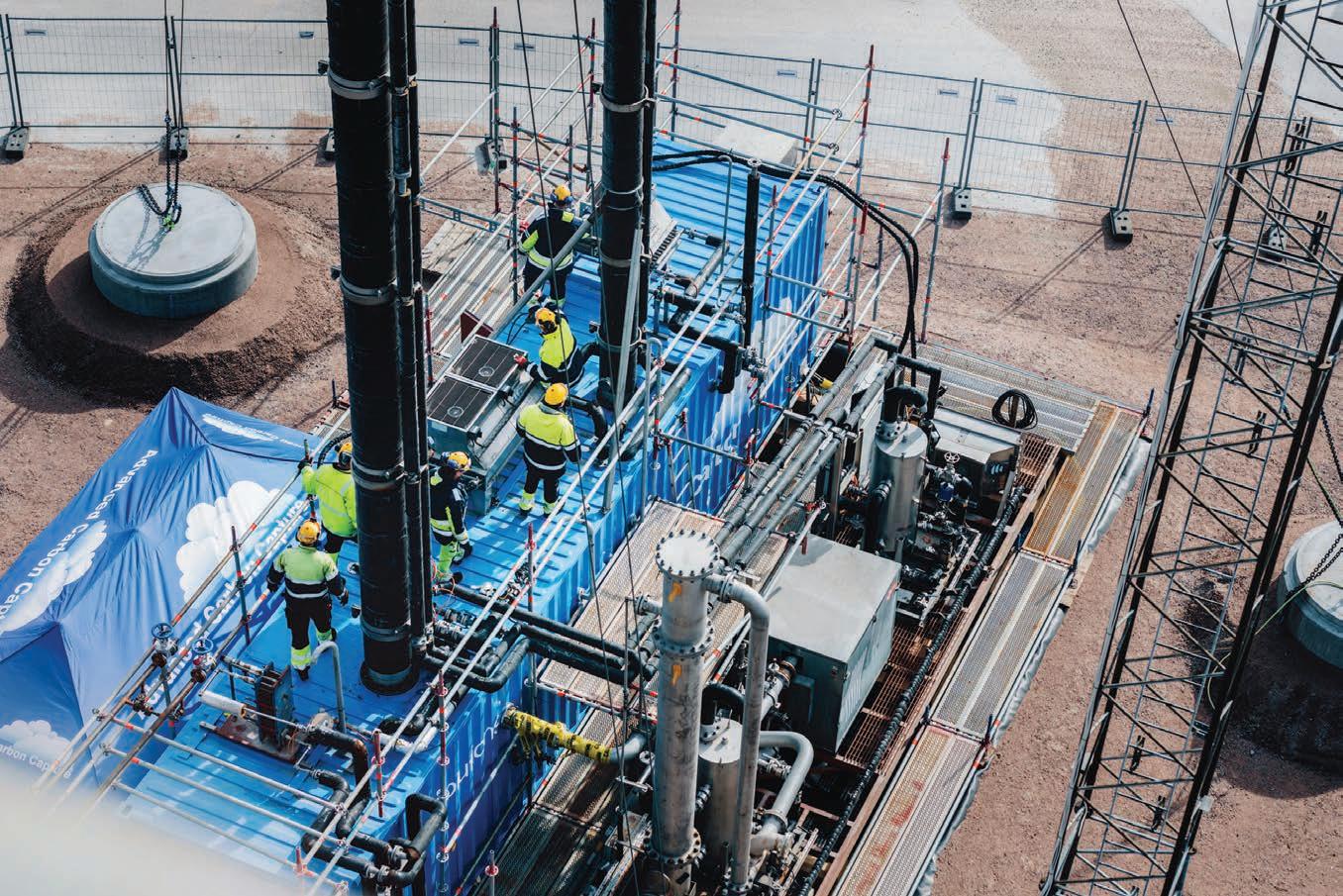
Daily news updates at www.insidewaste.com.au46 INSIDEWASTE OCTOBER/NOVEMBER 2022 Energy from Waste //
Energy efficiencies of EfW plants can be as high as 65 per cent.
What is the public’s perception of flue gas and emissions?
EfW plants are new to Australia; understandably, some communities will be apprehensive about stack emissions and pollutants. However, EfW plants have state-of-the-art flue gas treatment technologies and comply with stringent emissions limits. For example, a regular review
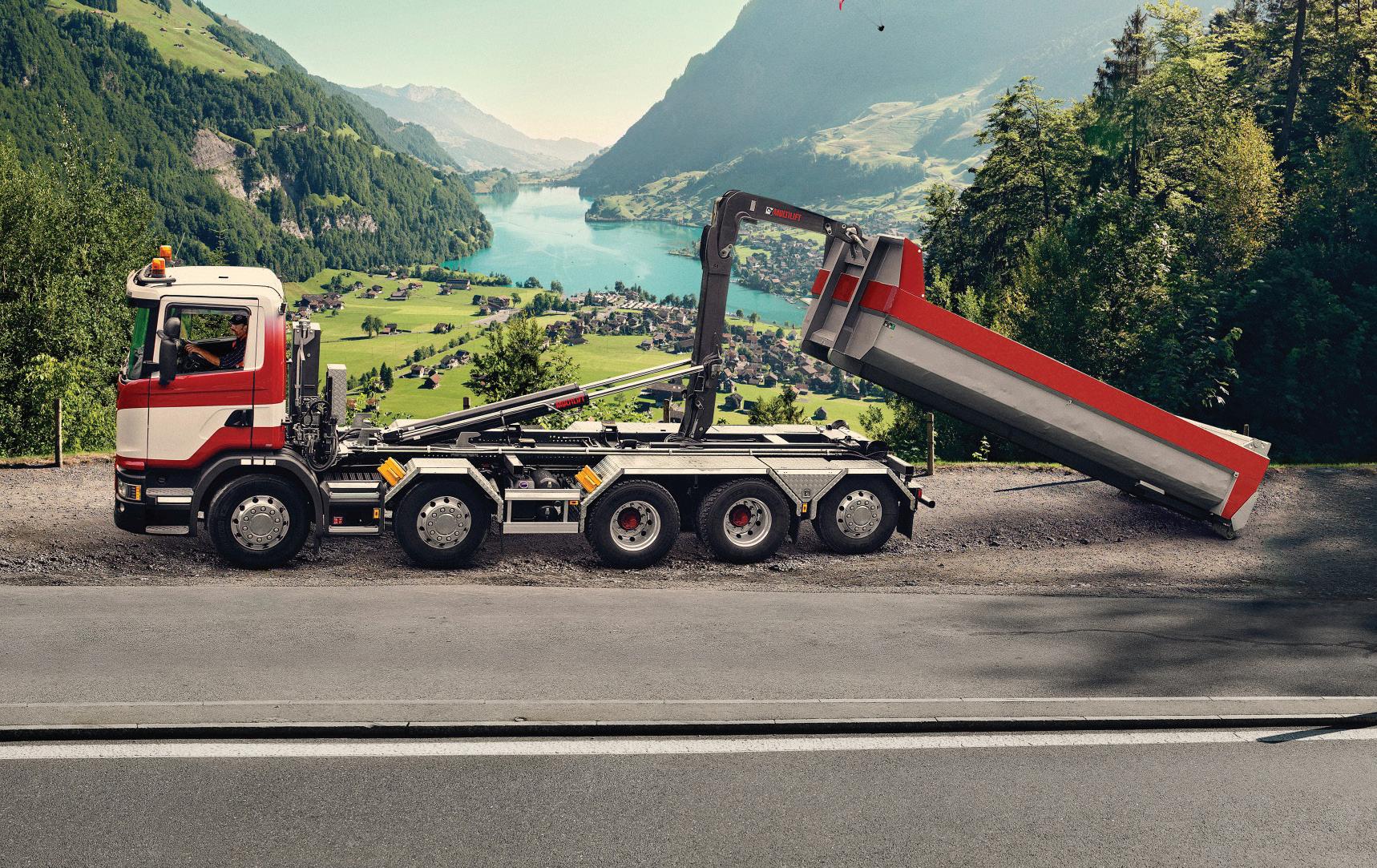
of flue gas treatment technology advances is embedded in the EU model. The EfW plants are then obliged to comply within a fixed timeframe with any stricter limits imposed in line with these technology advances.
This guarantees that EfW plants will always comply with emissions limits in line with the best available technology. Most states in Australia are aligned with the pragmatic EU approach.
Stakeholders making the case for EfW in Australia invest a lot of time engaging with local communities to present the facts on the technology.
One such example is the NSW Government’s EfW Fact Sheet comparing the emissions from an EfW plant in Dublin to other common sources of emissions.
How energy efficient are EfW plants?
If the steam produced in an EfW plant is used to provide heat to a user such as a large industrial facility, then energy efficiencies as high as 55-65 per cent can be expected. When combined with the heat from flue
gas condensation for district heating purposes – which is common in Europe – efficiencies in excess of 100 per cent is achievable. This is not a typo. Since energy efficiency is traditionally calculated on the basis of the Lower Heating Value of the fuel, which assumes that condensation heat from water vapour in the flue gas is lost. If the steam produced is used exclusively to generate electricity, then the expected efficiency from larger EfW plants is around 30 per cent.
What happens to the ash produced?
Valuable metals, including precious metals, are recovered from the bottom ash and enter the economy again. Bottom ash aggregate is a nonhazardous material. For example, the UK uses it in the road construction industry as a fit-for-purpose material and replacement for quarry material – also in line with the circular economy principles. At the moment, in Australia, however, bottom ash is still classified as a waste stream and cannot re-enter the economy. Hopefully, in time, regulators and industry will embrace the well-
established and safe re-use of bottom ash in other jurisdictions.
Are there any other byproducts?
Today’s EfW plants achieve about 96 per cent landfill diversion. The last 4 per cent comprise soluble salts, heavy metals, mostly zinc, inert dust and organic residues. This so-called ‘flue gas treatment residue’ can either go directly to a hazardous landfill or be stabilised with cement before disposal at a landfill site. Other than this small percentage of residue relative to the feed waste, no other continuous solid or liquid by-products are generated.
What becomes evident from all of this is that EfW technology presents numerous opportunities to maximise the recycling of material, contribute to our base load energy needs and can play a meaningful role in reducing our overall carbon footprint. Therefore, EfW plays a role in addressing the residual waste volumes that we haven’t been able to reduce so far – even with best efforts. Environmentally conscious players in the waste industry recognise EfW as a good alternative to landfill. iw

// HZI MULTILIFT Ultima is engineered with radical innovations that give greater control, safety and productivity for all loading jobs. Ready for immediate fitment from August 2022. SPECIFICATIONS | Capacity 21t | G Length 5900 | BW1070 | HH1450-1570 | HWPL | HLOS | HFBL (08) 9271 8000 | info@watm.com.au | watm.com.au MULTILIFT ULTIMA 21Z.59 V19
HZI Senior Engineer Amal Jugdeo.
Daily news updates at www.insidewaste.com.au OCTOBER/NOVEMBER 2022 INSIDEWASTE 47
Cost-effective software for council waste inventory
NECESSITY is the mother of invention, and this well-known proverb can be put into play when it comes to ASK Waste Management Consultancy and its Cooee software.
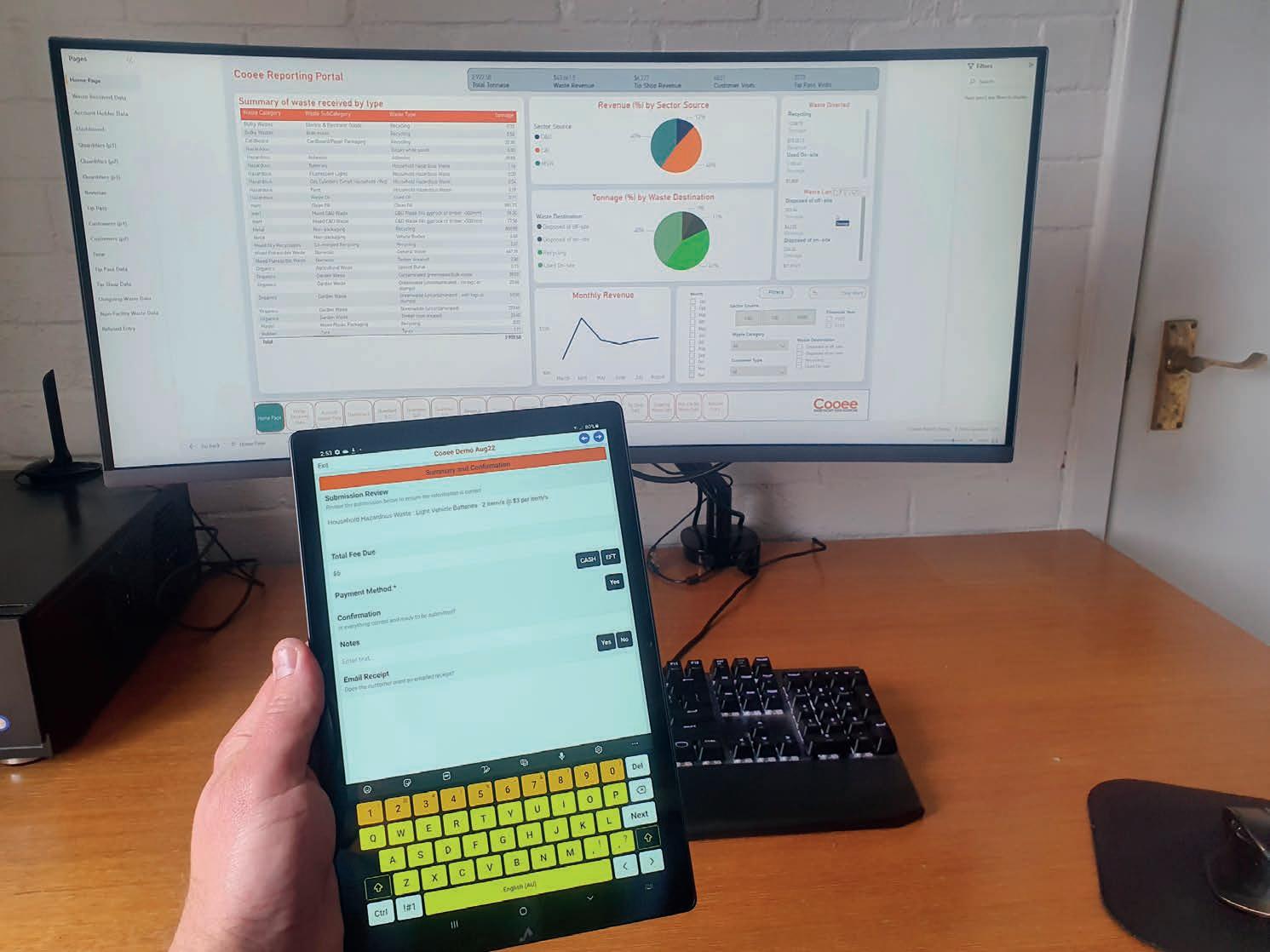
The software was designed after ASK principal Giles Perryman saw a need for a waste facility data management and reporting system suitable for smaller waste facilities. While there are a few such systems available for high-end enterprises, Perryman found that they could be prohibitive for those facilities that were of a smaller scale.
Cooee came about after ASK had spent more than a decade producing waste strategies for regional and rural
local councils. Giles and his team asked the question, “where’s the data on the waste you are collecting?”
The councils typically didn’t have any, which was problematic. It also became apparent that any type of data collection software was out of the price range of the smaller waste processing facilities.
“There were a few systems already in the market, which were generally focused on the bigger 100,000 tonnesplus facilities,” said Perryman. “And these smaller facilities just couldn’t justify that cost. After about 10 years of finding this being a common issue with several councils and facilities, we
just thought, ‘well, how hard can it be to invent our own?’”
ASK’s initial foray into the space wasn’t that successful due to the system being undeveloped, but after a few hits and misses, the Cooee system came into being. One of the key initial findings was how the information needed to be presented to the client so they could not only interpret it quickly, but also input it and get access to it easily.
“It was a little frustrating initially, but we had to get over it because the way we were reporting it back to the customers, they needed to access the files through a server,” said Perryman.
“And that meant going through local government firewalls, which could cause issues. That’s why we decided to use a web-based system so the customer can log in through their browser and they’re not pushing data into their system. They’re seeing it online. They do have the ability to download the data if they want to.”
One of the key attributes ASK incorporated into the system was its ease of use. Because a lot of the managers who would be using the system within a small council wear several hats in terms of their job descriptions, it was important to have something that could offer a quick
Daily news updates at www.insidewaste.com.au48 INSIDEWASTE OCTOBER/NOVEMBER 2022 Waste management software //
An easy
to
navigate user-interface
is one of
the key features
of
the software.
“Users literally flick it open and within two minutes they get a good overview of what’s happening at the facility – what revenues there are, what waste classes are being used, and what quantities have come in.”
overview of what’s happening in the waste space.
“They spend maybe a day a week – tops – looking at waste,” Perryman said. “We’ve set Cooee up so that it’s got dashboards where it’s already presenting the key information and graphs visually. Users literally flick it open and within two minutes they get a good overview of what’s happening at the facility – what revenues there are, what waste classes are being used, and what quantities have come in. That’s it. Then they shut it down again and go into what they’re doing next. We’re aware they’re very time poor.”
Other features include the ability to convert units into tonnages, as most of the facilities that use the system do not have weighbridges. For example, it can give a reasonable estimate of what three fridges, or a trailer of greenwaste, etc might weigh instead of gatehouse staff having to guess the weight. This, according to Perryman,
gives the councils a much better handle on what is going through the facility.
“Also, when it comes to invoicing, when they have account holders, the information can get reported straight through to finance so they can issue an invoice that day,” said Perryman. “Our customers have said the ability to invoice promptly is great. In the past, it could be they would issue the invoice six weeks after the customer had put through the waste.”
The system also allows a council to manage, count and monitor who is using tip passes and who isn’t.

One of its best features is the biggie at the end of the year – their reporting to the regulator; the information is there in front of the user. There’s a special dashboard just for that purpose, which offers up the key information that needs to be reported.
As for ease of use, it is similar to a plug-and-play system – that is, the
Typically, it takes about an hour of training for an employee to understand how to use the software.
simplicity of how it works is integral to the reason why ASK developed it in the first place. Perryman said the company has spent a reasonable amount of money on R&D to get it to where it is. He said it takes about an hour of training to get those at the coalface to use it properly. If there are any issues, ASK has a helpdesk for customers. So far, they have
Waste Transportation Optimisation
had interest from major markets in Australia.
“Cooee is used at eight facilities in Western Australia, with another six coming on line soon, and we’ve got eight facilities in Victoria,” Perryman said. “We’ve got interest in Northern Territory and New South Wales. Hopefully, we’ll be getting more interest.” iw
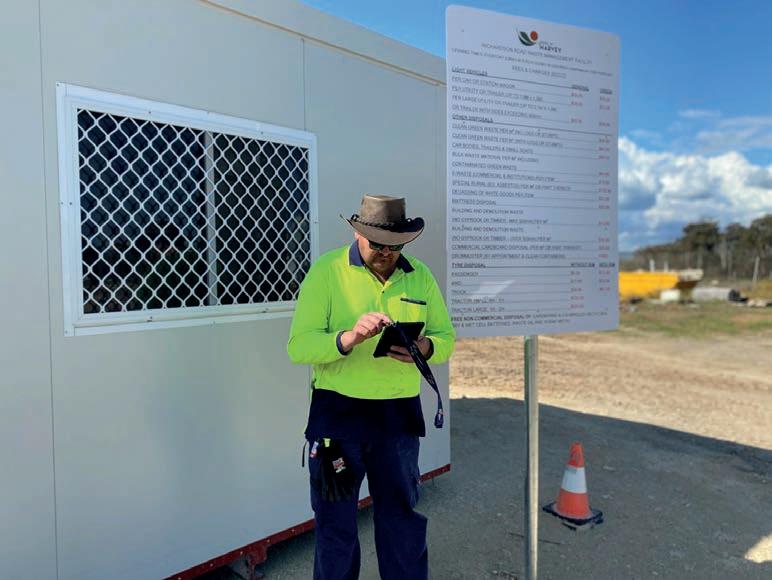
Call us on 1300 069 970
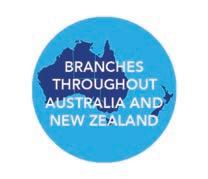
Efficient and accurate weighing of bin contents that combines weighing with bin collection, eliminating the need to weigh bin content separately.
Legal-for-trade Suitable For Front, Rear, and Side-lift Loaders
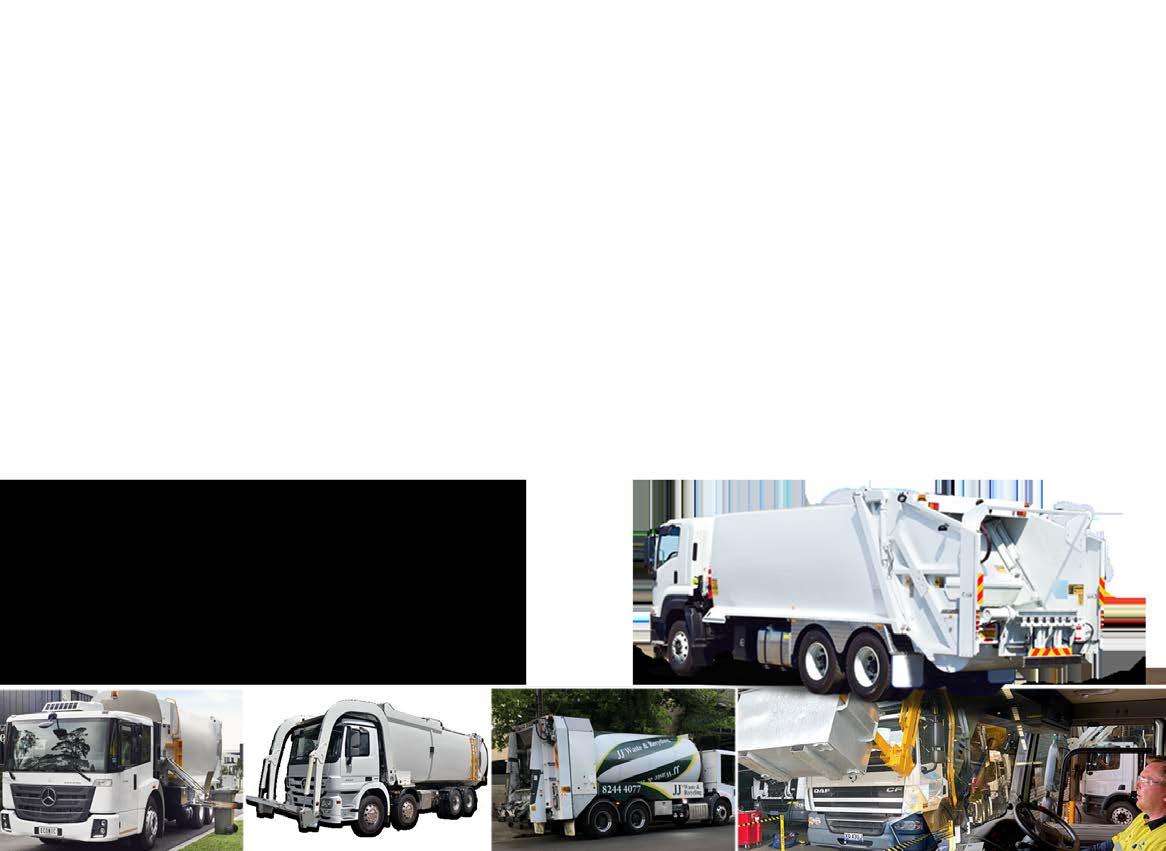
Provides high and low-resolution load ranges from up to 4000kg, determined by manufacturer’s bin lifter capacities.

Fully-automated Weighing Process
Your drivers will receive a fully-automated weighing process with no delay to the tipping cycle, an RFID interface, and data logging to third party data management systems.
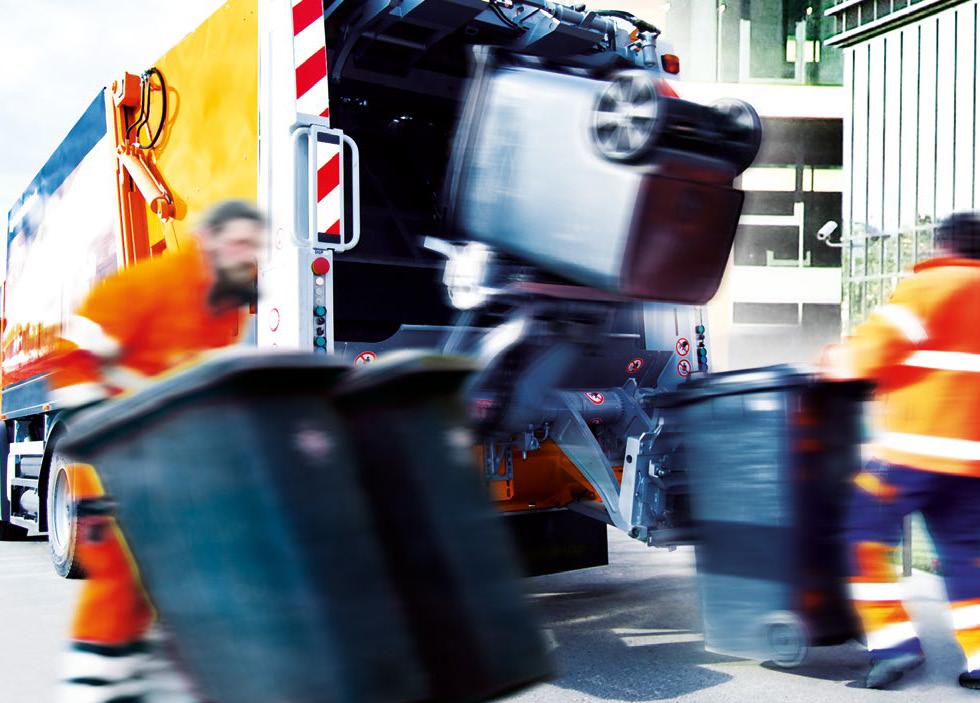
If you can’t measure it, you can’t manage it Payload Optimisation
// Waste management software
WASTE INNOVATION&RECYCLING AWARDS



WASTE EXPO

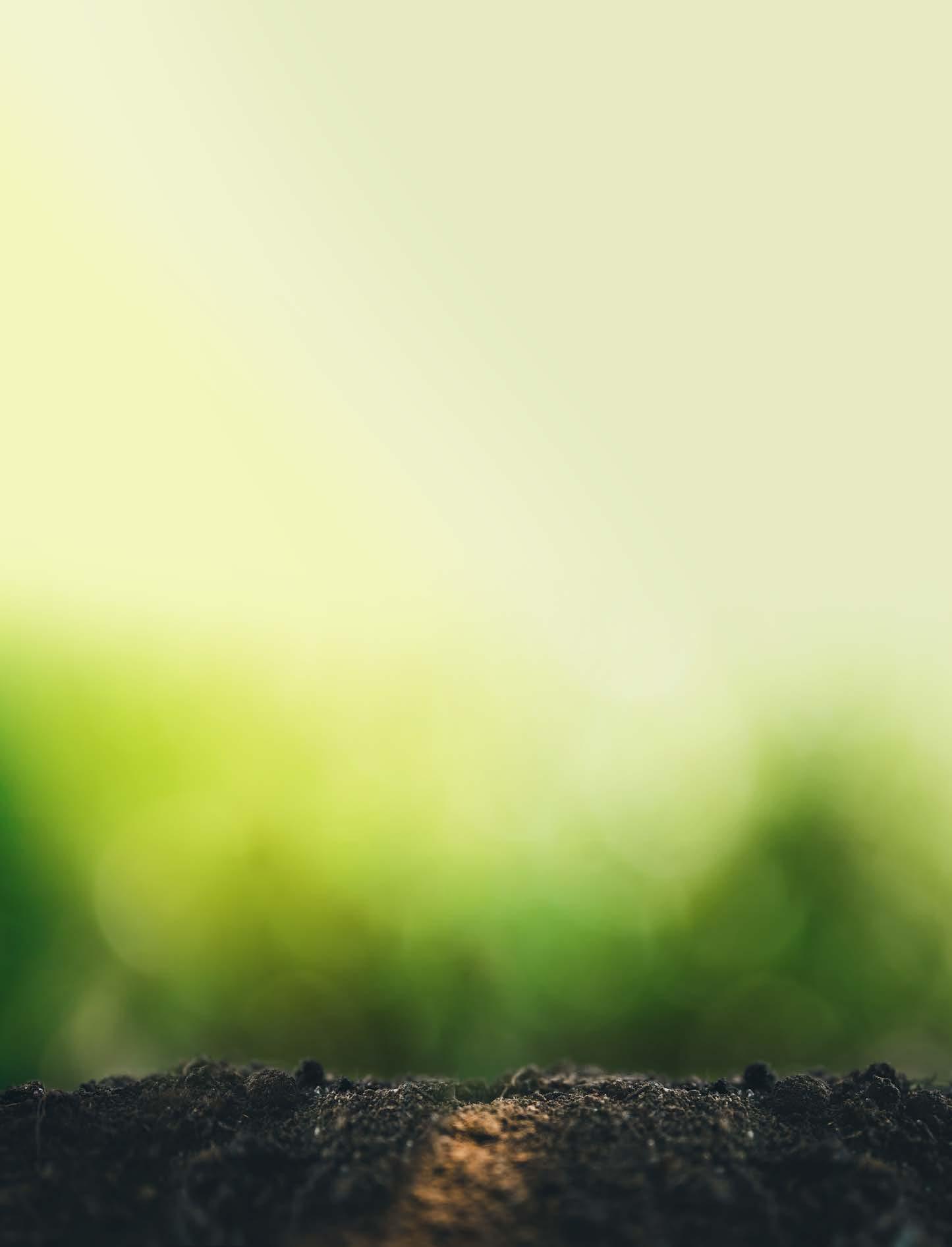
www.wasteawards.com.au
HELD IN CONJUNCTION WITH Sponsors JOIN US AS PART OF THE
TICKETS NOW ON SALE
Komptech CEA
Company Overview:
Komptech CEA is the Australasian distributor of Komptech machinery and systems for the treatment and processing of solid waste and organics waste materials for recovery and recycling. Our product range includes over 30 different types of both mobile and stationary machines that cover all key processes in modern waste processing including:
Single-shaft and dual-shaft industrial
Core Capabilities:
With a specialised product portfolio that includes over thirty different types of machines covering all key processes in modern waste handling, a consultative guiding approach to solution development for customers, and full service aftersales support and parts, Komptech CEA has become a leading supplier to the recycling and waste processing industry.
Providing customer value is our focus as we strive to be the industry’s technological leader through continual innovation. Komptech CEA is dedicated to working with you to help you solve your waste problems and identify opportunities with comprehensive, detailed solutions driven by world-class technology.
Contact Details:
Sydney 50 Skyline Crescent Horningsea Park, NSW 2171 1300 788 757 www.komptechcea.com.au
Melbourne 1/97 Monash Drive, Dandenong South VIC 3175 1300 788 757 www.komptechcea.com.au
Brisbane 11 Kiln St, Darra 4076 1300 788 757 www.komptechcea.com.au
Adelaide 260 Cormack Rd Wingfield, SA 5013 1300 788 757 www.komptechcea.com.au

Perth 1 Yagine Close, Perth Airport WA 6105 1300 788 757 www.komptechcea.com.au
Auckland 96 Gavin Street Mt Wellington 1060 0800 435 269 www.komptechcea.com.au
Key Contacts:
Deon Cope Product Manager 0408 059 231 d.cope@cea.net.au
Contact Details:
ResourceCo Head Office
Level 1, 162 Fullarton Road Rose Park, SA 5067
Phone: (08) 8406 0300
Email: enquiries@resourceco.com.au Web: www.resourceco.com.au
Company Overview:
ResourceCo (RC) is a global leader in the recovery and re-manufacture of primary resources, extracting maximum value from materials otherwise destined for landfill.
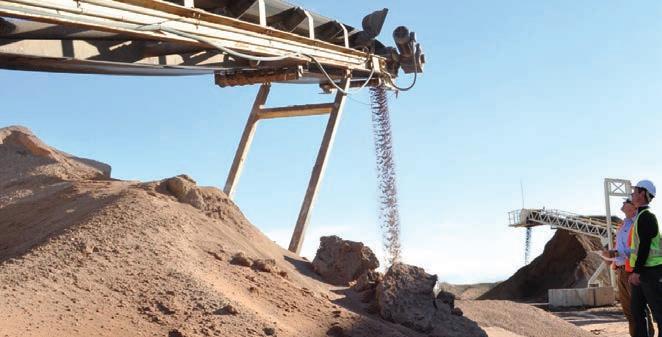




Recent Projects/Installations:
ERSKINE PARK PLANT Operations commenced at Tyrecycle’s (RC’s tyre recycling division) new multi-million-dollar plant at Erskine Park in Sydney, producing in excess of 10,000 tonnes of rubber crumb for the construction industry, generating 40,000 tonnes of TDF, and providing a local circular economy solution to rubber waste.
Daily news updates at www.insidewaste.com.au // Capabilities Statements OCTOBER/NOVEMBER 2022 INSIDEWASTE 51
•
shredders • Compost windrow turners for commercial operations • Star screen and trommel screen machines • Material separation equipment including windsifters, ballistic separators and stone contaminant separators • Stationary recycling system solutions including shredders, separators and screening machines Brands: • Diamond Z • Screenpod • Trackstack • Rowan • Komptech
ResourceCo Products and Services: • C&D & C&I Recycling • Disposal, Treatment & Management of Contaminated Soils • Renewable Energy & Alternative Fuels • Tyre & Waste Rubber Recycling • Recycled Construction Material Brands: • ResourceCo Pty Ltd • Southern Waste ResourceCo • Cleanaway-ResourceCo • Veolia-ResourceCo • Tyrecycle Pty Ltd
Hitachi Zosen Inova
Company Overview:
Hitachi Zosen Inova (HZI) is a global leader in energy from waste (EfW), anaerobic digestion (AD) and Powerto-Gas, acting as an engineering, procurement and construction (EPC) contractor delivering complete turnkey plants and system solutions for energy recovery from waste.
Since 2015, HZI Australia, a 100% subsidiary of HZI, is developing new projects in Australia, New Zealand, and the South Pacific. Its first project, the 300,000 tpy East Rockingham WtE is now in construction and will start commercial operation in 2023.
Products/Services:
• Thermal treatment of residual waste, energy recovery, flue gas treatment, and residue recycling
• Wet and dry anaerobic digestion of food & green resources, renewable power production, biogas upgrading to biomethane and bio-CNG
• Power-to-Gas for volatile electricity into renewable synthetic gas for a
carbon-neutral economy
• Development, Design, Build, Finance, Own, Operation & Maintenance
Brands:
• Hitachi Zosen
• Aquaroll, DYNOR, Kompogas,
• HZI Etogas, HZI DryMining
Core Capabilities:
Energy from Waste, Renewable Gas, Project Development, EPC, O&M, Asset Management
Recent Projects/Installations:
SOUTH CLYDE ENERGY CENTRE, SCOTLAND, UK
Fortum Glasgow Ltd, a joint venture partnership between Fortum Oyj and Macquarie Asset Management’s Green Investment Group (GIG), has awarded Hitachi Zosen Inova Steinmüller, part of the Hitachi Zosen Inova Group (HZI) since February 2022, the contract to design, build and commission the grate and boiler for the new thermal waste
Komatsu Forest
Company Overview:
Komatsu Forest is one of the world’s largest manufacturers of forest machines. We are represented on six world continents by a network of dealers and our own sales companies.
Komatsu Forest’s head office is in Umeå, Sweden, and we have two manufacturing units, in Sweden and the USA. Our own sales companies are located in Sweden, Norway, Finland, Germany, Austria, France, United Kingdom, Russia, USA, Australia and Brazil, and our network of dealers represent us on all other important forestry markets.
Our extensive service organisation takes care of the machines, ensuring that they perform their best throughout their service lives. We have workshops throughout the world, service vehicles for quick assistance, in-house machine and methodology instructors to help maximise productivity, and support functions for everything related to our machines and services.
Products and Services:
We offer products and services that
increase productivity while simplifying the working day for you as a machine owner.
We combine all our services under our Customer Care concept. This is our promise that you will enjoy the benefits of Komatsu Forest’s investments in research, development, servicing, support, logistics and innovative services. These combined resources are at the very heart of Komatsu Forest’s offer.
Our goal is to make your working day as safe, problem-free and profitable as possible, no matter where in the world you operate. Let us show you that by choosing Komatsu, peace of mind and accessibility can become a natural part of your working day.
Brands
• Komatsu • Peterson
• TimberPro
Core Capabilities:
Our world-wide network of highly trained service professionals is ready for you.
We know how important it is to be
treatment facility on a brownfield site in North Cardonald, Lanarkshire. This is HZI’s second EfW project in Scotland to move into construction within a year.
The new plant will be equipped with HZI’s own technologies such as the HZI reciprocating grate and state-of-the art boiler technology. This will enable the South Clyde Energy Centre to meet the strict emission directive requirements and satisfy the high demands placed on modern Energy from Waste (EfW) facilities.
The South Clyde Energy Centre will be HZI’s third UK EfW project with GIG after the Rookery South and Newhurst installations and HZI’s 17th project in the UK to date.

The new facility will enter commercial
operation in the fourth quarter of 2025 and once operational, will generate up to 45 MWe gross of electricity by processing up to 350,000 tonnes of residual waste each year.
For more information visit: https://bit. ly/3BvreYo
Contact Details:
Hitachi Zosen Inova Australia Pty Ltd Level 16, 1 Denison North Sydney, NSW 2060
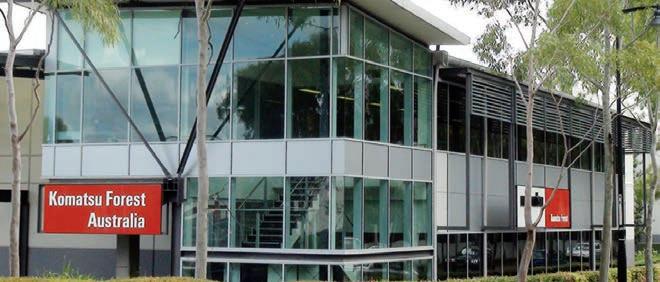
Phone: 02-8003 4110
Email: info@hz-inova.com Web site: www.inova.com
Key Contacts:
Dr Marc Stammbach 02 – 8003 4110
info@hz-inova.com
close to service and maintenance when help is needed. Therefore, we have a market-wide network of highly trained service professionals that knows your Komatsu, Peterson & Timberpro machine in every detail. They are, in turn, in constant contact with the Komatsu Forest head office so your voice or needs are never more than a call away from our collective expertise. Furthermore, we are constantly developing new services that will help you in your everyday work.
We offer:
• Workshops and field services throughout Australia & New Zealand
• Well qualified personnel with expert knowledge of Komatsu & affiliated machines

• Field Service that enables us to remain close to you and your
machine
• Support and maintenance throughout your machine’s service life
• Maintenance agreements with fixed maintenance prices and other benefits
Contact Details:
AUSTRALIA
Komatsu Forest Pty Ltd
4/11 Ave of Americas
Newington, NSW 2127
T : +61 2 9647 3600
E : info.au@komatsuforest.com
NEW ZEALAND
Komatsu Forest Pty Ltd
15C Hyland Cres
Rotorua, New Zealand
M: John Kosar + 64 274 865 844
M: Paul Roche + 64 21
Daily news updates at www.insidewaste.com.au Capabilities Statements // 52 INSIDEWASTE OCTOBER/NOVEMBER 2022
350 747
Eriez Magnetics
Company Overview:
Leading specialists in metal separation, resource recovery technologies, and developing new recycling strategies and processes.
Products and Services:
• Magnetic Pulleys & Scrap Drums
Ballistic Metal Separators
Suspended Electromagnets
Eddy Current Separators
Stainless Steel Separators
Fines Metal Recovery Systems
Airless Metal Recovery Systems
Technical Service, Repairs and On-site Inspections
Brands:
• P-Rex® Scrap Drum
• Shred1™ Ballistic Separator
FinesSort® Metal Recovery System
• RevX-E Eddy Current Separator
Core Capabilities:
Eriez designs and manufactures equipment to successfully recover and beneficiate ferrous and nonferrous metals. Identify and remove unwanted metal contaminates to minimise product rejection and maximise product purity. We can help you achieve greater recovery at a higher-grade product delivered at a lower cost per ton. Recover valuable resources from:
• MRF, MSW, C & I and C & D,
• E-waste,
• Tyre recycling and Scrap metal yards,
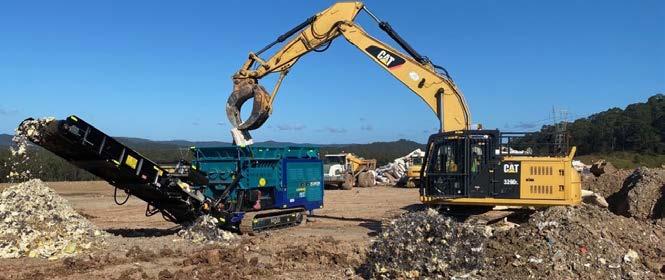
• Energy from waste feed and bottom & fly ash,
• Green waste processing, composting and road sweepings
Contact Details:
Eriez-Australia
21 Shirley Way, Epping, Victoria 3076
Phone: 61-3-8401-7400
Email: sales.au@eriez.com Web: www.eriez.com.au
Company Overview:
Davis is an industry leader in mobile waste processing in NSW. The company has a range of over 100 pieces of Plant & Equipment on offer for hire or contract in our privately owned fleet. All equipment is modern, portable and efficient.

We offer services in Green Waste Recycling, Glass & Concrete Recycling, C&D Shredding, Crushing, Screening, Land Clearing, Mulching, Haulage, Recycled Products & Landscape Supplies. Established in 1975, we are proudly Australian, family-owned and operated, contracting state-wide in NSW.
Davis has a reliable reputation and extensive experience gained over 45 years. We are regular contractors for Councils in NSW and have completed tens of thousands of government, civil and commercial projects.
For decades we have been delivering high rates of resource recovery. We process, supply and deliver quality materials using innovative and environmentally responsible solutions. We process over a quarter of a million tonnes of material per annum. CEO Eric Davis has in-depth knowledge and experience in
sustainable recycling. The company’s focus is recycling and repurposing materials that would otherwise end up in landfill using our high-powered equipment. Our aim is to transform the way the world views and values waste, striving forward towards a circular economy.
Products and Services:
• Green Waste Recycling
Low Speed, High Speed, C&D Shredding
Crushing & Concrete Recycling
Glass Recycling
Screening
Forest Mulching, Timber & Stump Grinding
Land Clearing, Road Widening & Forestry
Quality Recycled Landscaping Supplies
Plant & Equipment Hire
Bulk & Heavy Haulage
Brands:
For hire
Low Speed Shredders; Komptech, Pronar
Horizontal
Core Capabilities:
offers high-powered, mobile waste processing equipment for hire or contract
NSW.
Speed Shredders
timber & green waste. We have equipment available for forestry mulching, subdivisions, road constructions, grubbing, firebreaks. We operate our own service centre for scheduled maintenance and field repairs, this guarantees safety, quality and maximum efficiency for our machinery with minimum down time for our customers. We are dedicated to maximising productivity and efficiently recovering environmentally sustainable and quality recycled products for beneficial reuse.
Contact Details:
Davis Earthmoving
Quarrying

Daily news updates at www.insidewaste.com.au // Capabilities Statements OCTOBER/NOVEMBER 2022 INSIDEWASTE 53
•
•
•
•
•
•
•
•
•
•
•
•
•
•
•
•
•
•
•
Grinders; Diamond Z, Peterson Davis Earthmoving & Quarrying Pty Ltd • Mobile Crushers; Rubblemaster, Metso, Kleemann • Soil & Trommel Screens; Pronar, Metso • Picking Stations; Kiverco • Forestry Mulchers; FAE • Excavators 1.8 to 46 tonne; CAT, Komatsu • Dozers • Rollers, Compactors & Drotts • Wheel & Track Loaders; CAT Posi-Track
Davis
in
Our Low
process bulky C&D, logs, palms, carpet, tyres & mattresses with ease. Our Horizontal Grinders process green waste, C&D, timber, stumps & logs. Our mobile Crushers recycle concrete, brick, rock and glass. Mobile and Trommel Screens process soil,
&
Pty Ltd PO BOX 19 TERREY HILLS NSW 2084 Phone: (02) 9450 2288 Email: davisem@davisem.com.au Web: davisem.com.au
Ecocycle
Company Overview:
Ecocycle Industries has built a reputation of renown for the handling and processing of Mercury based waste in Australia. With some 20 years of experience, we have the National network with facilities in each State to support and look after our valued clients.

We deal with most of the larger waste company’s, councils, and industry direct.
Mercury is seen in lighting waste, dental amalgam, button cell batteries, TV’s – computer monitors, and lap tops, and other waste catalyst, soils etc and we are able to handle and recycle all these various types of waste.
We have a range of specialised stillages, smaller bins, Hook Bins, cabinets, boxes and DG approved containers, with DG registered trucks and DG licenced drivers.
This unique processing ability with the National footprint has allowed us to move into Battery Recycling “EcoBatt” and E Waste recycling “Eco E Waste” and

links nicely into what we do with metal recycling at Recycal. We have our foundries “Castings Tasmania” melting down our steel and making quality castings for industry in Australia and “ACL Metal Powders” using scrap copper, lead and tin to make Copper based powders for our export markets. This vertical integration allows to use most of the recover metals in house and have the highest recycling rates while making green products from recycled metals and solar power.
You can be confident when using our group you will have your materials recycled safely and efficiently, with a first class service back up with quality equipment and containers that will give you the confidence and comfort needed.
Contact Details:
Ecocycle Industries
5-11 Reo Crescent Campbellfield Melbourne Victoria 3061 Phone 613 93089415
Key Contacts:
E Waste/Mercury
Tyson Ord 0433205840
tyson.ord@ecocycle.com.au
Batteries
Peter Cage 0428722144
peter.cage@ecobatt.net
Metals
Jarrod Munday 0431319087
jarrod.munday@recycal.net
Company Overview:
Tricon is one of Australia’s leading suppliers of mobile crushing, screening, recycling, conveyor and associated spare parts. Tricon is also the exclusive distributor for Superior Industries on the east coast of Australia. Founded in 2001, Tricon is now widely recognised as one of Australia’s leading materials handling machine suppliers. Tricon’s industry reputation is built on our track record of continually meeting customer expectations and demand for supply, as well as value-add services including maintenance, servicing, inspections, training, and repairs.

We understand the importance of the productivity and reliability of our products to your business. We also understand the value of minimising downtime and offer a highly responsive after-sales and spare parts service.
Our attention to the detail helps your business in its day-to-day operations, ensuring efficiency and productivity. We’re also committed to building longterm relationships with our customers through customised after-sales programs.
We ensure our customers receive the right equipment, at the right price, delivered on time to meet project schedules. We pride ourselves on acting as a trusted partner who can help educate and inform our customers on new product development and training. Tricon has a well-established and loyal customer base, having dedicated ourselves to deliver exemplary customer service, support, and satisfaction for over 20 years.

Our trained service engineers have experience with a wide range of crushing, conveyor, and screening equipment. We have access to a huge range of OEM and after-market spare parts, ensuring the longevetiy of your machine.
Our products and services meet, and in most instances exceed, Australian quality, safety, and environmental standards. Tricon works in alignment to AS/NZS ISO 9001-2016 and management systems comply with Commonwealth and state legislation. Our suppliers, fabricators, and designers work safely and efficiently all using industry best practices, as well as

Daily news updates at www.insidewaste.com.au Capabilities Statements // 54 INSIDEWASTE OCTOBER/NOVEMBER 2022
Tricon Australian OHS & workplace safety practices. • Recycling Trommels • TeleStackers • Mobile Conveyors • Impact Crushers • Cone Crushers • Conveyor Pulleys • Dewatering Plants • Blending Plants • Conveyor Components • Spare Parts Contact Details: Tricon Mining Equipment 11 Lucca Road, Wyong NSW2259 1300 859 885 sales@ticoneequipment.com.au triconeequipment.com.au
Applied Machinery
Brands:
• Genox
• Polystar
Contact Details:
55-61 Nissan Drive Dandenong VIC 3175
Phone: 03 9706 8066
Email: sales@appliedmachinery.com.au
Web: www.appliedmachinery.com.au
Company Overview:
Applied Machinery is one of Australia’s largest suppliers of quality recycling machinery. Over 30 years industry experience enables us to deliver turnkey solutions for all manner of recycling applications across Australia.
Products and Services:
• Shredders and granulators
• Plastic washing, tyre, and e-waste recycling plants
• Repelletising systems/screen changers
• Polystyrene recycling machines
• Fimic
• Greenmax
Core Capabilities:
Applied Machinery has the capability to service the smallest single machine requirement, through to the largest of multi-site, staged installations and complete recycling line, turn-key projects. We supply some of Australia’s largest recycling organisations. A wide range of shredders and granulators are always in stock for quick delivery.
Recent Projects/Installations:
PORT PLASTICS
Port Macquarie
Polystar Repelletising system and Genox large format shredder to drive recycling operations in the Port Macquarie region and reduce the need for transport of recyclables to metropolitan centres.
Diverseco
• Truck wheel washes for EPA and road safety compliance.
Company Overview:
As one of Australia’s leading measurement and automation solutions providers, we at Diverseco pride ourselves on the sheer scope of our problem-solving expertise and supply of industry leading innovative technologies. We are heavily involved across a wide range of industries, with a comprehensive solutions portfolio specific for the waste management industry that includes both driver-specific solutions and robotic automation solutions for material recovery facilities.
Products and Services:
• Waste vehicle on-board payload optimisation and overload monitoring (Chain of Responsibility and legal-fortrade operations).
• Weighbridges and portable truck scales for accurate vehicle weighing and accountability.
• Automated waste sortation systems: comprehensive and completely automated robotic sortation systems for MRFs. Brands:
• Waste Robotics • BinWeigh
Core Capabilities:
At Diverseco, our core capabilities reside in our ongoing ability to meet and exceed customer requirements through our extensive problem-solving resources: we are ideal partners for any organisation looking to turn their operational problems into new, profitable capabilities.
Contact Details:
3309 Logan Road Underwood, QLD, 4119
M: 1300 069 970
E: onboardsolutions@diverseco.com.au
W: diverseco.com.au
Cooee - Waste Facility Data Solutions
Cooee
WASTE FACILITY DATA SOLUTIONS
Contact Details:
East Coast Office 0447 393363
West Coast Office 0422 525 985 solutions@cooeedata.com cooeedata.com
Company Overview:
Cooee provides a cost-effective gatehouse data solution for small to medium-sized landfills and transfer stations. We have a great team with decades of waste experience and dedicated data engineers who ensure that Cooee is set up to meet each of our customer’s unique needs and circumstances. Therefore, saving our customers from frustration and wasted time and money.
Products and Services
• Cooee – Waste Facility Data Solutions, inc:

• Conversion of volumes to tonnage by waste type
• Manage and monitor tip pass use
• Account holder management & invoicing
• Compliance data capture and reporting • Operational oversight.
Core Capabilities:
We work with our customers to ensure that Cooee is customised to meet their needs and services. Easy to use, the accurate data from Cooee drives good decisions. You can check waste quantities and revenues at a glance, seamlessly manage tip passes and even work in off-line environments.
Recent Projects/Installations:
Richardson Road landfill and transfer station. Shire of Harvey. Customisation, installation, training and commissioning of Cooee at the Council’s waste facility. At the Council’s request, their version of Cooee includes operational and compliance facility checklists. These are sent to their Waste Officer to review and promptly act upon if there are any issues.
Landfill data systems. Shire of Derby West Kimberley. Due to the remote location of the facilities, Cooee’s ability to operate in an off-line environment is important. Cooee provides up-to-date account holder transactions for prompt invoicing.
Australasian Specialty Coatings

Products and Services:
Flooring (Epoxy and polyurethane)
Company Overview:
Australasian Specialty Coatings – ASC – is an experienced coatings company located in Blacktown. We work in Construction and Maintenance and provide a range of Protective Coatings and Treatments for Concrete & Steel.
We have been established since 2003 and we have a strong track record in achieving outstanding results for our customers. ASC successfully works with a wide variety of customers including Sydney Water, Ericsson, Veolia Environmental and Water Services, Suez Water and Waste Services, Unilever, Coca Cola Australia, General Mills, Bega Foodservice, George Weston Foods, Diageo, etc.
ASC is an experienced organisation with ISO 9001, 14001 and 45001 Certified Management Systems as well as the NSW Government 5th Edition. We are also members of the Master Builders Association.
– Commercial & Industrial Floor Resurfacing, Concrete Remediation, Concrete Repair, Anti-Slip Flooring, Anti-Static Flooring, AGV Flooring, Self-Levellers, Demarcation & Line marking
Coatings for Concrete Densifiers, Waterproofing Membranes, Sealers, Concrete Resurfacing, Epoxy and Polyurethane Flooring, Chemical Bund Linings, Acid-Resistant Coatings
Protective Painting Services
Abrasive Blasting, Vapour Blasting, Shot-Blasting, Corrosion Control Coatings, Chemical Resistant Coatings
Contact Details:
ASC Head Office
1/14 Chicago Avenue Blacktown, NSW 2148
Phone: 02 8840 8888
Email: enquiries@acoatings.com.au Web: ascoatings.com.au
Daily news updates at www.insidewaste.com.au // Capabilities Statements OCTOBER/NOVEMBER 2022 INSIDEWASTE 55
CAPS Australia
Company Overview:
CAPS Australia is a privately owned and proud Australian company intent on remaining at the forefront of compressed air, critical power generation solutions.
CAPS offers capital sales, rental equipment, engineering & manufacturing, service and parts.
CAPS has over 40 years of experience in the Australian market with nine branches across Australia and over 170 employees, including 60 service technicians covering the full national footprint with a 24/7 service offering.
CAPS is an independent company with the flexibility to search globally for the best products and technologies that best serve the Australian market’s needs and unique conditions.
CAPS has world-renowned partner brands such as Ingersoll-Rand, KOHLER/ SDMO, AIRMAN, Sauer, Pedro Gil and many more.
CAPS has in-house engineering capabilities, able to customer engineer any equipment to your needs and specifications. Back this with our Australian ISO 9001 accredited manufacturing facilities, CAPS can provide
CSS Recycling Equipment Solutions
Company Overview:
With 17 years of experience providing machinery in Australia and New Zealand, CSS Recycling Equipment Solutions is a trusted source of quality machinery.

From complete plant solutions to ad hoc machinery and technology, CSS Recycling Equipment Solutions takes a client centred approach to maximise waste and recycling operations and deliver improvements right down to the bottom line.
CSS Recycling Equipment Solutions encompass applications for C&D, C&I, MSW, General Waste, Organics, FOGO, Biomass / Wood, Scrap Metal, hard to process waste and RDF/SRF.
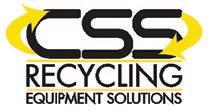
The CSS Recycling Equipment solutions approach is comprehensive, starting with on site reviews of existing processes, machinery and capability, analysis of business objectives, challenges, and end materials. By working closely with clients,
the complete end-to-end solution.
Products & Services:
• Power Generators
• Air Compressors
• Dryers
Blowers
Spare Parts
• 24/7 Servicing
Engineering services
Rental / Hire
Products & Services:
KOHLER/SDMO
AIRMAN
INGERSOLL-RAND
TEKSAN
SAUER
BEKO
DEEPSEA
Core Capabilities:
CAPS Diesel Generators; together with KOHLER are tailored designed to meet onsite limited real estate; featuring superior transient performance; maximum reliability; low specific fuel consumption
& market leader with high power density for various segments.
Our portfolio covers high speed diesel generators up to 4600kVA (50 Hz); available with different voltage configurations; packaged either in a purpose-built acoustic enclosure or plant room install.
Standby Diesel Generators guarantee energy security for waste to energy facilities; to prevent critical process sudden shutdowns; which are termed detrimental to both equipment & revenue generation.
The CAPS Diesel Generators are engineered; tailored built to deliver superior performance but also meet stringent requirements related to real estate; load acceptance & noise

performance; together with in-house engineering & local partners.
Contact Details:
CAPS Australia 185 Planet Street
Welshpool WA 6106
Phone: 1800 800 878
Email: info@caps.com.au Website: www.caps.com.au
Key Contacts:
Nestor DeNiese
National Sales Manager – Power Generation Number: +61 8 6250 9871
Email: nestor.deniese@caps.com.au
our exclusive global suppliers and our vast network of operators and manufacturers, we deliver results.
CSS Recycling Equipment Solutions are sourced from around the world, are proven and reliable and importantly have been tried and tested in our region and with our unique standards and environment.
Products/Services:
Specialising in all aspects of reduction, separation and recycling technology:
• Complete consultative and collaborative plant design and delivery
Fuel Preparation Technology
Shredding
Screening
Air Separation (Windshifters, Air Knife, Density Separation)
Baling and Shear Baling
Plastics Washing and Preparation
Waste to Energy technology
Brands:
Metal
Dynamic Screens
Separation
Recyclingtechnik
Enviro
Capabilities:
consult, design, deliver and
of high quality equipment
plant solutions for C&D, C&I,
Organics, Wood Waste, FOGO,
Scrap Metal industries.
innovative and strategic
within and outside of our
of equipment solutions, always
client’s outcome
our global relationships and local knowledge to deliver positive business outcomes for our clients and
improving environmental
for Australia and New Zealand.
Specialists in:
Hard to process waste and recycling
Mobile and static processing solutions
Manufacture of custom components
High quality and on budget projects
Details:
CSS Recycling Solutions
Box 359, Dee Why NSW 2099
1800 644 978
info@cssequipment.com.au
focus.
www.cssequipment.com.au
Daily news updates at www.insidewaste.com.au Capabilities Statements // 56 INSIDEWASTE OCTOBER/NOVEMBER 2022
•
•
•
•
•
•
•
•
•
•
•
•
•
•
•
•
•
• FOGO •
• 3Tek Scrap
technologies (USA) • Ecostar
(Italy) • Ecohog Air
Technologies (Northern Ireland) • Hammel
(Germany) • Jono
(China) • Vezzani (Italy) Core
Collaborate,
the supply
and
Biomass,
MSW,
Source
solutions both
stable
with the
as our
Leverage
continually
solutions
•
•
•
•
Contact
PO
Phone:
Email:
Web:
Garwood International MRA Consulting Group
Core Capabilities:
Company Overview:
Garwood International a 100% Australian owned & family operated business. All equipment purchased from Garwood International is supported via our comprehensive aftermarket services. With our head office located in Sydney, we also have Service and Sales in Melbourne and Brisbane. We can partner with any of your existing service providers Australia wide.
Products and Services:

GARWOOD Garbage COMPACTORS

Rear, Side, Dualpact & Front Loaders.
• Footpath Sweepers
• Tow Behind Trailer Brooms
• Bin Weighing Systems
• Enviroweigh, LoadWeigh and VOPS™ 2 bin weighing equipment

Garwood International has grown to become a leading designer, manufacturer and distributor of specialised waste and recycling collection and compaction equipment. The company’s reputation for high quality, innovative products, together with its enviable record of outstanding customer service and after-sales support, has delivered strong and consistent growth over the past three decades both in Australia and Internationally.
Clients:
Our Clients range from City Councils, National and International Airports, Department of Defence to Local Government Sectors and Private Contractors.
Contact Details:
Garwood International Ph: 02 9756 3756

3 Hexham Place, Wetherill Park, NSW, 2164, Australia Website: www.garwoodinternational.com.au

Contact Details:
MRA Head Office
Suite 408 Henry Lawson Building, 19 Roseby Street
Drummoyne NSW 2047 02 8541 6169 info@mraconsulting.com.au www.mraconsulting.com.au
Company Overview:
MRA is one of Australia’s leading environmental consultancy firms, specialising in all aspects of waste and recycling. We are experts in waste, resource recovery and the circular economy, technology, climate change, carbon and sustainable development. Our vision of the future is one that is both environmentally sustainable and economically rational. With over 35 professionals in environmental science, engineering, law and finance, working across Australia we have the experience and technical knowledge to provide
detailed and practical advice to support your waste and resource recovery needs.



Core Capabilities:
Customised advice to all levels of government and corporations. Our objective is to collaborate with you from the initial briefing process through to project development and implementation of solutions specifically tailored to your needs in the fields of:
Strategy & Commercial – Innovative and tailored strategies
Circular Economy – Help move your organisation or material towards a circular economy model

Planning & Approvals – Development and planning approvals and licensing services
Contracts & Tenders – Preparation, review and assessment


Organics – Business case, collection processing and market development solutions
Grants – Scoping, application, writing, review and administration Waste Education – Effective and engaging programs
Auditing – Research and compliance audits Carbon – Climate adaptation, ERF reporting and accounting

Daily news updates at www.insidewaste.com.au // Capabilities Statements OCTOBER/NOVEMBER 2022 INSIDEWASTE 57
NOW AVAILABLE TO VIEW ON or visit www.insidewaste.com.au/subscribe SUBSCRIBE NOW at subscriptions@primecreative.com.au Inside Waste News & Networking twitter.com/InsideWaste PP: 100024538 ISSN 1837-5618 ON DECEMBER 8, 2020, the Recycling and Waste Reduction Bill was passed in Senate without amendment. Despite a senate inquiry into the Bill and attempts by the Greens and Labor, the amendments to the that would address plastic pollution and support the recycling sector did not pass. This has resulted in concern within the WARR industry that the government’s commitment to the massive problem of plastic pollution remains fragile despite its assurances and organisation of the first National Plastic Summit in Canberra, prior to COVID-19. Much frustration around failure of the amendment been focused the continual reliance on the packaging industry to self-regulate. Despite this industry’s best efforts to address this issue Inside Waste covered the Australian Institute of Packaging’s Virtual Conference the APCO initiatives in depth during 2020), the needle on the decrease of plastic waste fails to move by any significant degree. WMRR CEO, Gayle Sloan is one WARR leader who has consistently pointed to the ineffectiveness of the efforts by the packaging industry to manage the issue. told Inside Waste that the strong support for the amendment to the Bill an indication of desire within the Australian community to deal with the packaging problem. “While it is disappointing that the amendment fell through on single vote, it is heartening to see growing consensus that need to more to tackle the packaging that we consume and dispose of. “What we have seen to-date is strong community support for action. Real action to be taken to tackle packaging and create jobs in Australia. “The message is clear,” Sloan said. “The business-as-usual approach is not acceptable anymore. Australians deserve more than continuation of voluntary, packaging industry-led scheme that has made little, any, progress.” Senate didn’t understand Sloan pointed to the “real opportunities to close the loop domestically”. She said that this could be achieved by building Plastic problem is not business as usual Think your waste is unshreddable? Think again! Meet the XR... Low wear. Low maintenance. Low running costs. Maximum performance. Request a free waste audit: info@focusenviro.com.au www.insidewaste.com.au industry stakeholders to work together to genuinely close the on packaging in Australia by using Australian recycled products. ISSUE APR/MAY THE leading report on wastemanagement and recycling data inAustralia shows that Australians arereducing their waste and increasingtheirBluerecycling.Environment’s National WasteReport 2020 commissioned by theFederal Government’s Department ofAgriculture, Waste and the Environment,was released in December last year.The report is the authoritativecompilation of national data onwaste and resource recovery and themechanism for measuring progressagainst national waste policy targets.Issued every two years, the 2020edition focuses on the status wasteand recycling in 2018-19, with dataanalysed on per capita basis as wellas on state and territory levels.Findings cover waste generation,source streams, material categoriesand fates, together with trendsmeasured back to 2006.While the data precedes thesignificant investments in recyclingand resource recovery the FederalGovernment has made since the 2019election, its revised 2016-17 data set(first published in the National Waste Report 2018 will be used as baselinedata to measure Australia’s progressagainst the National Waste PolicyAction Plan’s 2030 targets.“The release of the leadingreport on waste management andrecycling data in Australia, showsthat Australians are reducing theirwaste and increasing their recycling,”Assistant Waste Reduction andEnvironmental Management MinisterTrevor Evans said.“This is a great outcome. We can allbe proud that our efforts are payingoff, to take care of our own waste andto do the right thing by sorting ourrecycling and diverting more wasteaway from landfill.”Evans highlighted that Australiacreated 3.3 per cent less wastein 2018-19 compared to 2006-07, the foundation year of thenational data“In effect, we each produced wastethat weighed the same as 40 fullkegs of beer and we each sent theequivalent weight of 24 full kegsto be recycled,” he said.“However, our growing populationmeans the overall amount of waste Australia is generating continuesto increase, up five million tonnes“We2016-17. need to continue work hard toreduce the amount waste we create,and to recycle more of it, if we are toachieve Australia’s ambitious nationaltarget of recovering 80 per cent of ourwaste by 2030.”Evans explained that this was thedriver behind “unprecedented” actionby the government to turbochargethe waste and recycling industries,so that waste treated asresource which can be recycled andremanufactured into valuablenewHeproducts. said that this protects theenvironment, creates jobs and keepswaste out landfill.“Our billion-dollar investment newrecycling infrastructure is changingthe face of the waste and recyclingindustries Australia,” Evans said.“We are also the first country inthe world to ban the export of itsunprocessed waste plastic, paper, glassand tyres overseas thanks to our newnational recycling legislation.”(Continued on page 22) DURING the recent Australian CircularEconomy Conference (ACEC), one of the webinars delved into Foodthe Circular Economy in AustraliaChina. One of the speakers was AlanaMann, associated professor for theFaculty of Arts and Social Sciences(FASS) at the University of Sydney.Mann noted that one outcomethe COVID-19 pandemic was thatlot of countries, like China andAustralia, were taking a fresh lookat how their food systems operated,both in terms of supply chain andfood wastage. Mann said it waspleasing to see how both countries,and the world at large, had risento the challenge of feeding theworld’s population during a tryingtime, but it had also exposed somethe intrinsic weaknesses withinsome of the systems.“Circular economies and othermodels of food provisioningincluding community supportedagriculture and cooperatives, areall coming to the fore,” she said.“China leader in these areasalong with recycling waste and thedevelopment of smart technologiesfor ecommerce. How connectwith consumers and users ensuresthe supply chains to address foodinsecurity and also manage issuesaround waste are addressed, whichis an important piece of the circulareconomy model.”Continued on page 24) Waste needs to be treated as a resource – report INSIDE 30 Landfill 37 What circular economy?42 Truck feature WEBINAR: Profitable one-step alternative fuel production 13thMay202110:00|RegisterforyourFREEplacetoday:focusenviro.com.au/event www.insidewaste.com.au Just-in-time model workingnot Glass achieved recycling rate of 59 per cent.
Ecostar’s Hextra a super screen
THE ECOSTAR Hextra Dynamic Disc Screen is an efficient machine designed for those in need of the operational flexibility provided by a mobile solution combined with the high performance of DDS (Dynamic Disc Screening) technology. Using the screen in a line configuration or a loop, resource recovery operations are feeding the screen directly with their shredder for impressive results.
Productivity up to 200 t/h
Due to DDS technology, Hextra is able to screen materials faster (1 m/ sec), using less space and reaching a productivity level of up to 200 t/h. Revenue from the sale of recycled materials can be increased due to the characteristics of this system. The quality of its components and assembly procedures is aid to guarantee maximum reliability and a reduction in maintenance costs.
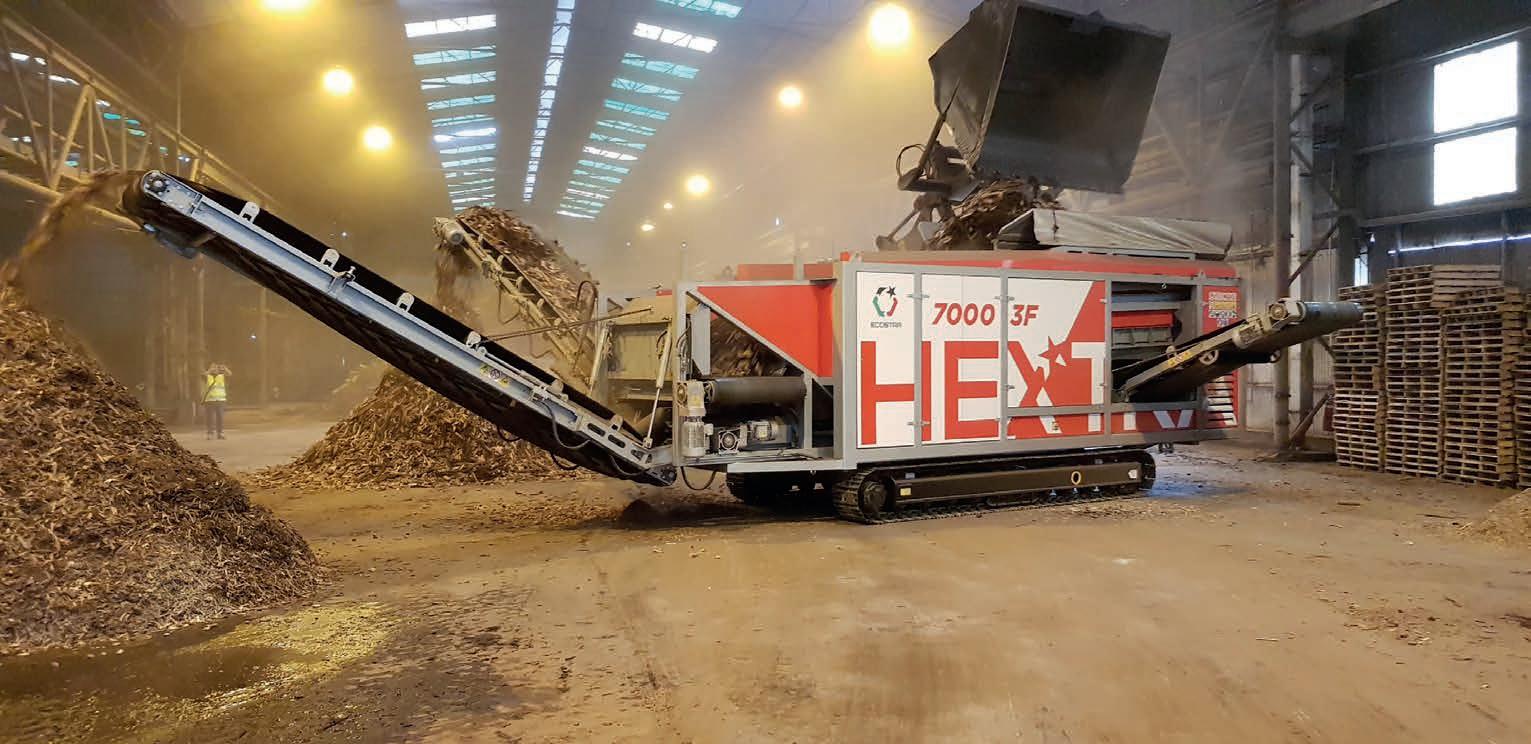
Maximum operational flexibility
Due to the SMART HOPPER – the special loading hopper developed by Ecostar – the Hextra screening system offers flexibility. Its sliding hopper is equipped with a dosing screw, which also enables it to operate in a loop with all shredders.
Its hydraulic system, operated from the control console, enables
the screening options to be changed from two fractions to three fractions in relation to specific processing needs. The hopper slides to reduce its dimensions to a minimum during transport. It is possible to configure Hextra with the right technology for a customer’s needs. Its DDS, HDDS, and SWAT technologies have been developed to work better with difficult materials and to minimise downtime and maintenance costs.
MSW, multi-material, biomass, organic, tires,plastic, metals, wood, inerts, compost, paper and cardboard, C&D, C&I, SRF/ RDF, car fluff, glass and more. CSS Recycling Equipment Solutions is the specialised and exclusive dealers of the range of Ecostar screens for Australia and New Zealand.
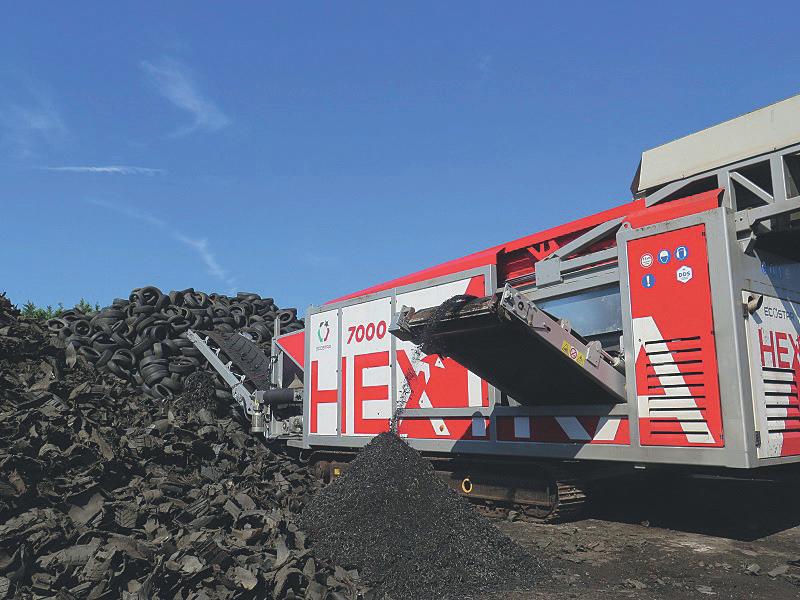
speedy and flexible screens.
“Processing up to 200t/h, and available to screen to three fractions, these machines are an excellent addition to most set ups.
“Having the unit on tracks adds transport ease and location flexibility, and low maintenance and downtime, means more profitability
in resource recovery when the Hextra
Daily news updates at www.insidewaste.com.au
Equipment News //
Hextra machines work well with traditional hard-to-work-with materials.
58 INSIDEWASTE OCTOBER/NOVEMBER 2022
Hextra machines can screen up to 200 tonnes per hour.
Eriez touts effectiveness of UHF Eddy Current Separators
RESULTS from the field show that Eriez Ultra High Frequency (UHF) Eddy Current Separators (ECS) recover nonferrous micro-fine material missed by conventional ECS units.
These UHF ECS’s consistently recover micro-fine aluminium, copper and other non-ferrous fines from automobile shredder residue (ASR), PET plastic fines and bottom ash processing. Results from both laboratory testing and in field commercial installations have demonstrated this separator’s ability to reliably recover fine nonferrous metals, including bare copper wire, as small as 2-3 millimetres in size with relative ease.
The UHF ECS’s design is the key to its performance. The rotor is designed to produce high field strengths on the belt surface, combined with ultra-high frequency changes of the magnetic poles give this ECS superior performance over the competition.
Eriez UHF ECS’s offer an economic
solution to improve micro-fine nonferrous recovery and product purity without the requirement for expensive sensor-based or optical sorting equipment.
Each unit ships with an Eriez Brute Force Vibratory Feeder to ensure even presentation of material across

the width of the machine to help maximise recovery.
Eriez patented the first ECS more than five decades ago.
The company designed the UHF ECS with the highest standards to ensure trouble-free operation and long service life.
Produce cleaner concentrates using cost-effective methods to maximise yield and return on investment, while remaining competitive in a tough economic climate.
Today, Eriez offers a line of ECDs for a variety of industries and applications. iw
Genox’s range of shredders suitable for most waste products
WASTE reduction and the associated recycling has become a crucial part of the Australian landscape over the past few years and plays a key role in minimising landfill and driving growth in the number of new products manufactured with recycled material.
With the dual benefits of reducing landfill and lowering waste disposal costs, many businesses are looking for effective, reliable and cost-effective solutions for waste reduction.
Applied Machinery, one of Australia’s largest suppliers of recycling machinery, is the sole Australian distributor for Genox Recycling Technology and its extensive range of shredders and granulators that are designed for reprocessing waste material for direct input into closed-loop manufacturing, secondary processing, or simple volumetric savings in recycling skip bins.

Genox is a combination of the words “Generating Oxygen”, which serves as the cornerstone of their efforts towards creating a better environment through
new and innovative technology.
Its range of shredders and granulators are suitable for all kinds of waste products.
The Vision series comprises highquality, cost-effective shredders, while the Gran-Calibur series granulators offer defined size reduction of various materials in a single pass.
The range of products that can be size reduced and then recycled includes soft and rigid plastics, plastic film, general plastics, wood, metals, textiles, tyres, e-waste and more.
More than 250 companies in Australia now have Genox equipment installed, making Genox one of Australia’s leading manufacturers of recycling machinery.
“Whilst many customers are aware of our larger scale recycling plants, our range of shredders and granulators cater to just about every type of business, all budgets and practically all recycling applications,” said Applied’s Sales & Marketing Manager, Daniel Fisher.
“Genox machines are affordable and we usually have machines available
in stock or on quick lead times, so customers can start reaping the benefits quickly,” Fisher added.
The increasing need for material reduction machines, and the crucial role they play in the recycling process is evidenced by the diverse applications in which Applied Machinery customers have put their Genox machines to use.
“We have customers who use a shredder to cut down bulky items such as pipes and large off-cuts to allow them to be more easily packed for transport to recycling facilities,” said Fisher.
“Many companies are also looking at Genox as a way of generating extra income from the waste reduction process.”
“One of our customers purchased a Genox granulator to granulate fish waste from his restaurant so he could bag it and sell it as burley. This keeps this organic, odorous waste out of traditional landfill, whilst simultaneously generating
A Genox machine can process a myriad of products.
extra income.”
Applied also hold an inventory of parts and accessories for quick routine maintenance, service and machine upgrades and add-ons so customers are never kept waiting.
“Unlike many other machinery suppliers we don’t just sell machinery – we have specialist service engineers who install the machinery and, most crucially, train our customers and their staff to use it efficiently and safely. We then provide regular servicing and follow up,” Fisher concluded. iw
Daily news updates at www.insidewaste.com.au // Equipment News
Eriez UHF Eddy Current Separators can recover non-ferrous fines.
OCTOBER/NOVEMBER 2022 INSIDEWASTE 59
Unique compactor from Garwood
GARWOOD’S DualPact rear-loading compactor is designed for collection routes when multiple waste streams are being collected with the one collection vehicle.
The key feature of the body’s unique design is that two different streams can be collected with zero cross contamination.
While this typically means a landfill and fibre stream, the compactor can accept organics, co-mingled recyclables, or any other stream that is requiring source separation.
The compactor body is available in 50/50, 60/40 or 70/30 split body configurations.
The 60/40 and 70/30 split body configurations can accommodate the
full range of bins including the 660and 1100-litre MGBs.
Pressure switch settings can be set independently for each chamber allowing for different compaction ratios.
This design makes the DualPact an efficient way to collect multiple waste streams using just a single truck.
The DualPact can also be utilised as a backup collection vehicle for missed bins where side loaders are in use.

The dual pack is available in various body sizes from six cubic metres up to 26 cubic metres.
The body can be fit into a range of suitable four-by-two and six-by-four cab chassis applications.iw
Reuse and recycling key to Recycal ethos
FOR the Recycle Group’s sister companies, Ecocycle, EcoBat, Castings Tasmania and ACL Metal Powders, the three ‘Rs’ – recycle, recover and reuse – have become a catchphrase as they work towards helping decarbonise the metal recycling sector.
Doug Rowe, Director of Ecocycle, says he’s happy with progress so far despite the difficulties of dealing with the COVID-19 pandemic.
Recycal, a processor of scrap metal arisings, is a company focused on
service with a clear direction of where it needs to be, according to Rowe.
The bright green recycling trucks are a familiar sight, with Recycal facilities in every state across Australia. A range of hook-on bins and smaller green bins are available for clients, as well as cranes, trucks, tailgate trucks, tautliners, and semi-trailers.
The company has Environment Protection Authority (EPA) and Dangerous Goods (DG) licences, and all drivers are DG licensed.
Doug says Recycal value-adds selected materials to processed scrap metal to ensure a quality feed for its sister companies and preferred end users overseas.
As well as recycling and recovering silver from film, Ecocycle also recycles mercury, x-rays, waste dental amalgam, all lighting waste, mercury button cell batteries, as well as mercury waste from the oil and gas industries that are recovered and, where possible, recycled.
“Ecocycle has EcoBat and Eco EWaste operating alongside it, perfect fits for the group and our businesses,” says Doug.
“EcoBat is progressing well with its collection, sorting and processing of batteries around the country, as well as working with electric vehicle and storage battery cells.
“We are using some of the recovered lithium cells for a second life in battery storage, and we are currently building 12, 40-foot containers to supply green power for our operations from solar panels installed on our facilities.”
Eco EWaste is moving into the recycling arena and will ensure the company has the solid foundation needed to succeed in e-waste recycling and recovery.
Castings Tasmania is a foundry that melts down the clean steel collected by the Recycal Group and
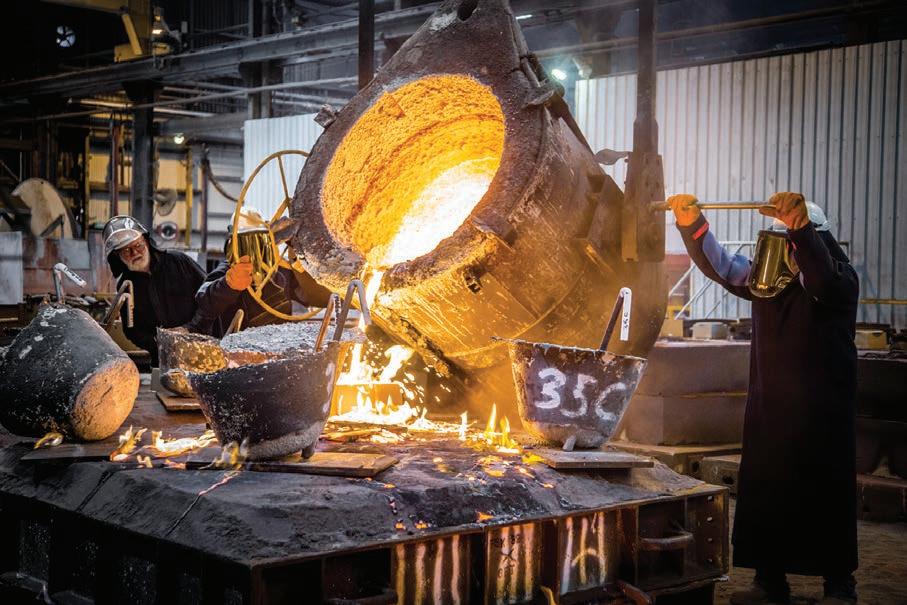
then processes it to size to make castings for the Australian market. Rowe says that using recycled metal, as well as green solar storage power, is an environmentally friendly way to keep Australian metal onshore for domestic use.
ACL Metal Powders is a bespoke non-ferrous foundry that makes copper alloy powders for the world markets.
Doug says that any pure copper collected is melted, while the copper granules from cables is granulate and separated.
“We alloy this with lead and tin to make a pure blown fine powder,” he says. “Copper cables that Recycal collect and process from both our internal companies and external clients, are a prime feed for the ACL Metal Powders plant.”
Doug says that while a lot of copper materials are exported to Third World countries, Recycal is using about 60 tonnes per month of copper. Quality, pure recycled copper granules are a critical feed stock for the company.
“By recycling and recovering metals, with a focus on selecting the materiel that fits the group, we can make a real impact on looking after our environment and promoting that circular economy,” Doug says.
“We’re protecting our environment and making great use of what we have locally to make a difference.” iw
Daily news updates at www.insidewaste.com.au
Equipment News // 60 INSIDEWASTE OCTOBER/NOVEMBER 2022
Cuttings Tasmania is a foundry that melts down clean steel.
The DualPact comes in three different configurations.
Big goals and ambitions drive sustainability specialist
AN interest in the environment started young for Claire Mahendradatta. Aldi’s specialist – corporate responsibility, dedicated time both during and after school as part of the Streamwatch Group, which monitors the health of streams and waterways within the Sydney catchment area.

“We’d go to Coogee Beach and observe what was coming out of the drain water on the side of the beach,” she said. “We’d do things like nitrate tests and other chemical tests as well. I also have a pet turtle, too, so I had some form of interest as to what within the environment affects my turtle and other marine animals.”
Once she left school, Mahendradatta studied a Bachelor of Science degree from the University of Technology Sydney. It was while studying that she got an inkling of what she would like to do. One topic for the degree was marine biology, and it was there that her interest in the environment was piqued.
“While there was not a strong focus on plastic, there were a couple of topics on marine plastic and how it affects the ecosystem,” she said. “And that links to my interest in terms of waste and water sciences as well.”
Once her degree was completed, Mahendradatta did what a lot of young people do and headed overseas. While travelling she ran into one of her old uni colleagues who told her about a graduate position going at Sydneybased waste specialist consulting firm MRA Consulting. At the time Mahendradatta felt she wasn’t that up to date on what was happening in the waste industry, but still saw it as a “really cool opportunity”.
“Uni doesn’t really teach you much about waste, but it was still a great opportunity,” she said. “The mentorship and leadership of my managers at MRA really inspired me to stick to the waste industry and made me fall in love with the industry as well, because they’re just very passionate people.”
Mahendradatta started off as a graduate consultant, which she did for a couple of years. She was working on the New South Wales EPA Bin Trim programme, which was designed to help small-to-medium enterprises divert waste from landfill.
“After that, I moved into becoming a normal consultant,” said Mahendradatta. “I worked on a lot of waste audits and education
campaigns. Then I became a senior consultant, and I was the team lead for waste auditing.”
Mahendradatta project managed a couple of rounds of Bin Trim for MRA and other clients, too. She helped write grant applications and run projects on those clients’ behalf. She said she loved project managing and before she left MRA to take up her current role, the total Bin Trim project was valued at just under $2 million.
Mahendradatta was at MRA Consulting for just under six years where she got a great understanding of the industry. However, she wanted to expand her horizons and found a position at Aldi, the third biggest supermarket chain in Australia, as a specialist for corporate responsibility.
“Essentially the role involves working on projects across stores and all of their assets to achieve our zero waste commitments,” she said. “We have two zero waste commitments that are zero food waste to landfill by 2023 and zero waste to landfill by 2025.
Ideally, we would like to minimise as much of our waste contribution to the environment as possible.”
Mahendradatta says the work is interesting and diverse, especially as the role involves her working with internal stakeholders and understanding their challenges and how they can work together.
“I also like seeing the implementation side of it,” she said.
“You can see some of the suggestions that you provide come to fruition at some point in time – maybe not all the time, but the ones that do get approved and across the line, you can see them being trialled in stores.
It’s nice to see the evaluation and monitoring being implemented and the benefits it brings.”
Looking further down the track with regards to waste in general, Mahendradatta believes there needs to be more concentration of some of the smaller items that create issues, from plastics through to packaging.
Currently, she feels there is a big effort being made on construction and demolition waste but there needs to be more infrastructure in place to take care of the lesser waste streams.
“There’s not much in terms of infrastructure that’s being built right now,” she said. “I’m being optimistic in that, hopefully over the next 10 to 15
“I like everything about it. I like the team because our Corporate Responsibility team is very collaborative and they’re very supportive,” she said. “Everybody in the team is a specialist of some sort. This means if you have a question, you can rely on them to give you the right answer.”
And what about her own ambitions within the waste landscape?
Mahendradatta is currently studying
becoming a sustainability leader in the industry. It doesn’t have to be in FMCG (fast moving consumer goods), it can be in any industry. I like the thought of bringing new innovative ideas and then being able to help to make these issues economically viable for businesses in terms of making the work environment a sustainable space. That’s where I want to go. I don’t think I’ll be a CSO anytime soon. But that’s the goal I’m working towards.” iw
Daily news updates at www.insidewaste.com.au // Young Professional
Mahendradatta is helping Aldi reach its zero food waste to landfill targets.
OCTOBER/NOVEMBER 2022 INSIDEWASTE 61
Bin Liners Landfill Biodegradable– 75L
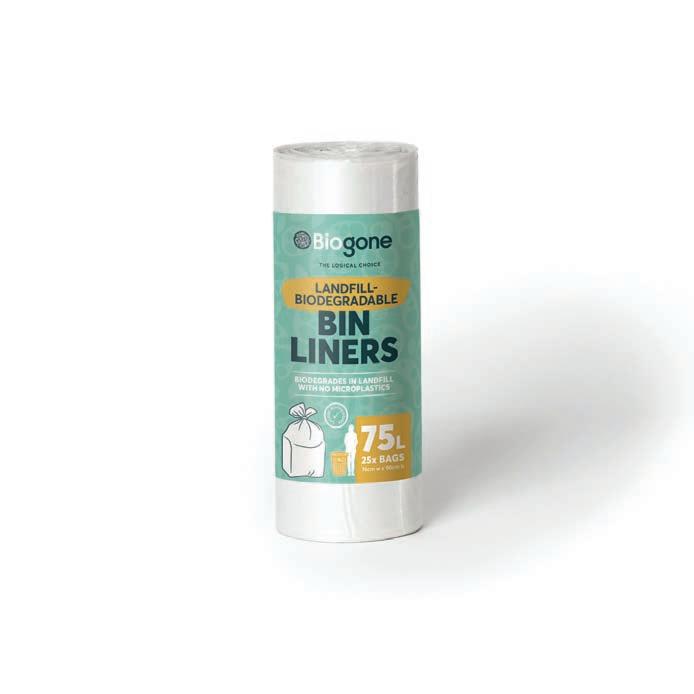
Unit Dimensions: 90cm H x 76cm W

Weight: 6.2kg carton of 250 bags
Finished product size: Carton 39 x 16 x 21cm
Options/Extras: Roll of 25 Bags or Carton of 10 Rolls. Home compostable bin liners also available
Price: Roll of 25 Bags $8.25, Carton of 10 Rolls $78.43 inc. GST
More: Biogone landfill-biodegradable 75L bin liners can be recycled with other soft plastics or disposed of in the general rubbish bin. Once disposed to landfill, biodegradation is accelerated approximately 90%+ faster than conventional plastic bin liners, producing an organic matter (a natural fertiliser) and no microplastics. Bags printed with ‘Landfill Biodegradable’ and are made with 50% recycled content.
Phone Number: (03) 9676 9518 Webpage: biogone.com.au
Email: info@biogone.com.au
Council Parks and Gardens Dog Waste Bags
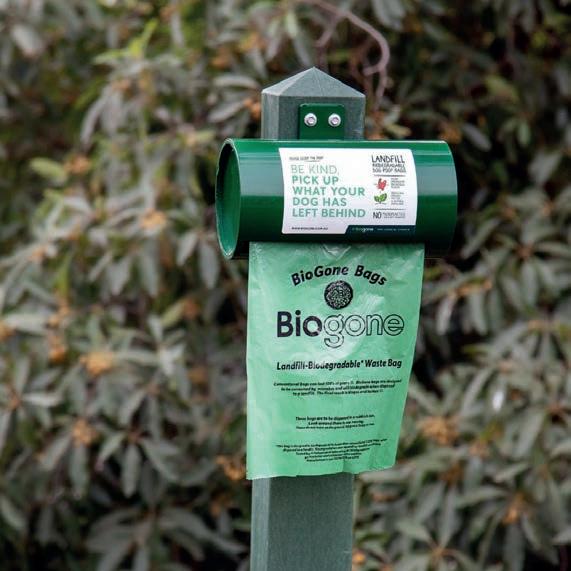
Biodegradable
Unit Dimensions: Standard Roll of 500 bags, 200mm wide x 300mm tall plus handles. Top opening circumference of 127 mm. Wide Mouth Roll of 250 bags, 200mm wide plus gussets x 300mm tall plus handles. Top opening circumference of 190mm.
Weight: 1.1kg
No. of units in range: Available in 250 & 500 bag rolls, carton includes 10 rolls
Options/Extras: Available in landfill biodegradable or home compostable.
Price: Roll of 250 bags $19.80, roll of 500 bags $31.90 inc. GST (5% discount applies when you order 10 or more)
More: Landfill-biodegradable dog waste bags for parks and gardens are made from 50% recycled plastic. Once disposed to landfill, biodegradation is accelerated approximately 90%+ faster than conventional plastic dog waste bags, producing an organic matter (a natural fertiliser) and no microplastics. Fits standard park dispensers.
Phone Number:
CKTR121XL
Unit Dimensions:
Capacity
Finished product size
Options/Extras:
Off-line filter system, Oil cooler, Oil heater, Access platform over ejector ram, bale wrappers, Bale push ram to load onto wrapper, Bale weight bridge.
Price: POA
More: The CKTR121XL is a twin-ram baler designed to produce high density bales of multiple materials. It produces a large mill size bale which reduces strapping, wrapping, handling and transport costs.
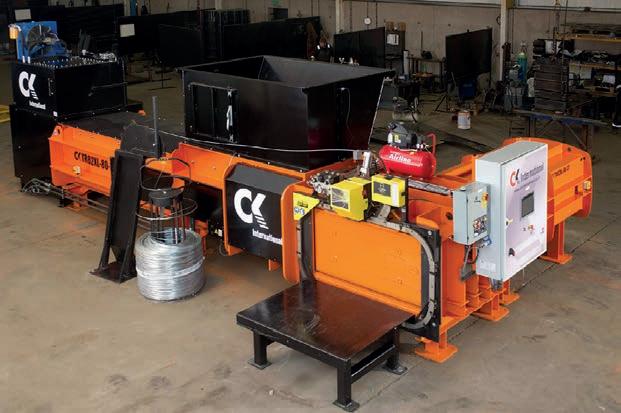
Name: Robbie McKernan
Phone Number: +61 (02) 4365 4247
Webpage: www.focusenviro.com.au
Email: info@focusenviro.com.au
Capacity (in weight): 80 TPH
No. of units in range: 1
Finished product size: Customisable
Options/Extras: Opening safety fence, weighing, labelling, cleaning conveyors, remote control, film watch
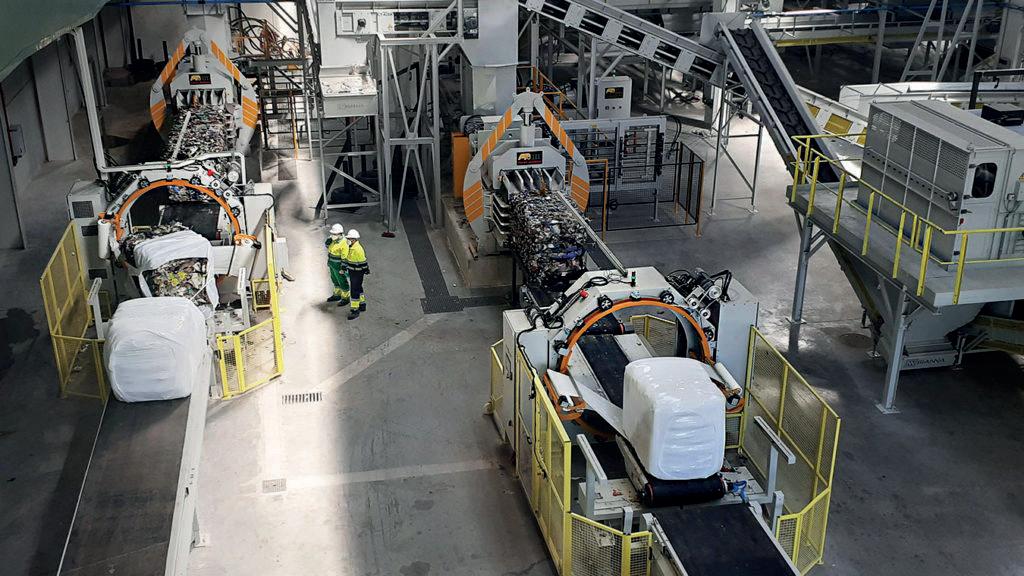
Price: POA
More: The CW 2200 is Cross Wrap’s flagship product and represents the long experience the company has from the waste industry. This fully automatic machine is compatible with any baler and it suits all bale sizes and waste materials, such as RDF, SRF, MSW and recyclables.
Name: Robbie McKernan
Phone Number: +61 (02) 4365 4247
Webpage: www.focusenviro.com.au
Email: info@focusenviro.com.au

Product Profiles - Balers and Compactors // Daily news updates at www.insidewaste.com.au
Webpage: Email:
12m X 4.7m X 2.5m (LWH)
(in weight): Up to 260m³/hr No. of units in range: 4
(Bale Dimensions): 1.5m X 1.5m X 1.5m (LWH)
Automatic plastic strapper, Dual tying strapper, Pre-press system,
BIOGONE
FOCUS ENVIRO
–
FOCUS ENVIRO
BIOGONE 62 INSIDEWASTE OCTOBER/NOVEMBER 2022


UNLOCK A WORLD OF INSIGHT AND OPPORTUNITY BY SUBSCRIBING TO INSIDE WASTE PREMIUM Corporate subscription $445 5 members Inside Waste News & Networking twitter.com/InsideWaste or visit www.insidewaste.com.au/subscribe SUBSCRIBE NOW at subscriptions@primecreative.com.au Individual subscription $295
50SD
Unit Dimensions: (H x W x D) 3160 x 1885 x 1105 (mm)
Weight: 1900 kg
Drive Type: Hydraulic Motor: 3Hp

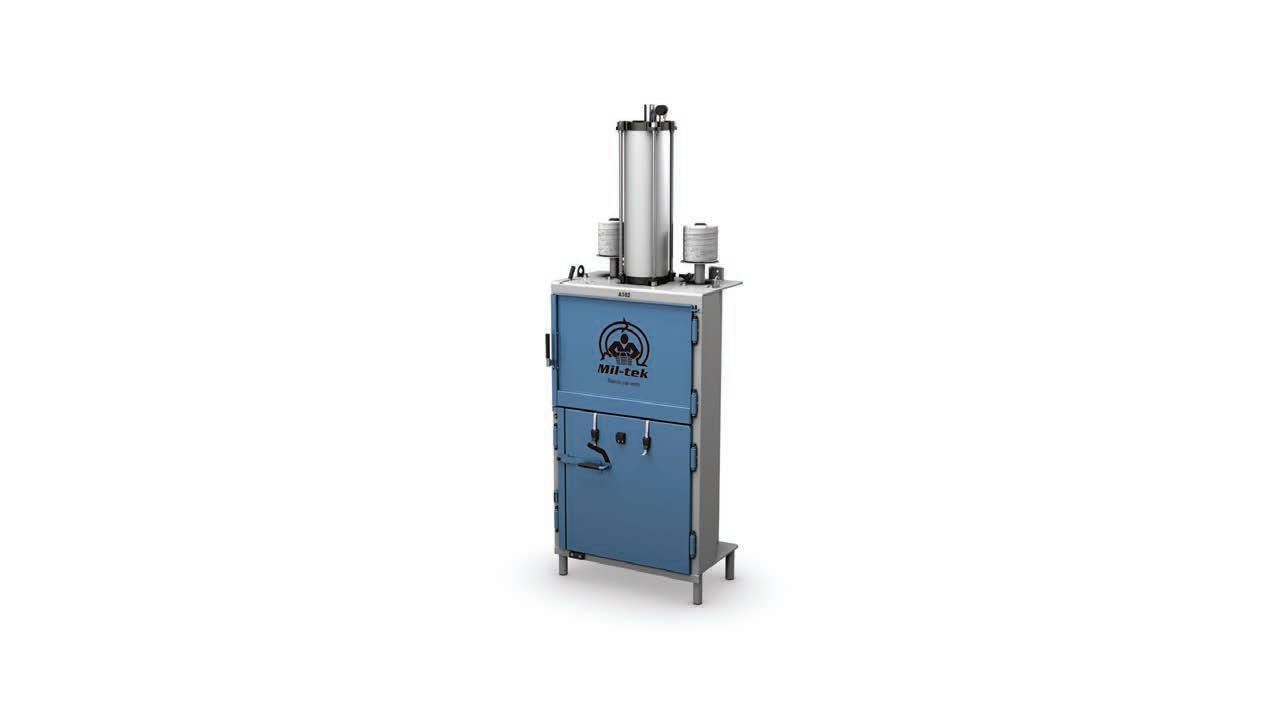
Rotor diameter/lengths/speed: Speed (slow/high): Pressing cycle (sec.) 55
Suitable material: Cardboard and Plastic No. of units in range: 1
Throughput:
Finished product size: (H x W x D) 3160 x 1885 x 1105 (mm)
Options/Extras: Ask Technical Dept.
Name: Mil-tek Phone Number: 1800645835
www.miltek.com.
jason.campbell@ miltek.com.au
WASTE SOLUTIONS
MIL-TEK
Model A509
Unit Dimensions: (H x W x D) 2530 x 1450 x 1037 (mm)
Weight: 920 kg
Drive Type: Pneumatic (air-powered)
Motor: N/A
Rotor diameter/lengths/speed: Speed (slow/high): Pressing cycle (sec.) 15-25
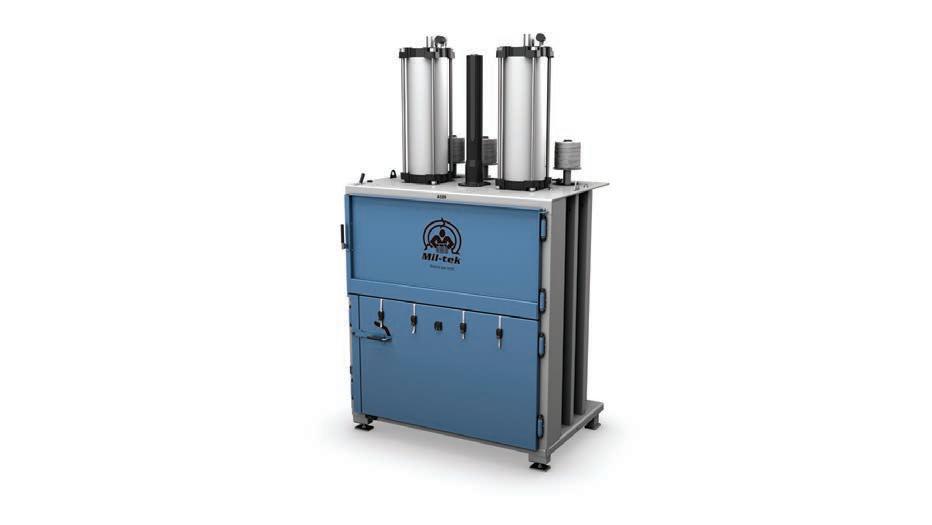
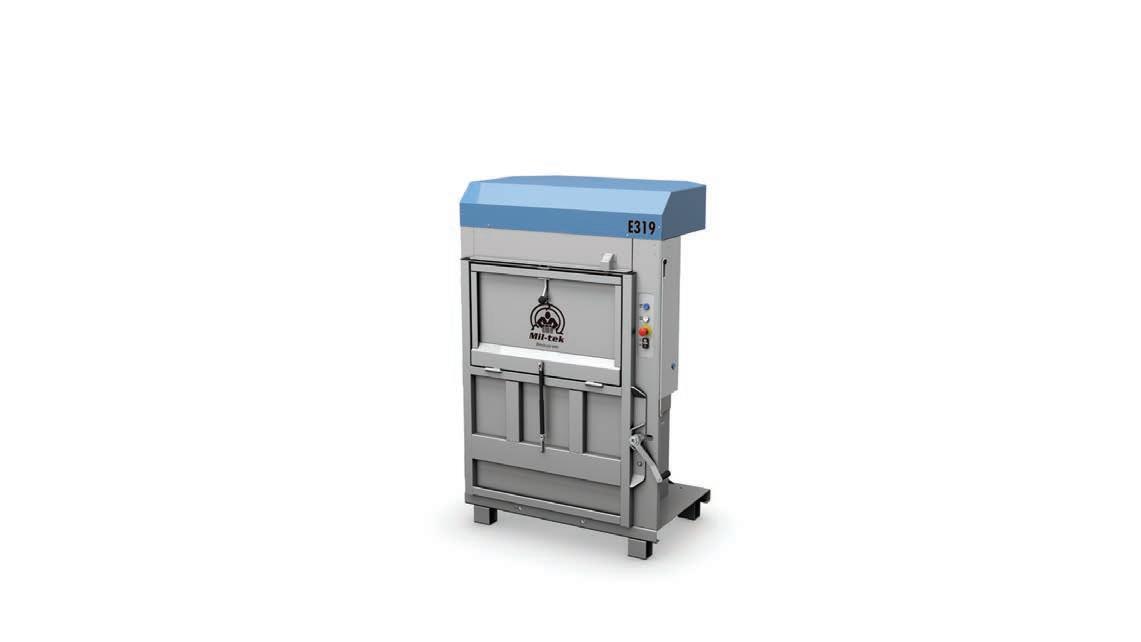
Suitable material: Cardboard and Plastic No. of units in range: 5
Throughput:
Finished product size: (H x W x D) 2530 x 1450 x 1037 (mm)
Options/Extras: Ask Technical Dept.
Name: Mil-tek Phone Number: 1800645835
Webpage: www.miltek.com.au
Email: jason.campbell@miltek.com.au
MIL-TEK WASTE SOLUTIONS
Model A102
Unit Dimensions: (H x W x D) 2295 x 832 x 541 (mm)
Weight: 255 kg
Drive Type: Pneumatic (air-powered)
Motor: N/A
Rotor diameter/lengths/speed: Speed (slow/high): Pressing cycle (sec.) 6-10
Suitable material: Cardboard and Plastic
No. of units in range: 5
Throughput:
Finished product size: (H x W x D) 2295 x 832 x 541 (mm)
Options/Extras:
Name: Mil-tek
Phone Number: 1800645835
Webpage: www.miltek.com.au
Email: jason.campbell@miltek.com.au
Model E319
Unit Dimensions: (H x W x D) 1855 x 1165 x 770 (mm)
Weight: 500 kg
Drive Type: Electrical
Motor: 3 x 400V / 16 Amp
Rotor diameter/lengths/speed: Speed (slow/high): Pressing cycle (sec.) 63
Suitable material: Cardboard and Plastic No. of units in range: 4
Throughput:
Finished product size: (H x W x D) 1855 x 1165 x 770 (mm)
Options/Extras:
Name: Mil-tek Phone Number: 1800645835
Webpage: www.miltek.com.au
jason.campbell@miltek. com.au
MIL-TEK WASTE SOLUTIONS
Email:
Webpage:
au Email:
Model
MIL-TEK WASTE SOLUTIONS Product Profiles - Balers and Compactors // 64 INSIDEWASTE OCTOBER/NOVEMBER 2022
Model HZT600

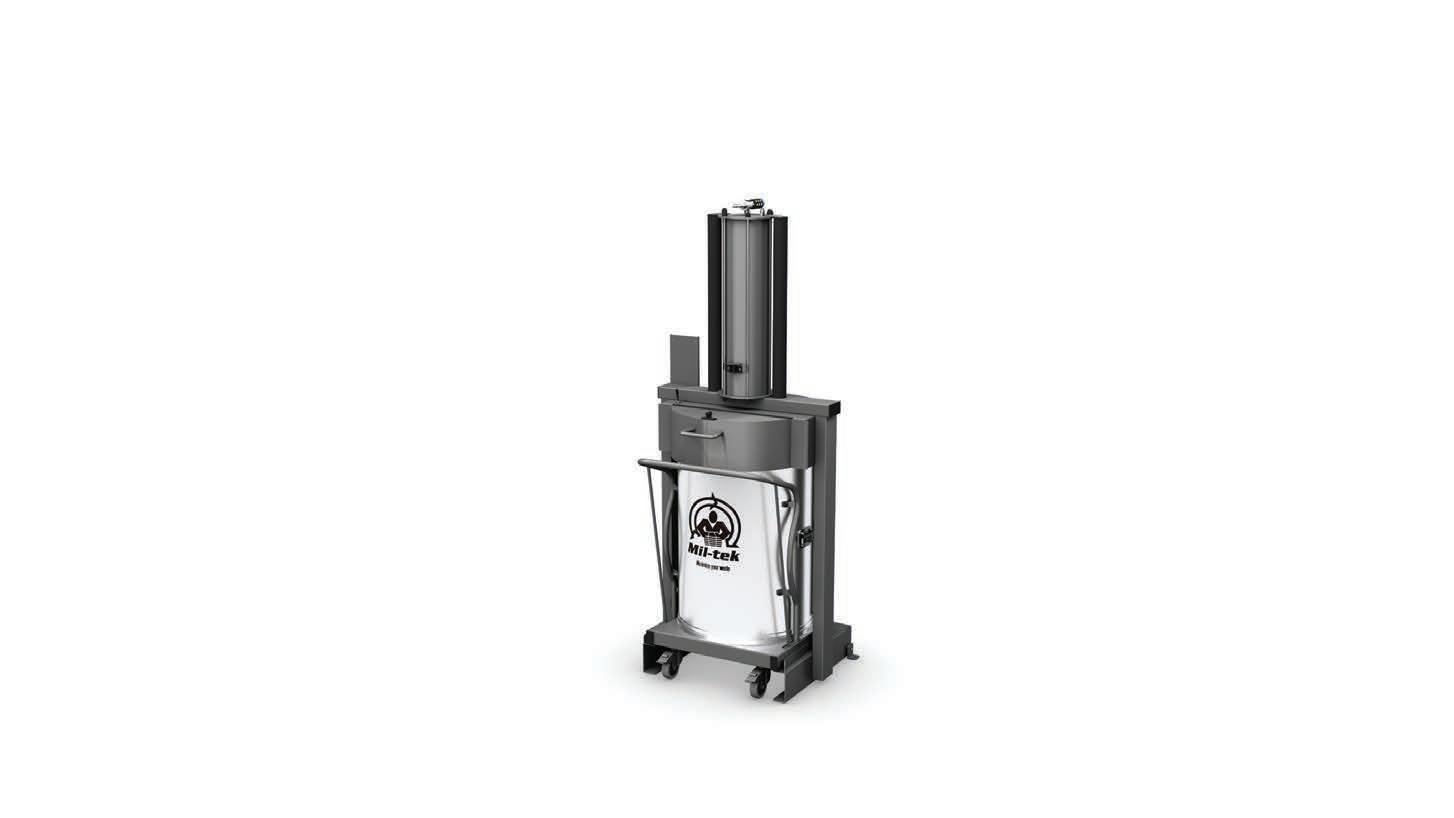
Model XP200S

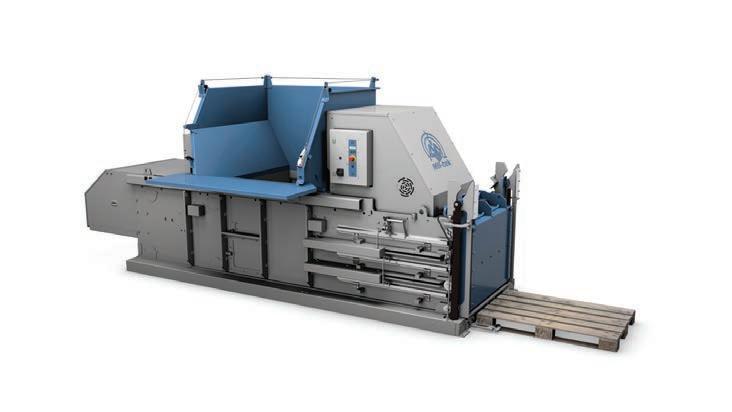
Unit
Name:
Daily news updates at www.insidewaste.com.au // Product Profiles - Balers and Compactors
Dimensions: (H x W x D) 2025 x 810 x 779 (mm) Weight: 150 kg Drive Type: Pneumatic (Air-powered) Motor: N/A Rotor diameter/lengths/speed: Speed (slow/high): 12 to 15 seconds Suitable material: General Waste No. of units in range: 3 Throughput: Finished product size: (H x W x D) 2025 x 810 x 779 (mm) Options/Extras:
Mil-tek Phone Number: 1800645835 Webpage: www.miltek.com.au Email: jason.campbell@miltek.com.au
Unit Dimensions: (H x W x D) 2215 x 1550 x 4850 (mm) Weight: 5200 kg Drive Type: Hydraulic Motor: Rotor diameter/lengths/speed: Speed (slow/high): Pressing cycle (sec.) 27-52 Suitable material: Cardboard/Plastic/General waste No. of units in range: 1 Throughput: Finished product size: (H x W x D) 2215 x 1550 x 4850 (mm) Options/Extras: Name: Mil-tek Phone Number: 1800645835 Webpage: www.miltek.com.au Email: jason.campbell@miltek.com.au
Unit Dimensions: 12mL x 2.6mW x 3.2mH Weight: 32ton with Oil and Material Capacity (in weight): Cardboard & Paper up to 21T & 26T per hour respectively Finished product size: Export Quailty Bales – Maximise transport 1.1m by 1.1m by adjustable length – typically 1.8m 1 ton Bales No. of units in range: Powerpacks available tailored to your operation, Typical powerpacks, 120hp 10~12t/h real world performance, 180hp 18t/h real world performance - 20t/h with VFD Smaller Frame sizes offering smaller Output Bale Sizes available for smaller through put and operations Options/Extras: VFDs available for Soft start function and increase throughput Price: Please Contact for tailored Solution More: Main Cylinder Pushing force – 115 Tons Hydraulic System Design – Free Flow Ideal with Regenerative bypass on main cylinder for optimal cycle times Hydraulic filtration – Independent Filtration and cooling circuit (10-micron filtration with Ferrous removal) Hydraulic Monitoring – Oil Level & Over Temperature sensors Hydraulic Oil – ISO - 68 Electrical safety – Category 3 electrical safety on 3 phase supply Main Motor(s) – MEPS Compliant Motors Motor Control – Star / delta switching on each main Motor (VFD and soft start options also available) Control system – PLC with HMI TouchscreenMATERIAL RECOVERY SOLUTIONS Godswill GB1111F-Series Channel Balers GET YOUR PRODUCT PROFILE IN NOW! For more information on how to make the most of this opportunity contact Chelsea Daniel-Young: Email: Chelsea.daniel@primecreative.com.au Ph: 0425 699 878 If you wish to let our readers know your latest machinery and its capabilities, then you should be in Inside Waste’s Product Profile section. GET YOUR PRODUCT PROFILE IN NOW! For more information on how to make the most of this opportunity contact Chelsea Daniel-Young: Email: Chelsea.daniel@primecreative.com.au Ph: 0425 699 878 OCTOBER/NOVEMBER 2022 INSIDEWASTE 65
Waste has an image problem
EVENING SIR
Education is the key. That’s the gist of the conversations I’ve been having down here lately with those at the Club.
Everybody could do with a little encouragement to learn something new. However, learning something new and ignorance are two different beasts and I fear the latter is one of the main culprits when it comes to making the waste industry, shall we say, more palatable to the general public.
When one thinks of waste, images that are conjured up include rotten food, sewage, old meat trays, and cans and bottles littering the premium waterways, beaches and roads of local towns and conurbations.
And I won’t even go into the construction and demolition left overs, which currently makes up most of the waste.
Why ignorance? One of the hard sells in this vast barren expanse is trying to explain to the public at large, that not every solution to their waste woes has a downside.
Rubbish by its very nature is
something even the chimney sweeps from Dickensian-era London would turn their collective noses up at. The very word – and every antonym in between –makes the collection, storing, disposing of and even repurposing, seem like a messy business.
But it doesn’t have to be. You don’t have to be a hawker at Camden Market to sell the idea that waste is not what is used to be – you just need a little bit of public relations and common sense. But a bit like Chamberlain circa 1939, nobody wants to put their hand up – they’re just hoping either the perception will disappear, or that people will suddenly come to their senses. Not happening.
“Give me an example?” I hear you say. Well, there are several, but I’ll give you the most glaringly obvious. An Energy from Waste plant. Every uber greenie from Sydney to Stockholm, from New York to Nice, and Tokyo to Tipperary will hold their heads in the hands and have a mini meltdown at the very mention of such technology. Why?
Because the way you convert the waste
to energy is via incineration – a dirty word if there ever was one.
Now, Sir, you and I are both old enough to remember accompanying Her Majesty to the opening of the Sydney Opera House in ’74. As we landed that fine sunny Spring day in October, we both commented on the faint smell of smoke in the air. A bushfire perhaps? Maybe a ‘litter reduction’ enterprise being carried out in one of the city’s national parks by the local fire brigade? As my quick query to the local constabulary soon discovered, we had landed on what at the time was a fine tradition – the backyard burn-off whereby residents would burn excess rubbish in their own property. Of course, this tradition has long since been outlawed due to pollution issues, however what was the name of the device that was used as a receptacle for that burn off? An incinerator! And I can’t help but think that those opposed to EfW facilities hear that word and conjure up dark, black, carcinogenic clouds of soot and smoke wafting across the sky. Nothing could be further
from the truth.
You know the technology must be pretty good if it is used as one of the go-to pieces of tech in parts of Germany, the Netherlands and Scandinavia – parts of the planet that have some of the strictest pollution and emission standards in the world.
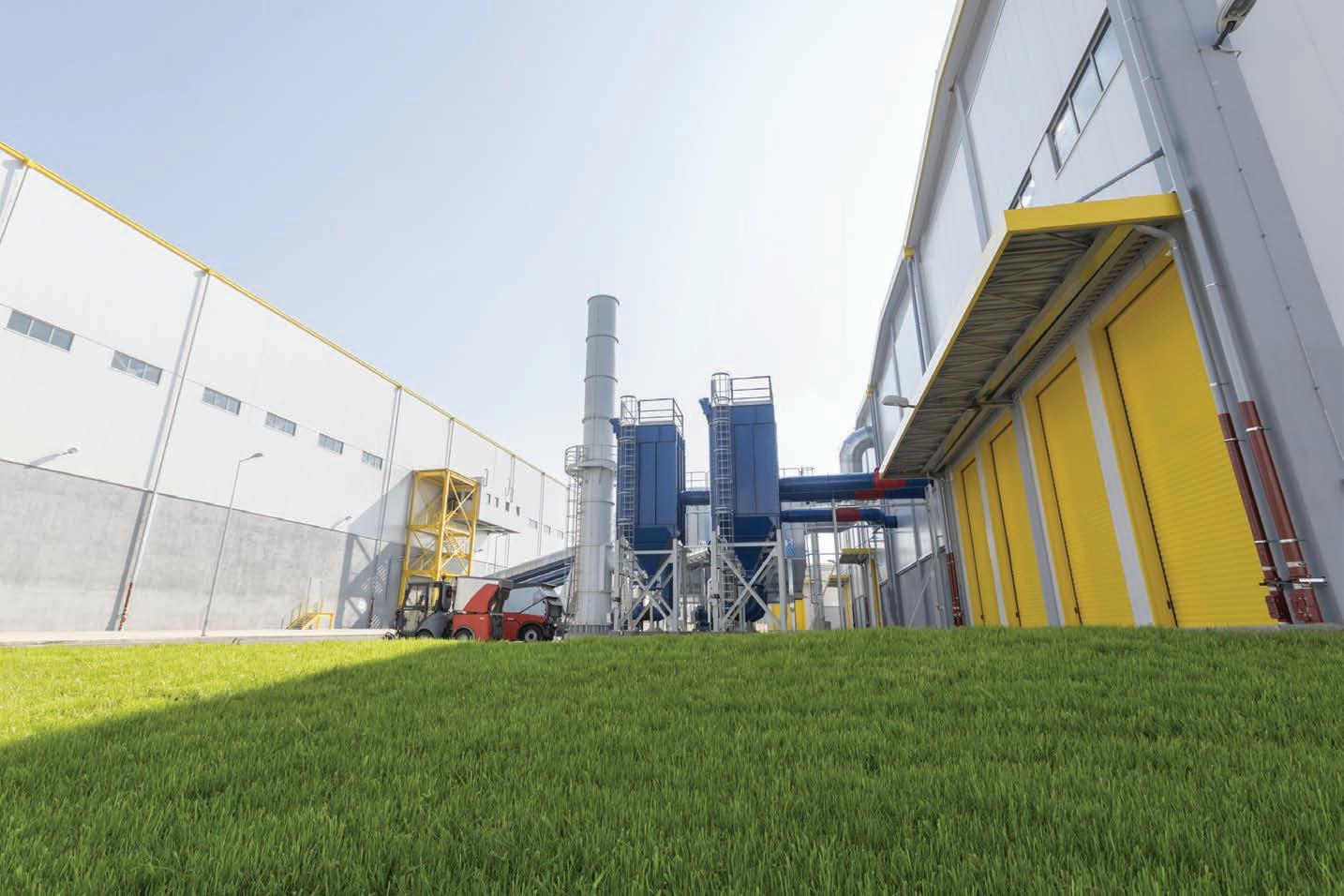
What I love is the way the politicians explain this to the people – not!
Being politicians, the only thing that counts is the next election cycle, and all they need is for something to be perceived to have certain characteristics – as opposed to actually HAVING those characteristics – for them to shut up shop.
Anyway, it is a hot button topic down here. It would be nice if those in the waste industry who hold a little bit of sway in the upper echelons of any government in this Commonwealth start bending the ear of those that matter so at least decisions (and election cycles) can be decided by using facts, not hyperbole.
Until next time.
Daily news updates at www.insidewaste.com.au66 INSIDEWASTE OCTOBER/NOVEMBER 2022 Wasted Space //
JB



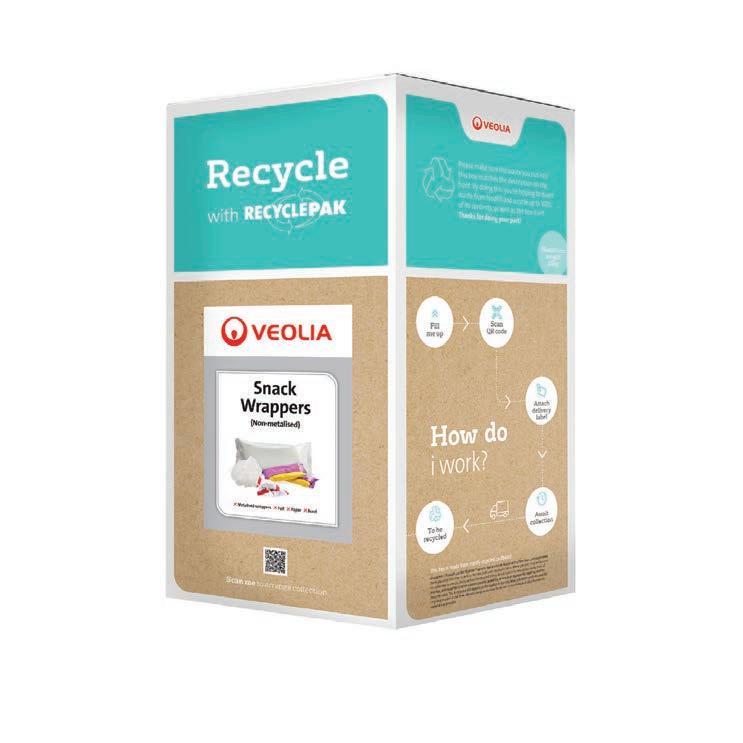
DELIVERING A GREENER FUTURE
STAR SCREENS WINDROW TURNERS
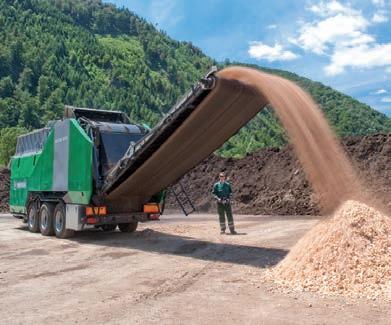




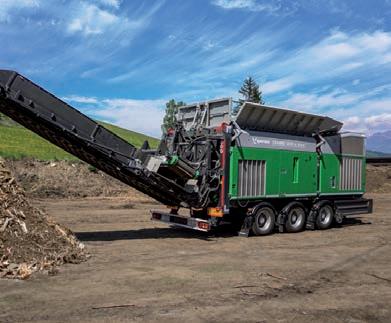
MULTI STAR
NEMUS

AXTOR
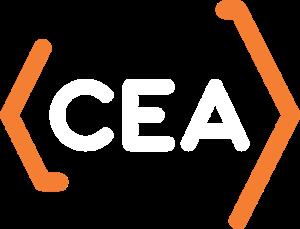
komptechcea.com.au 1300 788 757
Komptech CEA is a leading supplier of machinery and systems for the treatment of solid waste through mechanical and mechanical biological treatments, as well as the treatment of biomass as a renewable energy source. Komptech CEA is proud to provide innovative solutions for handling waste and biomass. Komptech CEA’s extensive range of products cover all key processing steps in modern waste handling. At Komptech CEA the focus is always on innovative technology and solutions ensuring maximum benefit to the customer. Like to know more? why not speak to one of our team today? TERMINATOR Where Function Meets Technology A slow-running, single-shaft shredder suited to all types of waste. CRAMBO Less Fuel, More Power Ideal for shredding all types of wood and green cuttings.
Screening with a Star Makes waste wood and biomass processing highly efficient. TOPTURN X The Ideal Combination of Performance and Design With a sturdy frame, powerful hydraulics and large drum, the Topturn X is ready to handle any work situation.
Robust and Reliable Combining the practice-proven virtues of its predecessors with new solutions for even greater performance.
Shredding and Chipping Made Easy One of the most versatile machines around for processing wood and green cuttings. SHREDDERS TROMMEL SCREENS























































































































































































































































